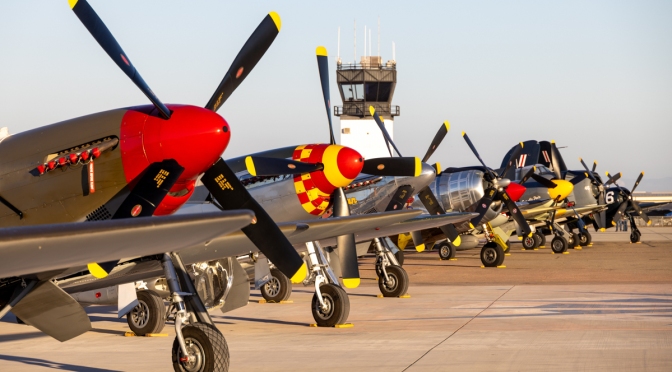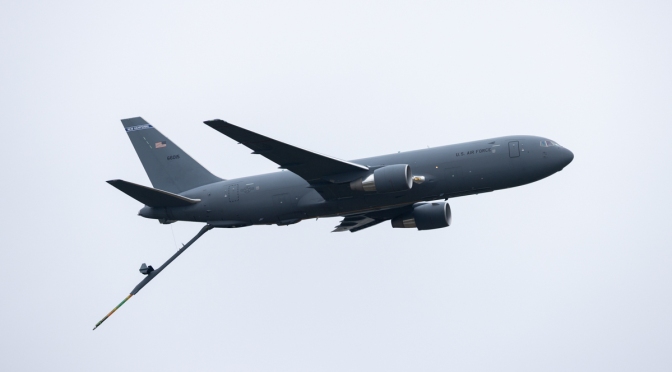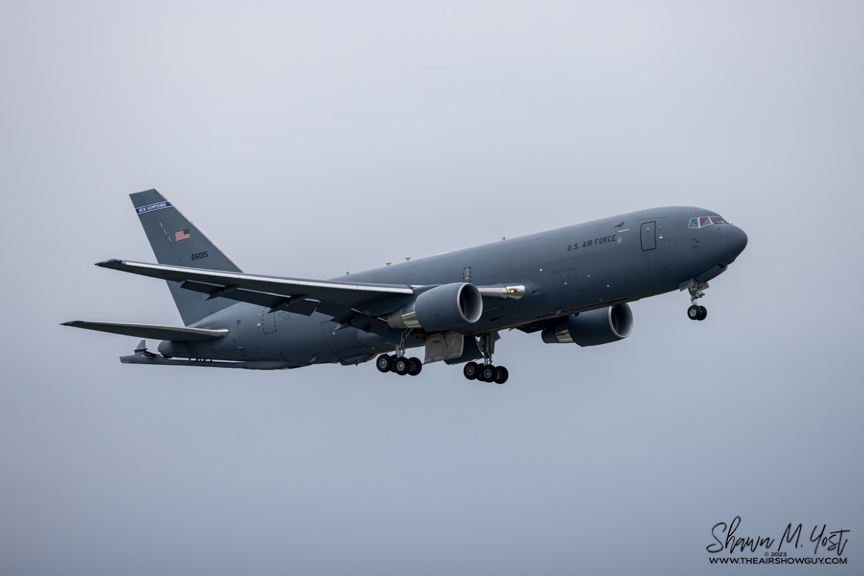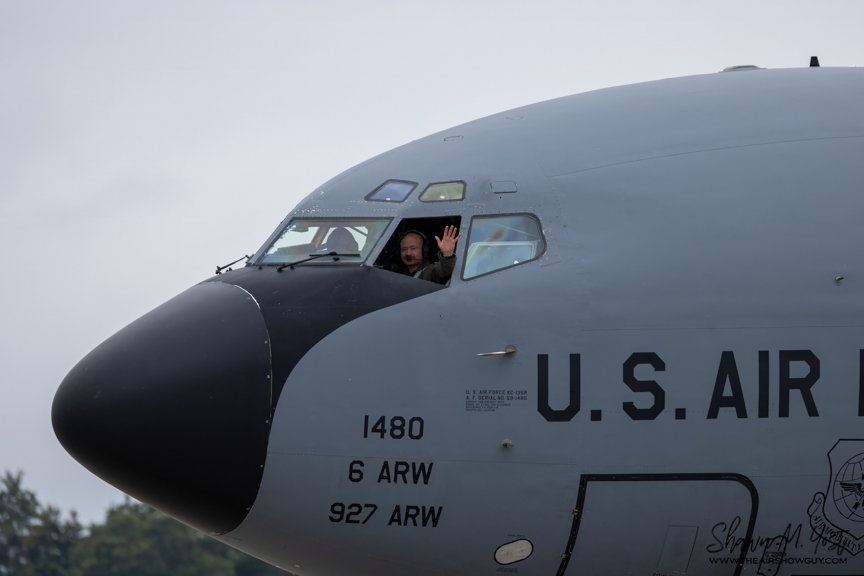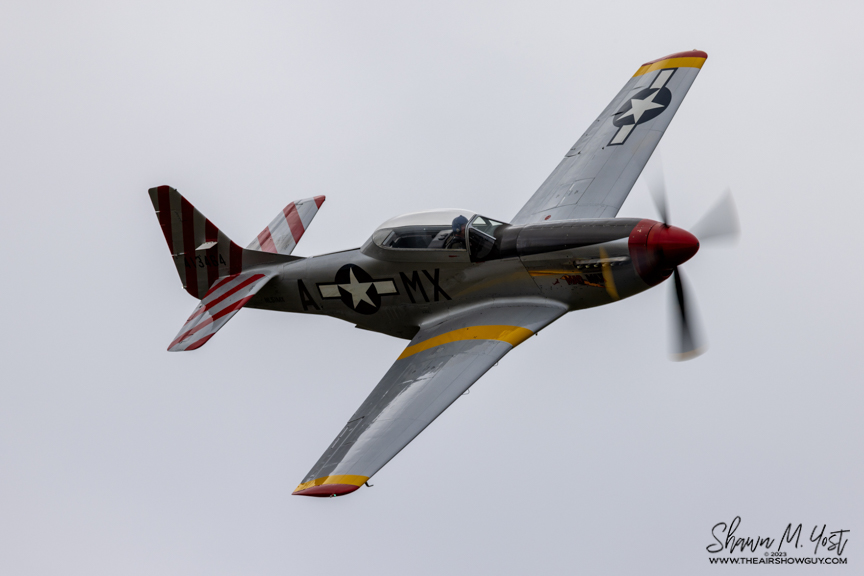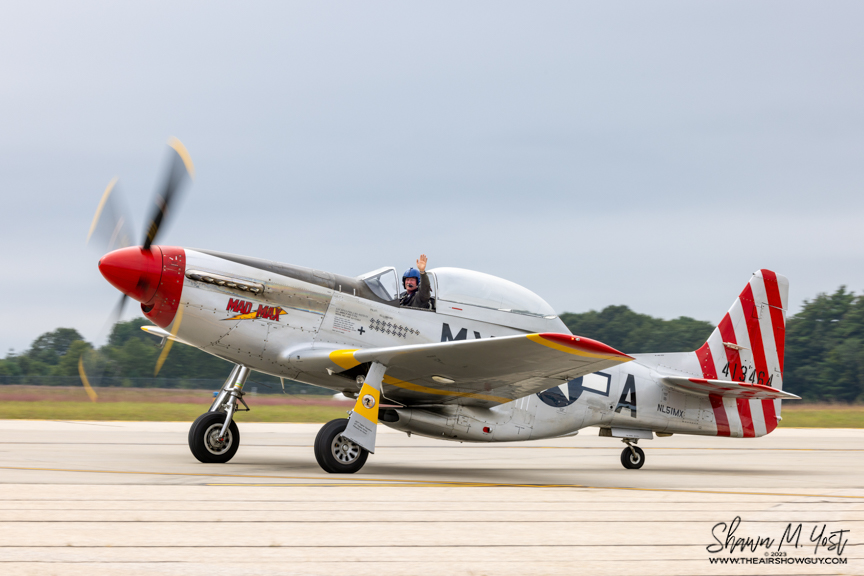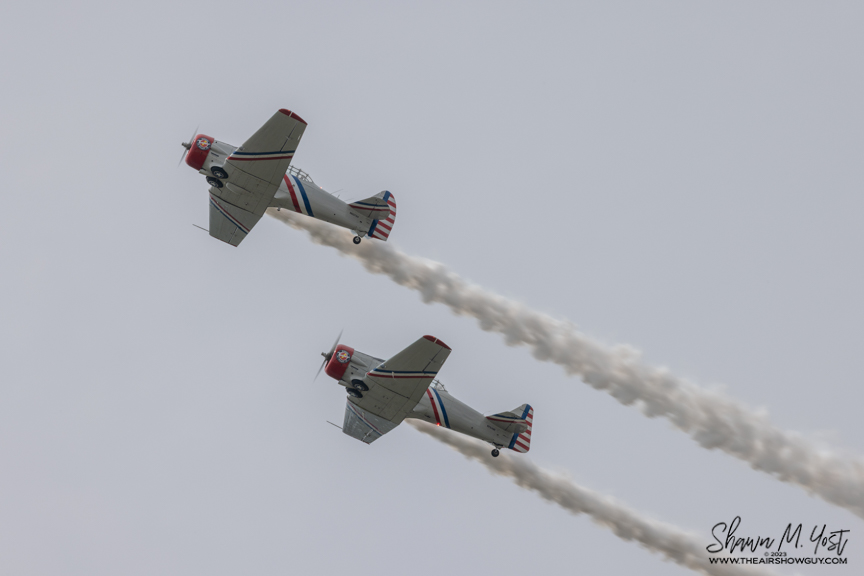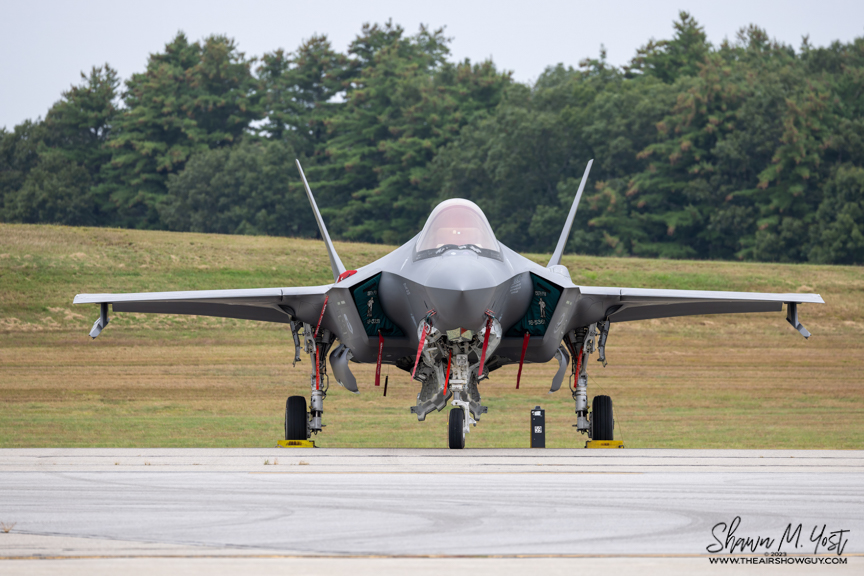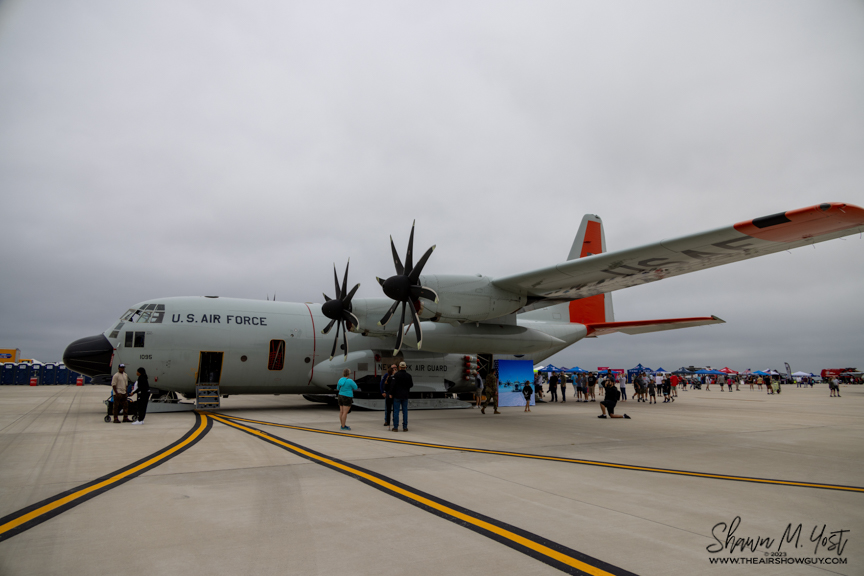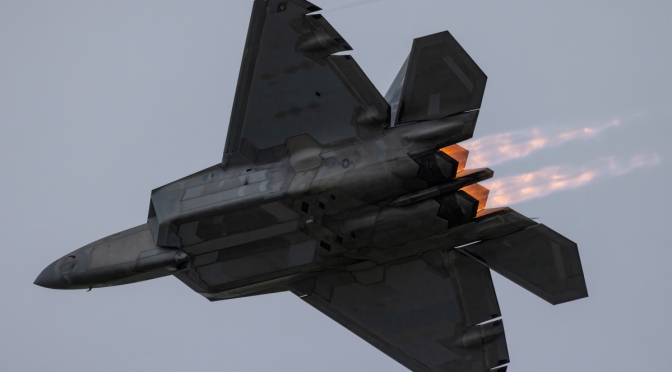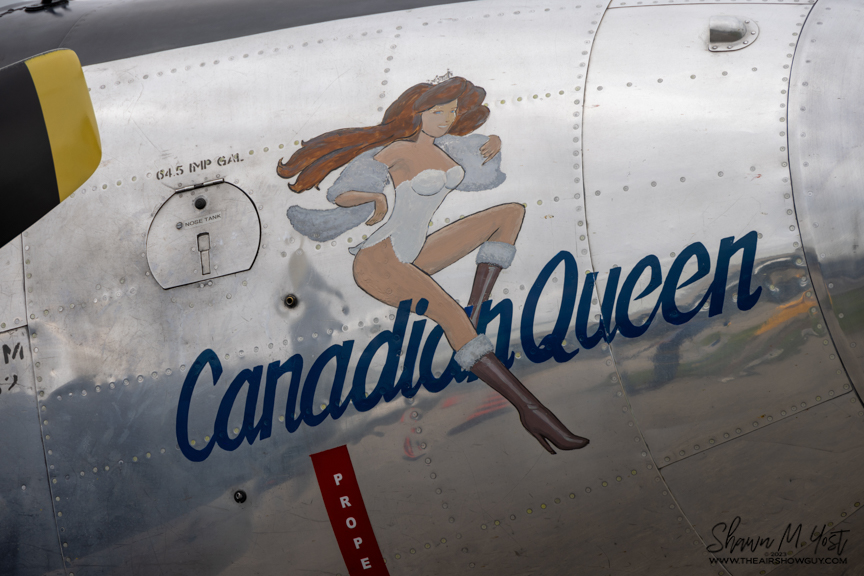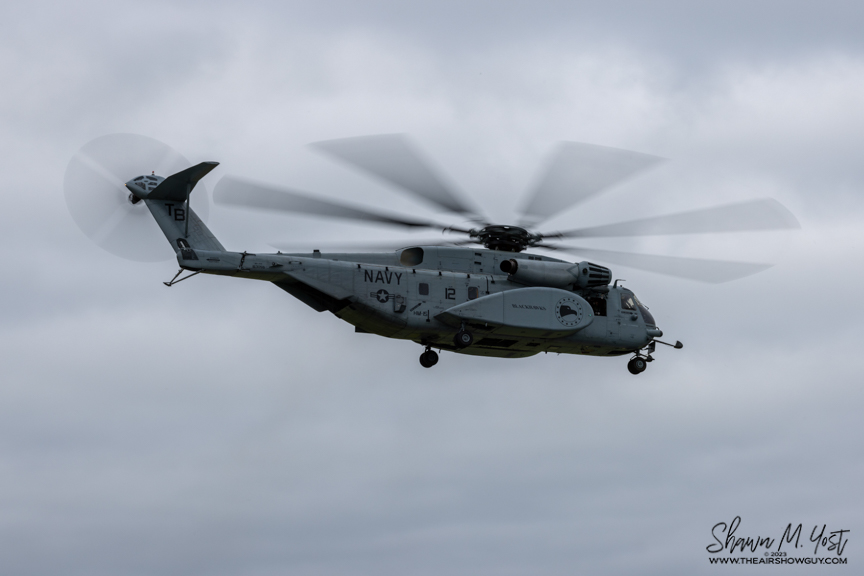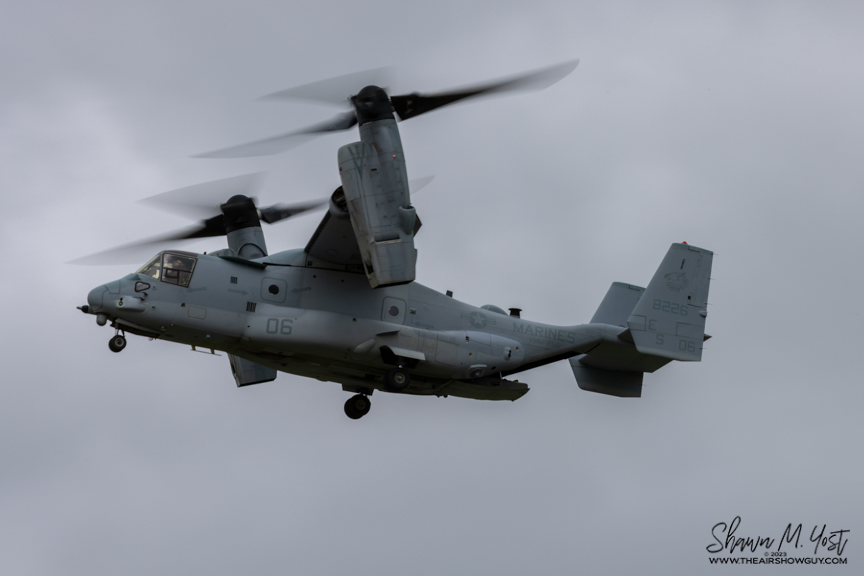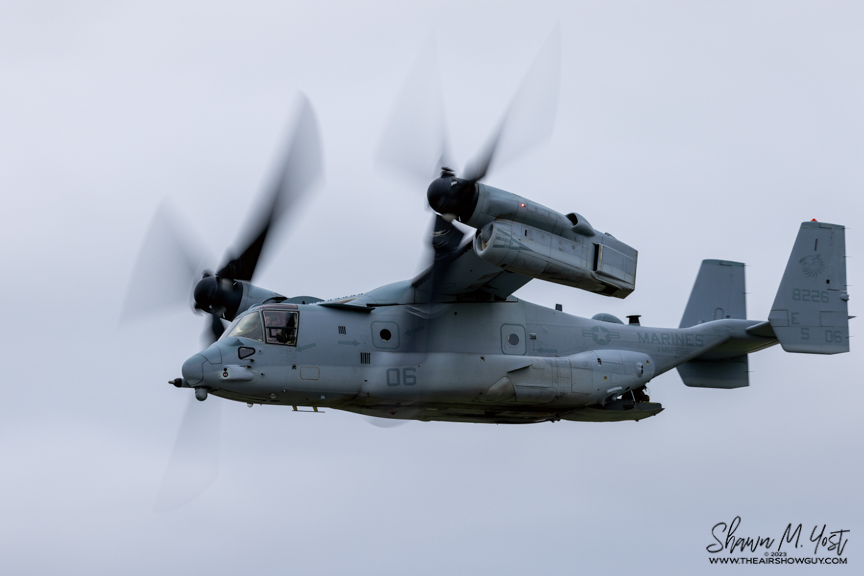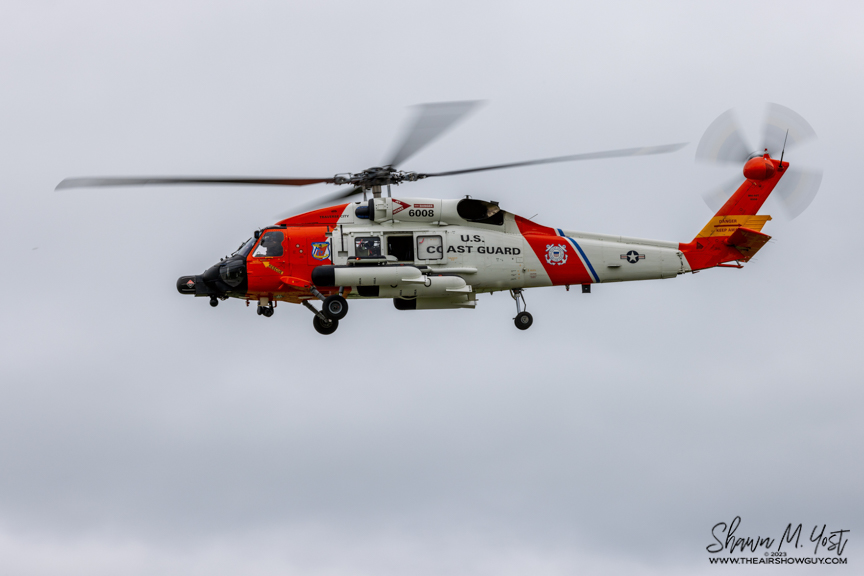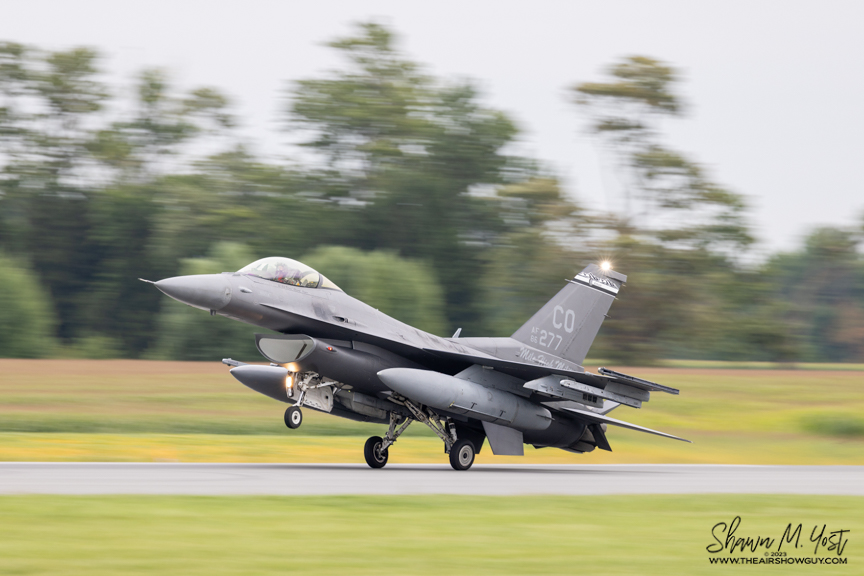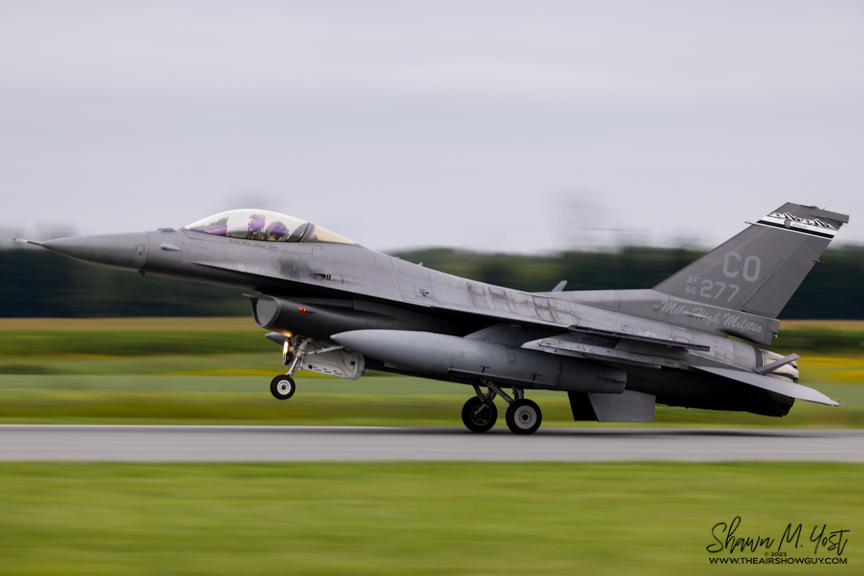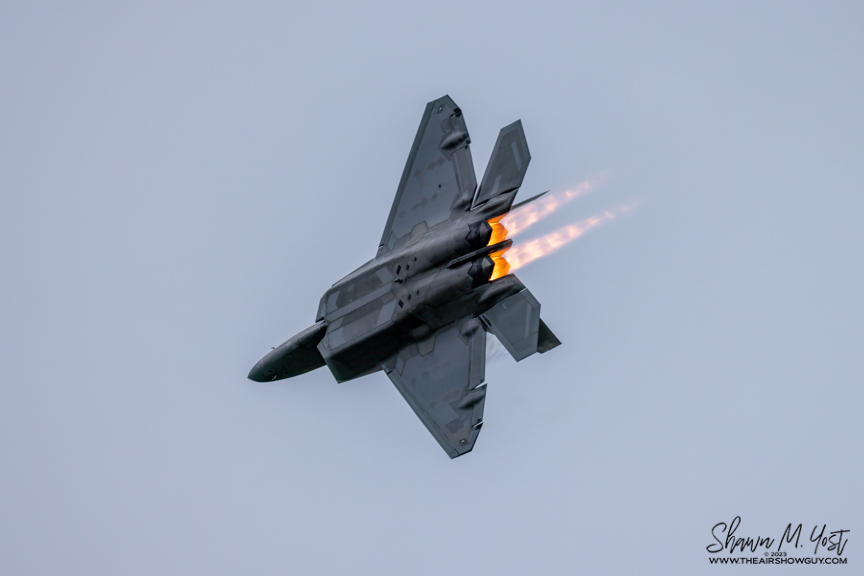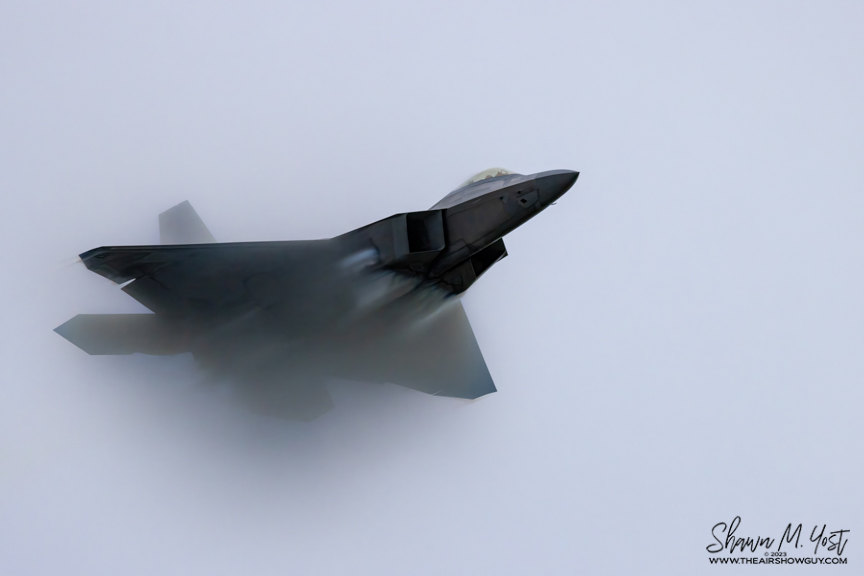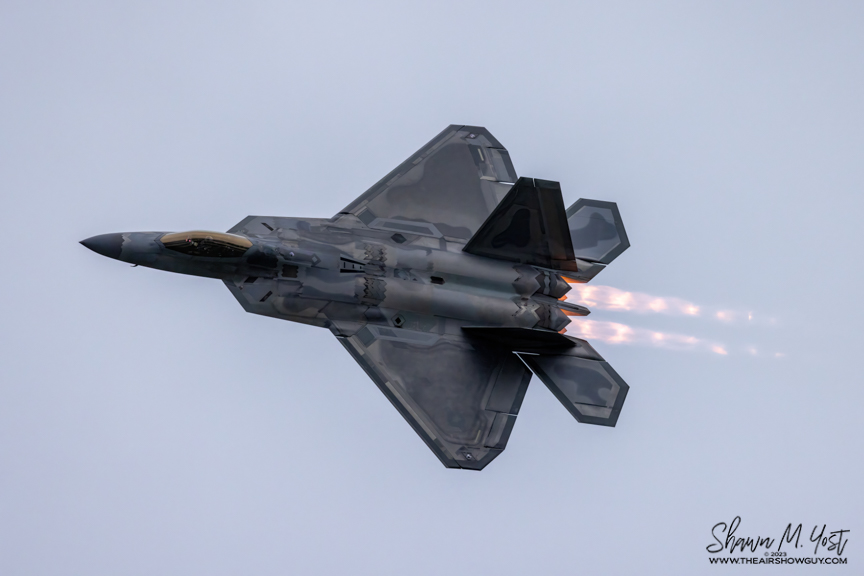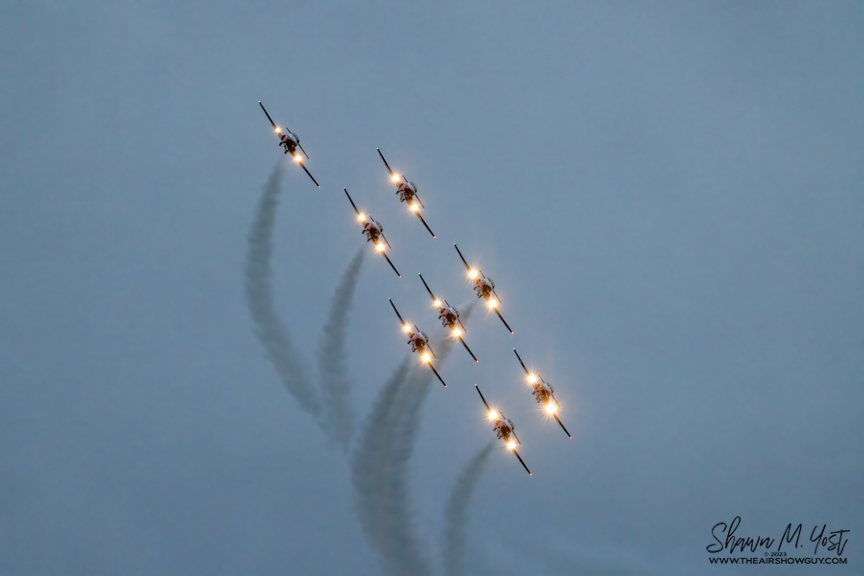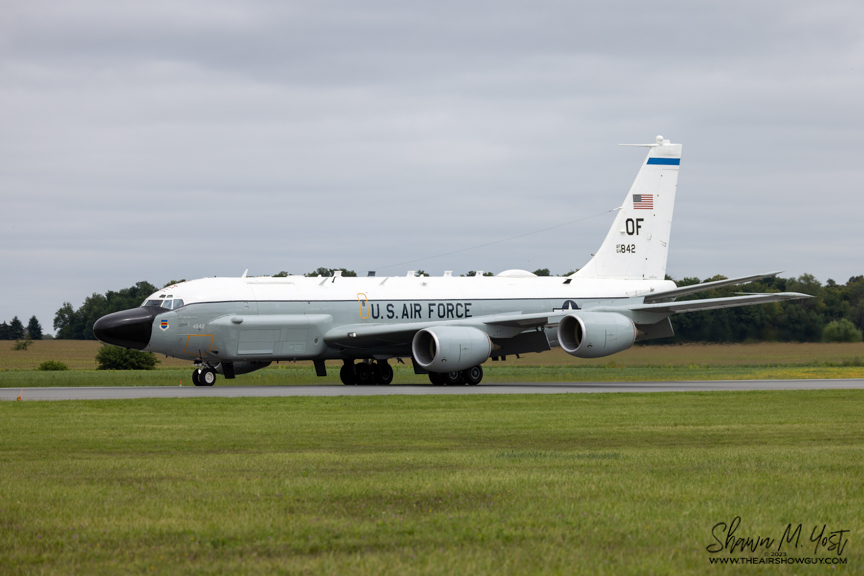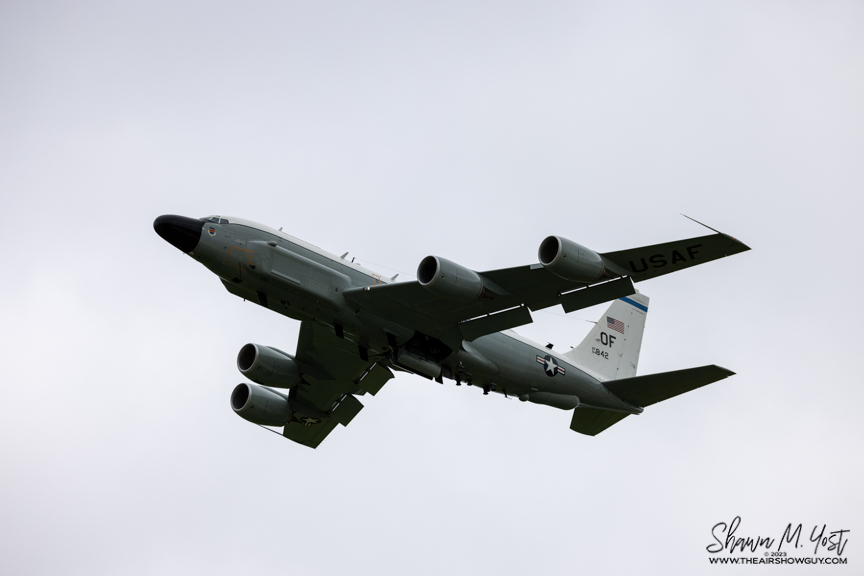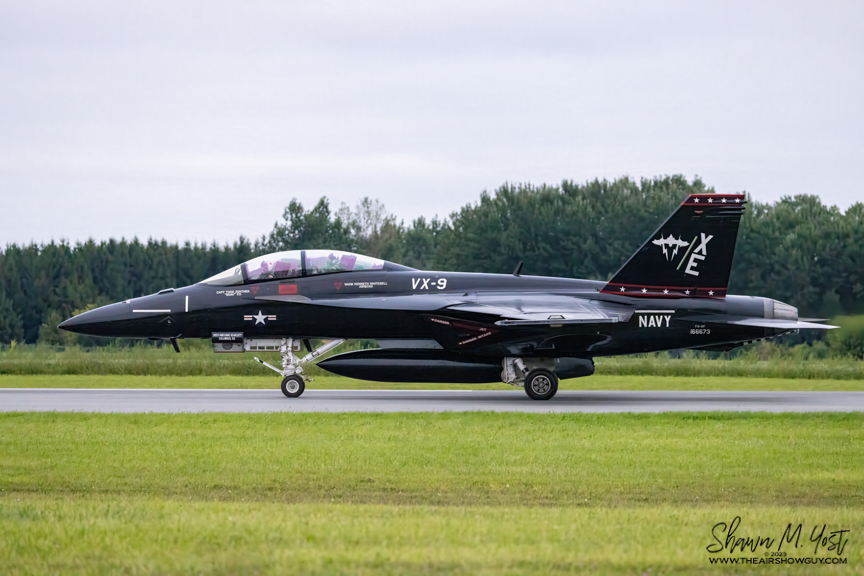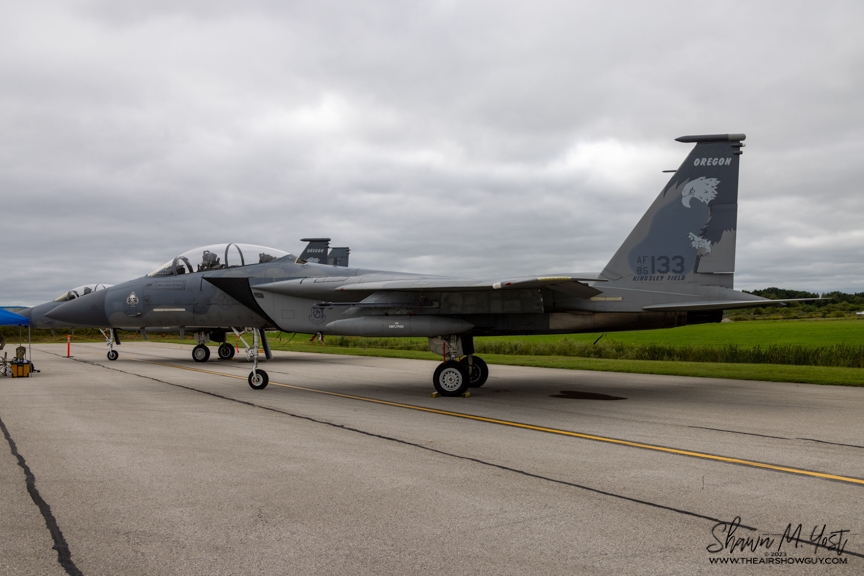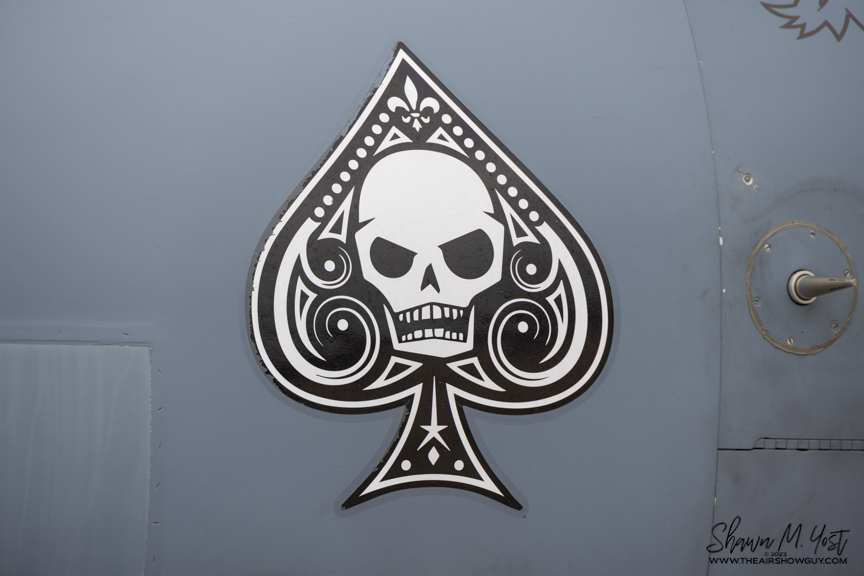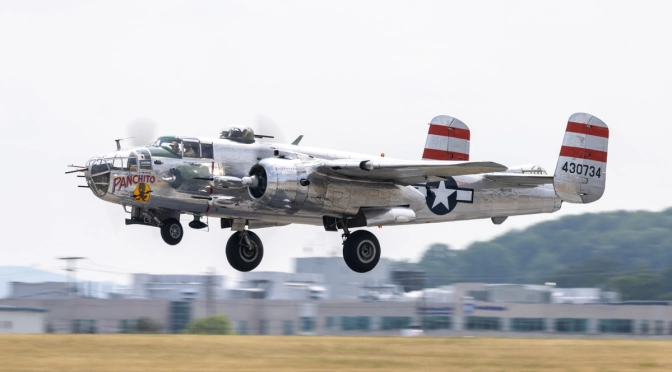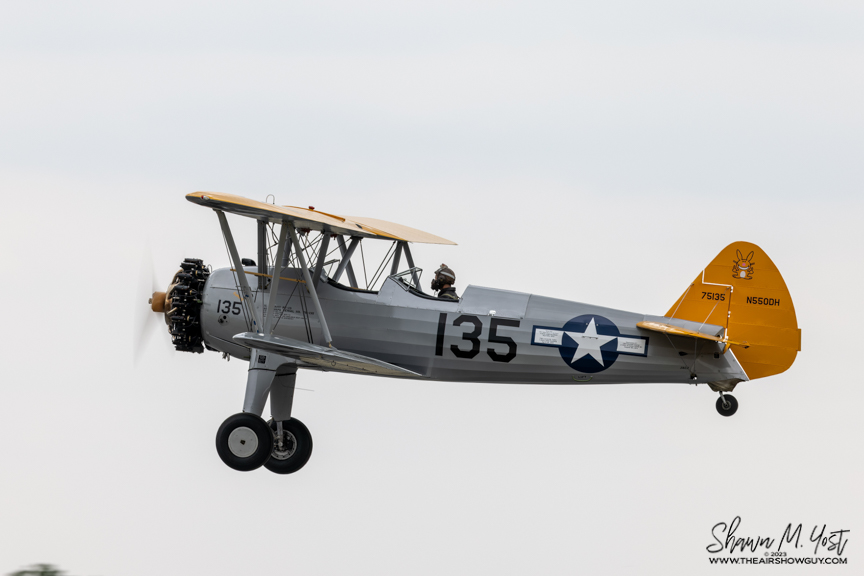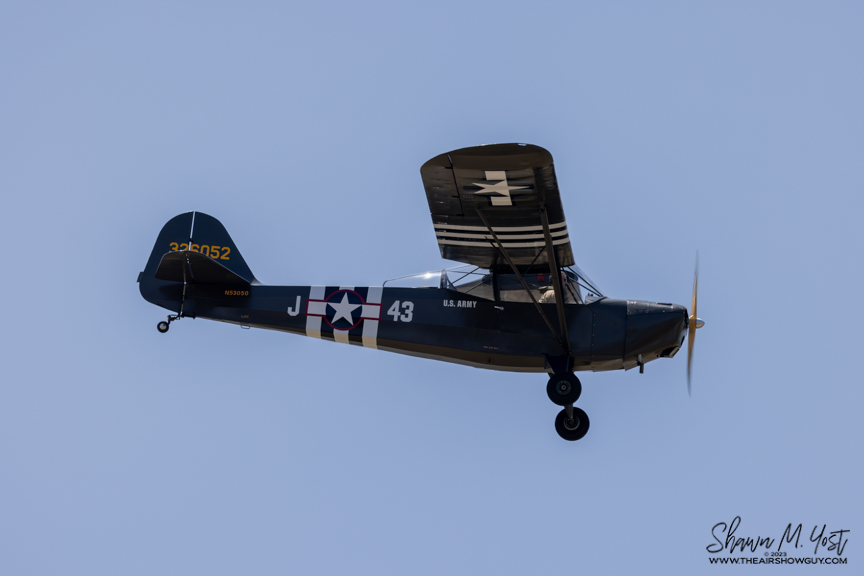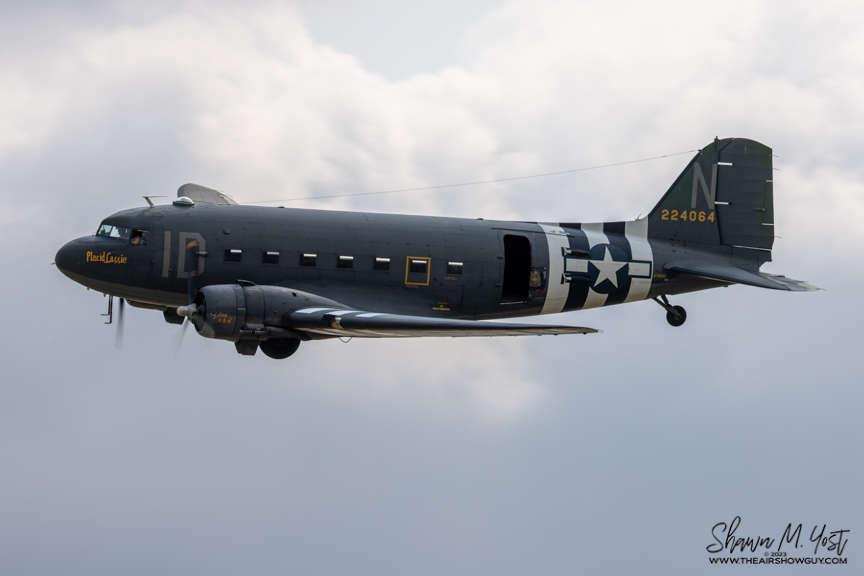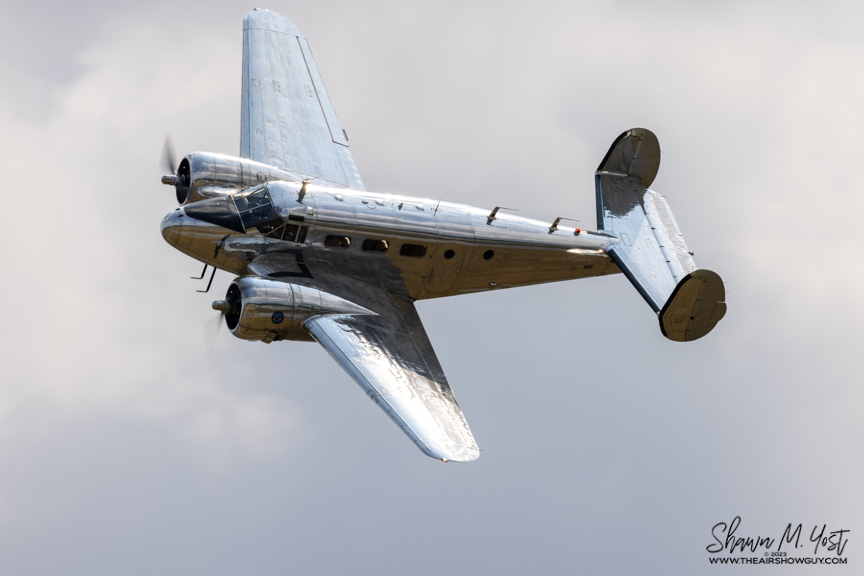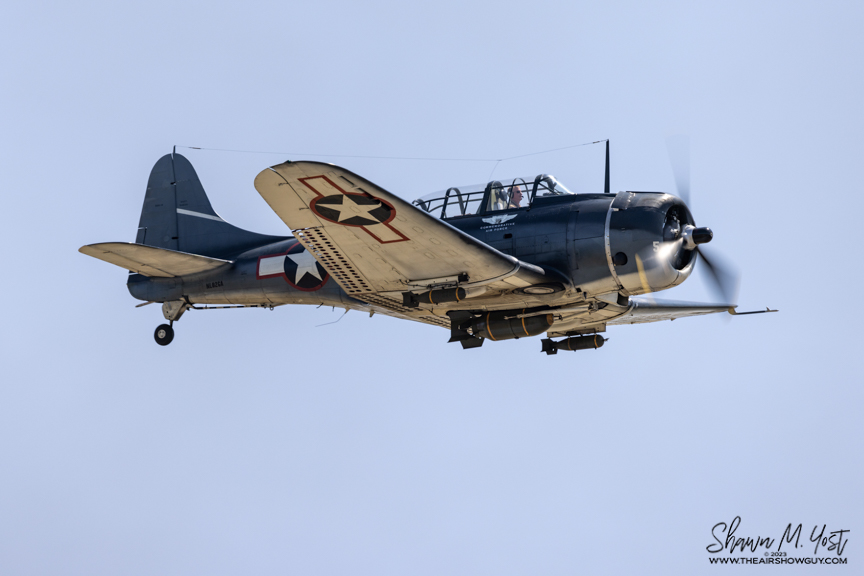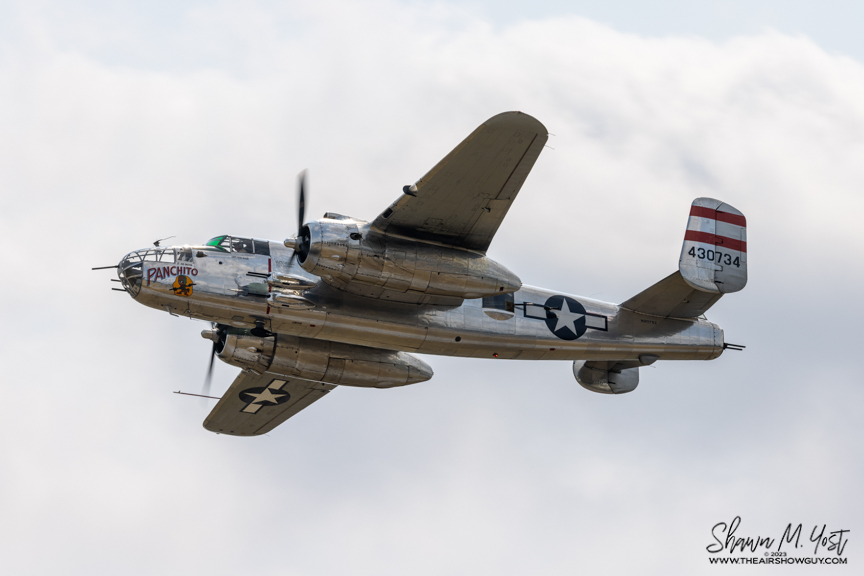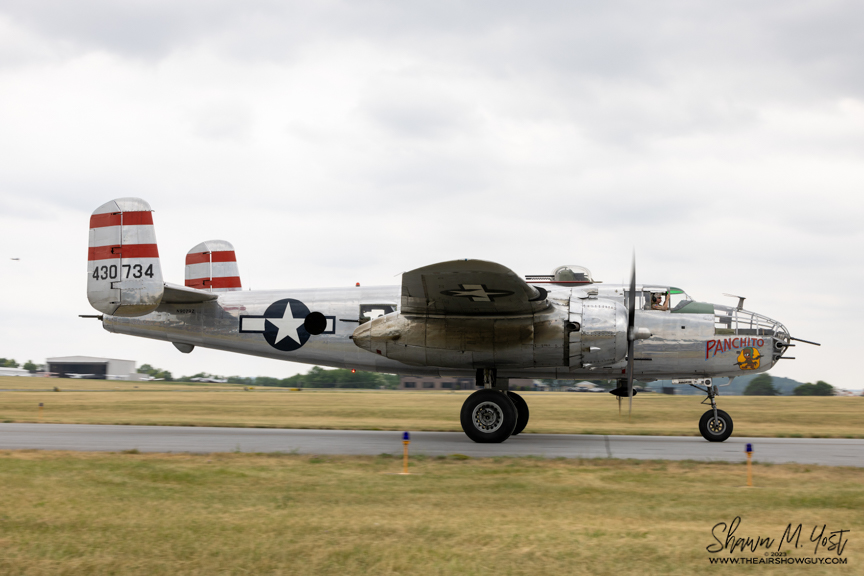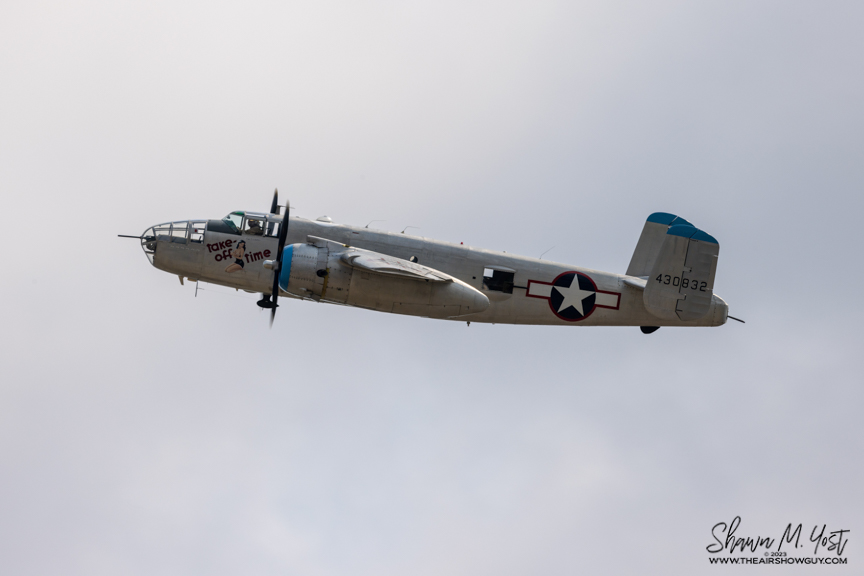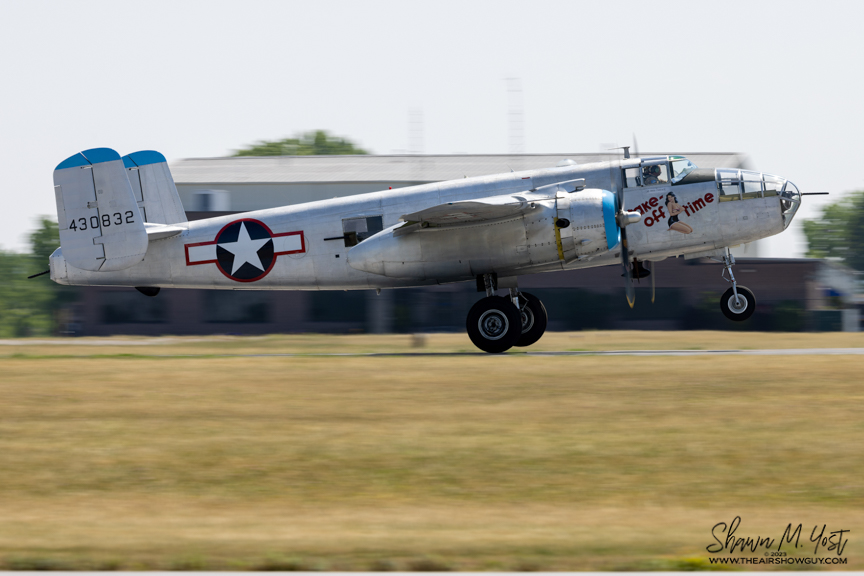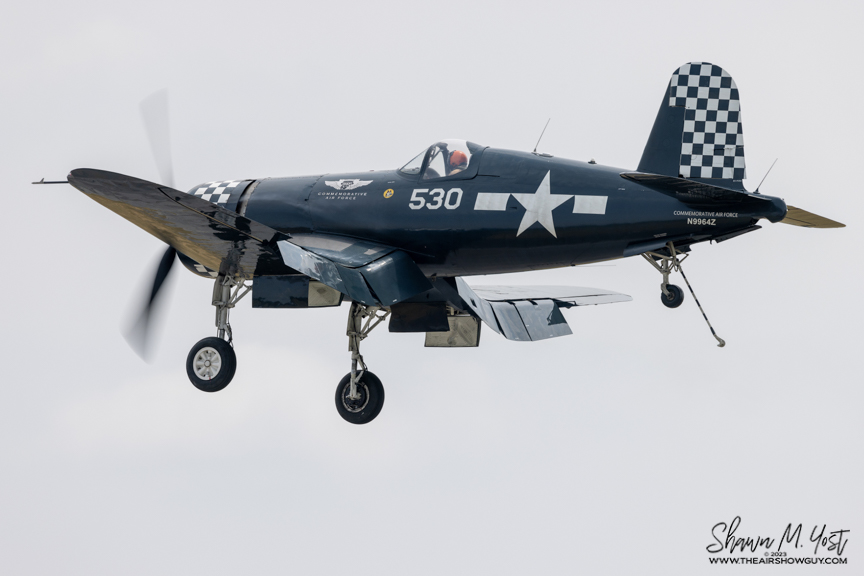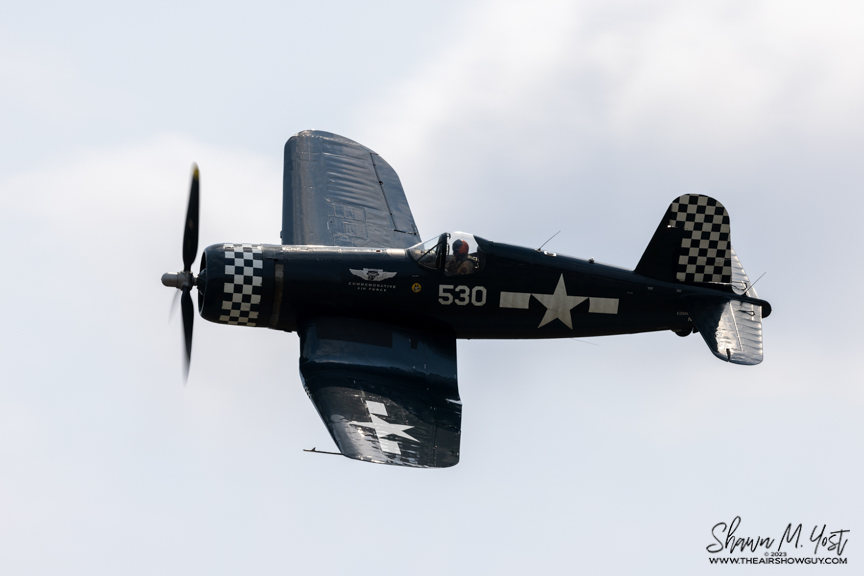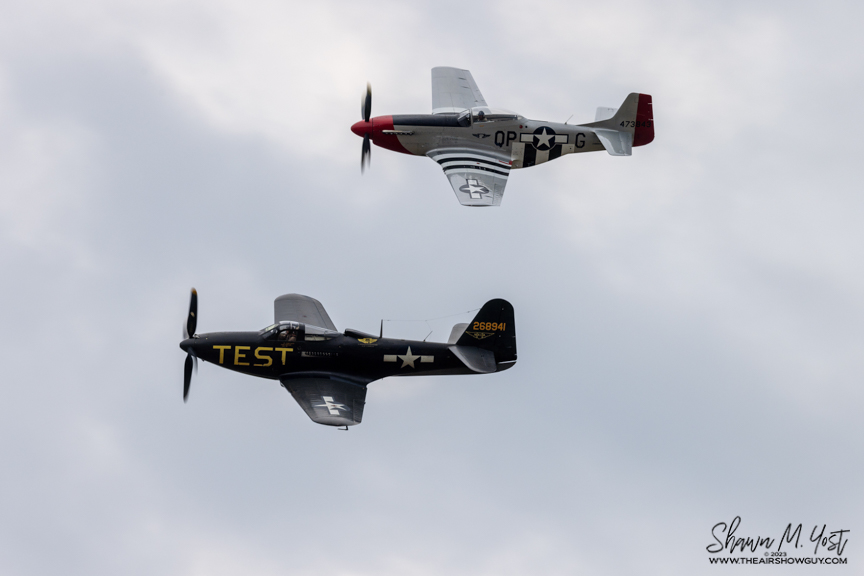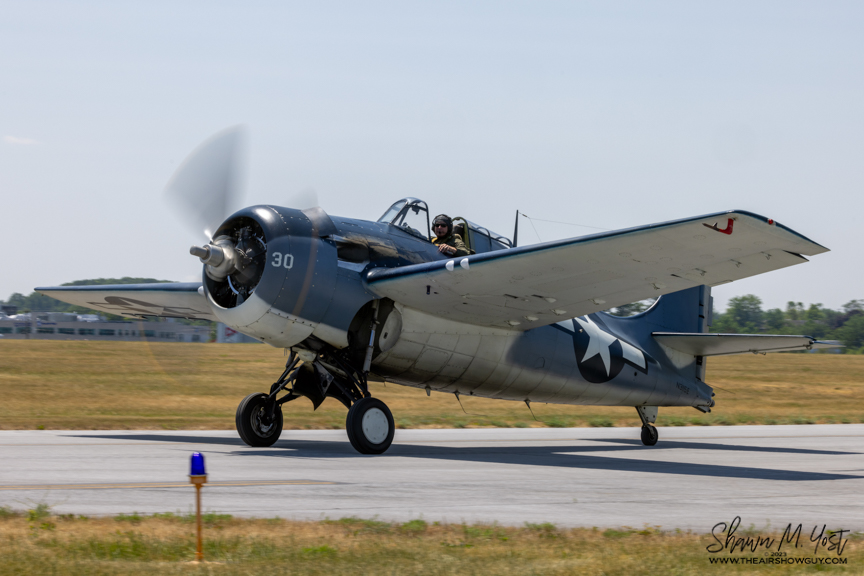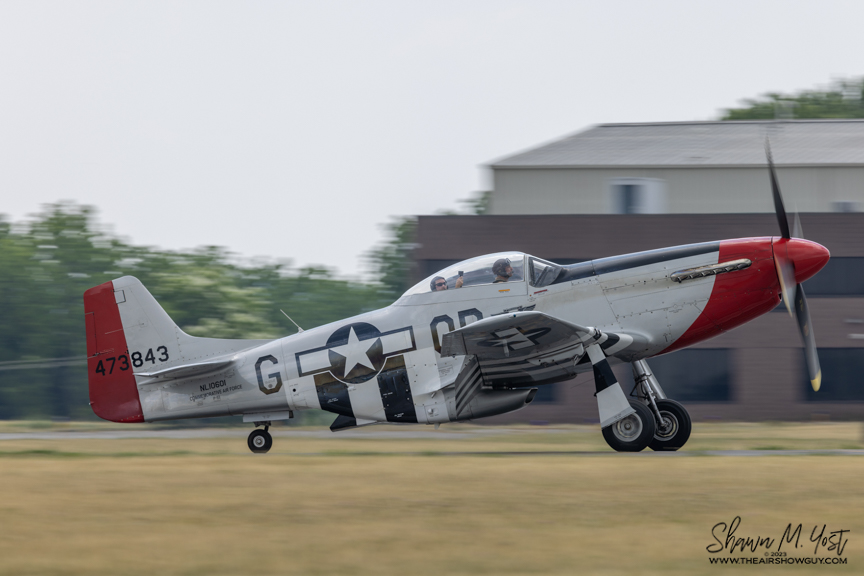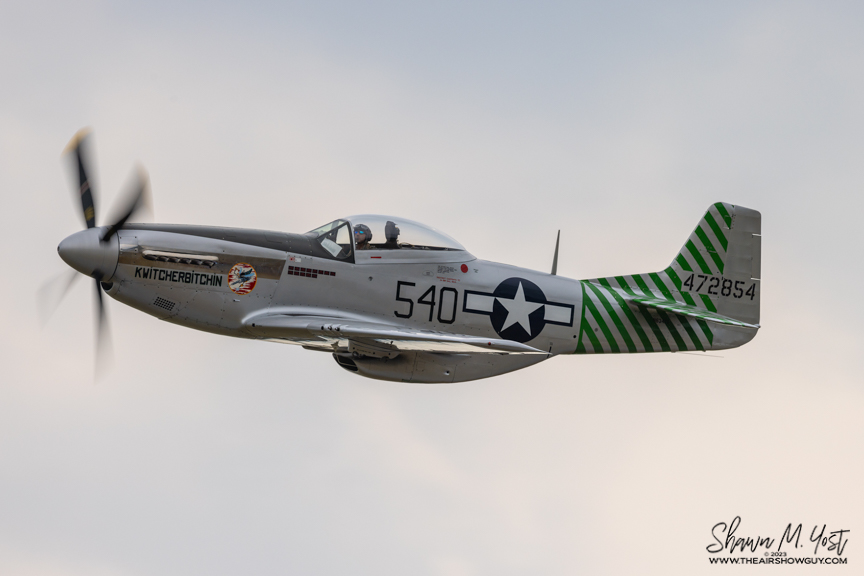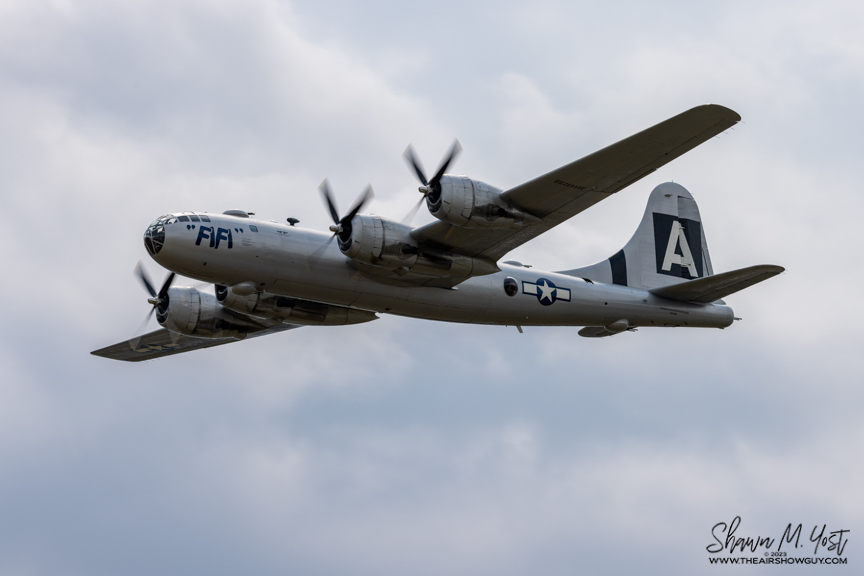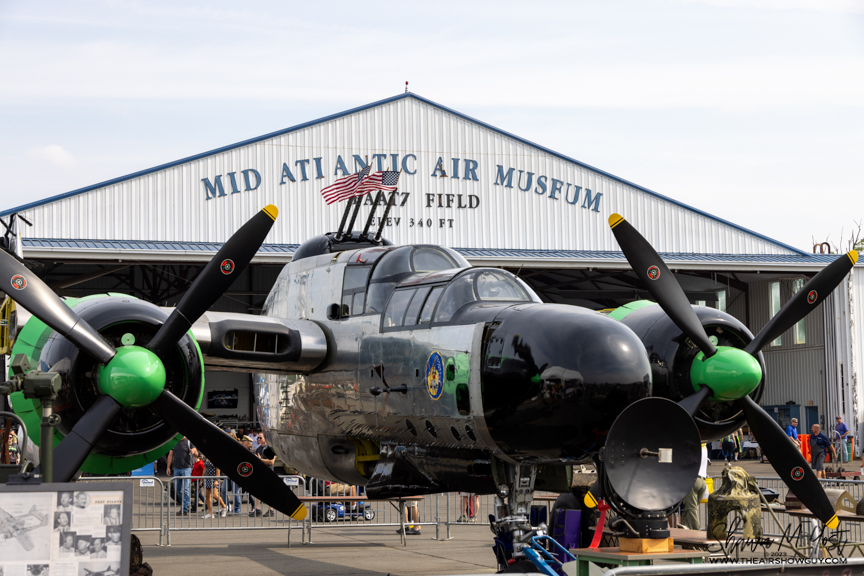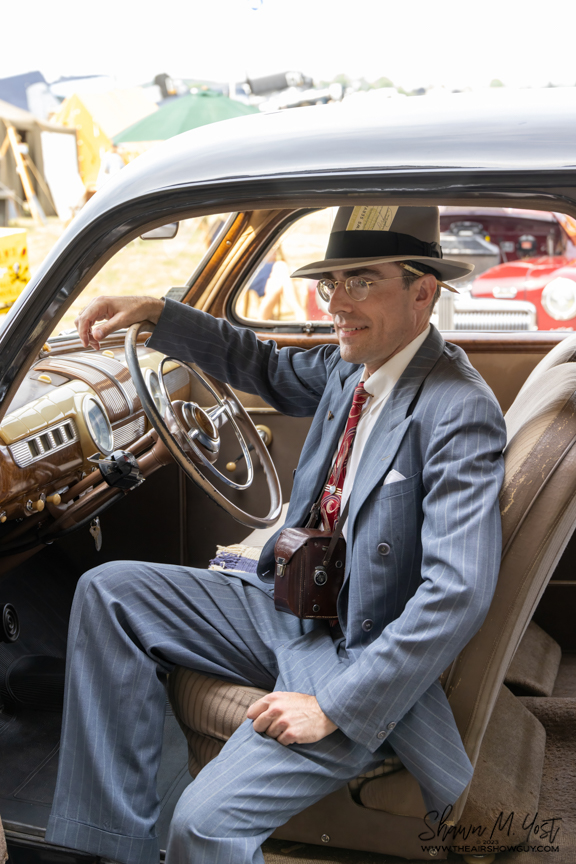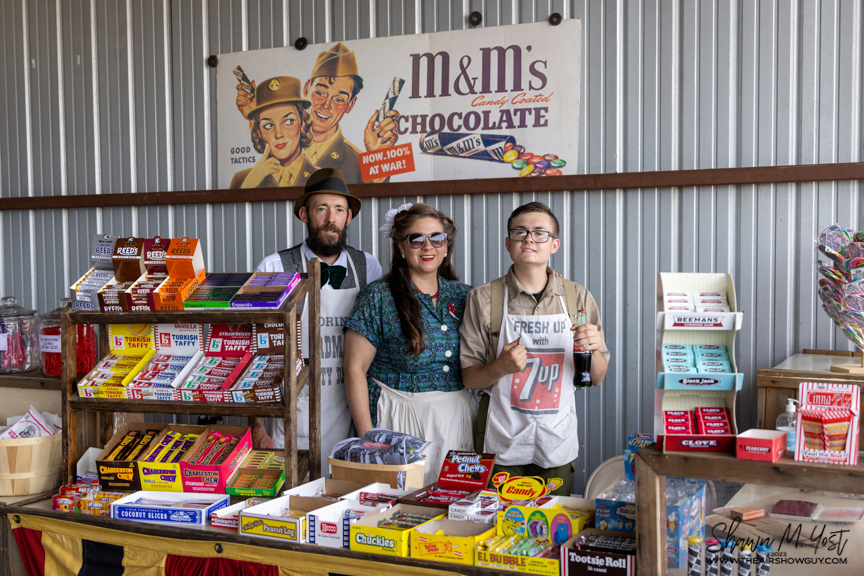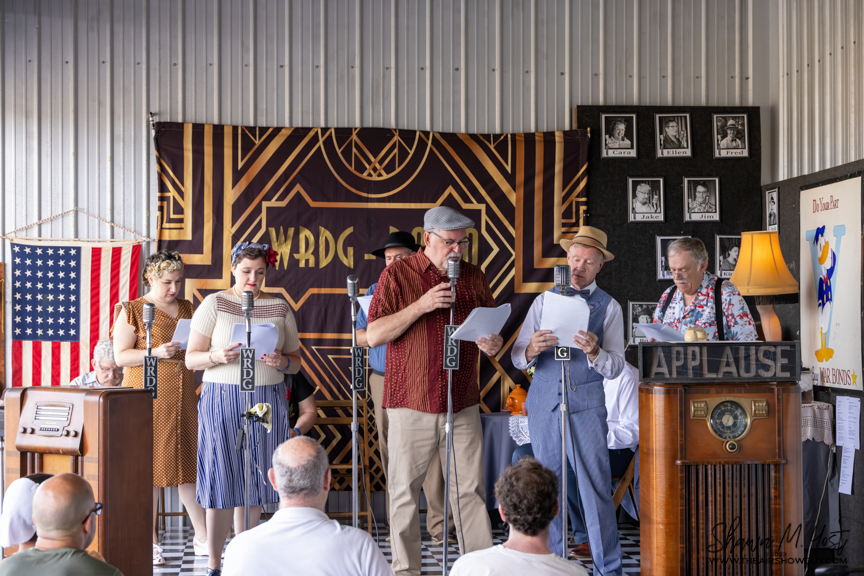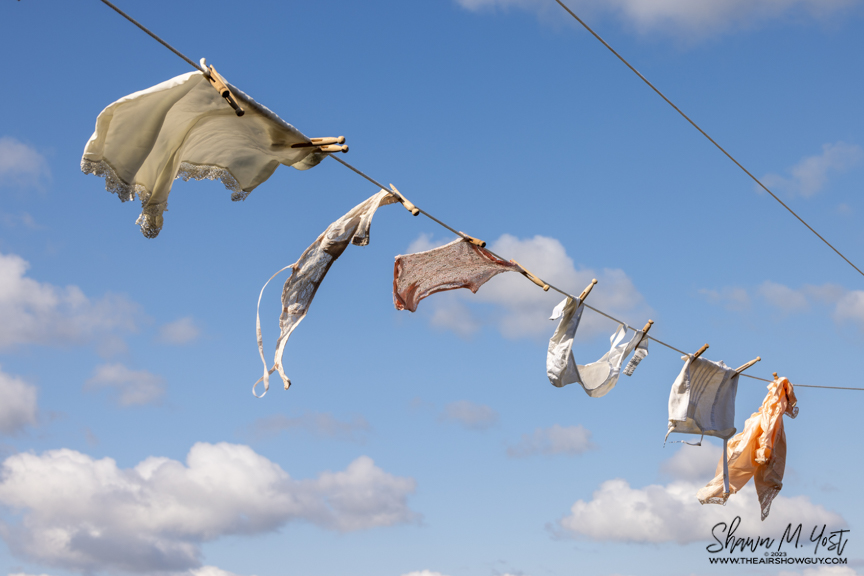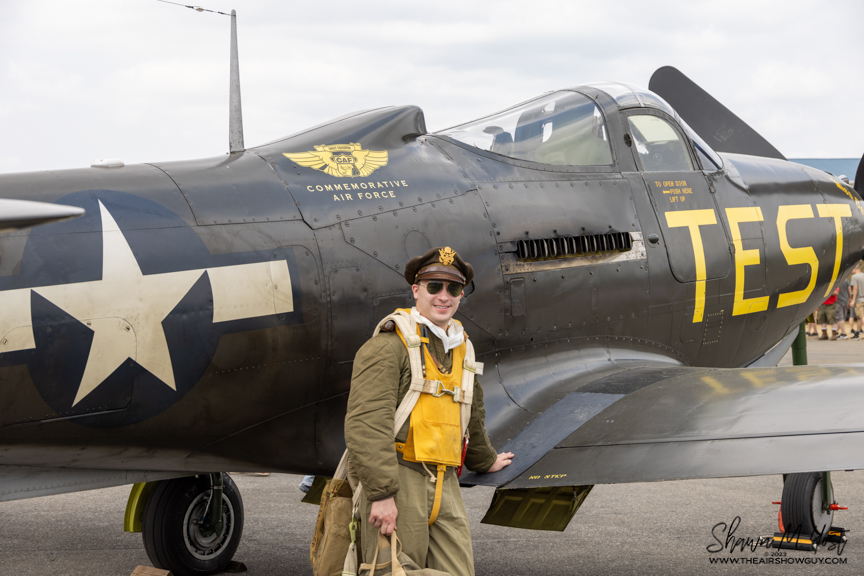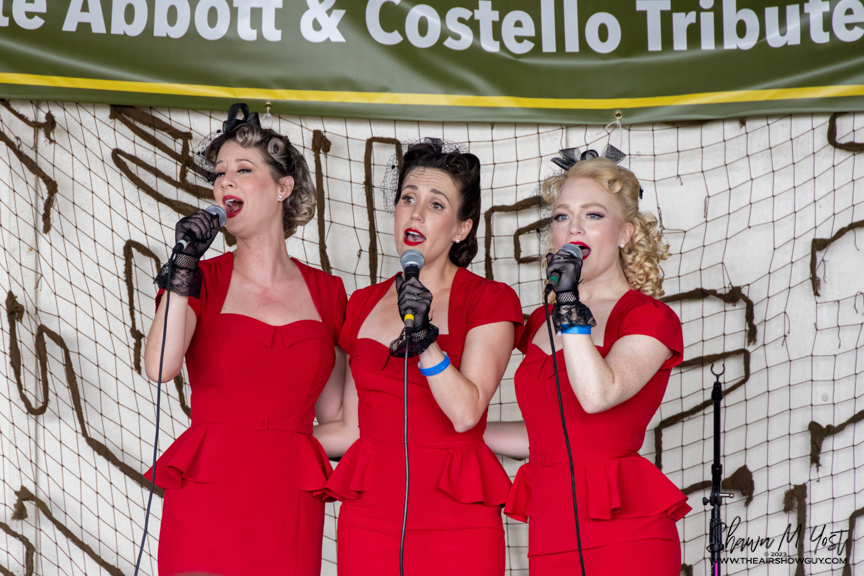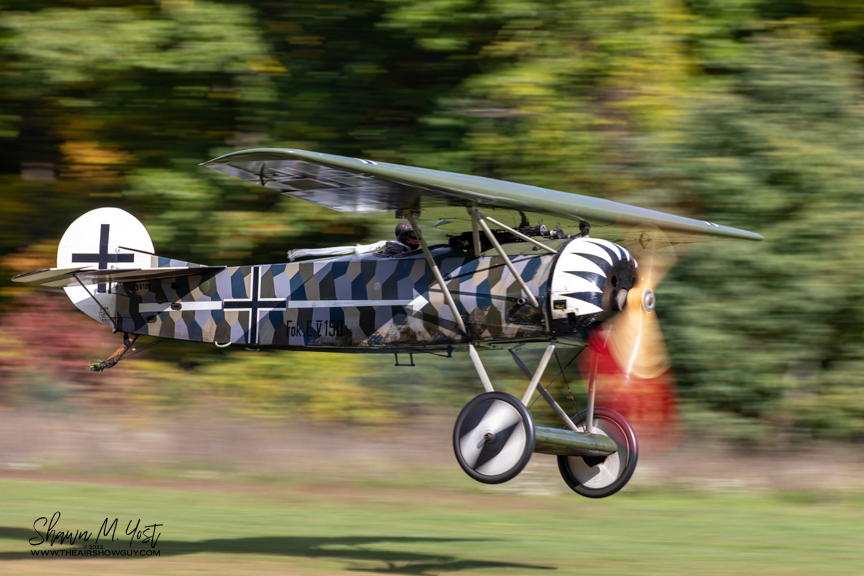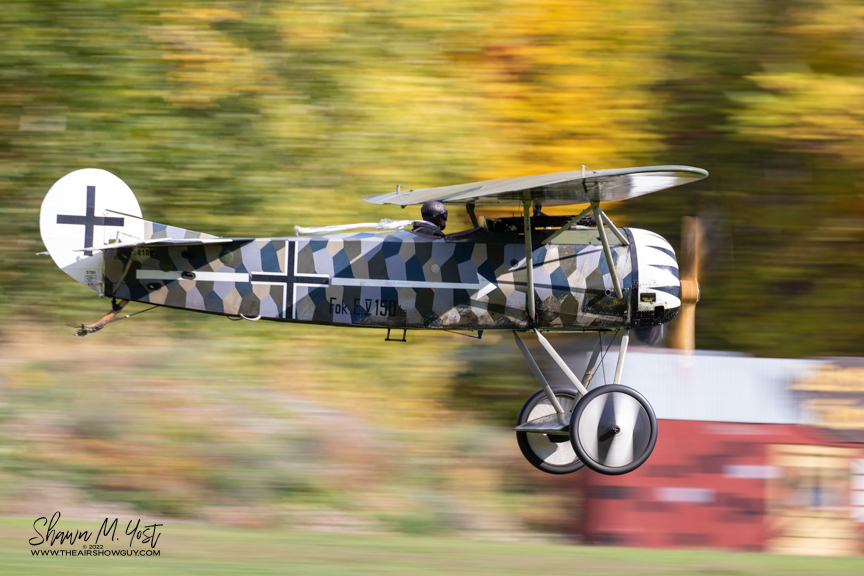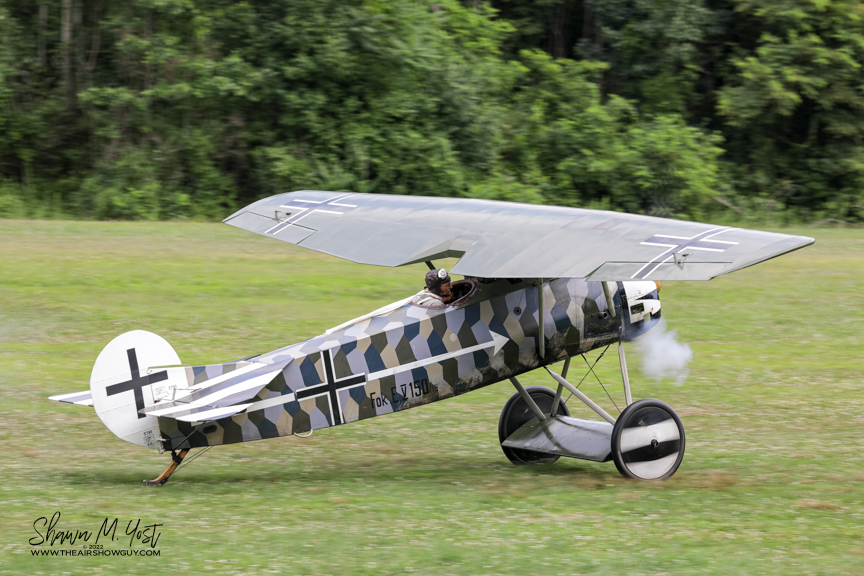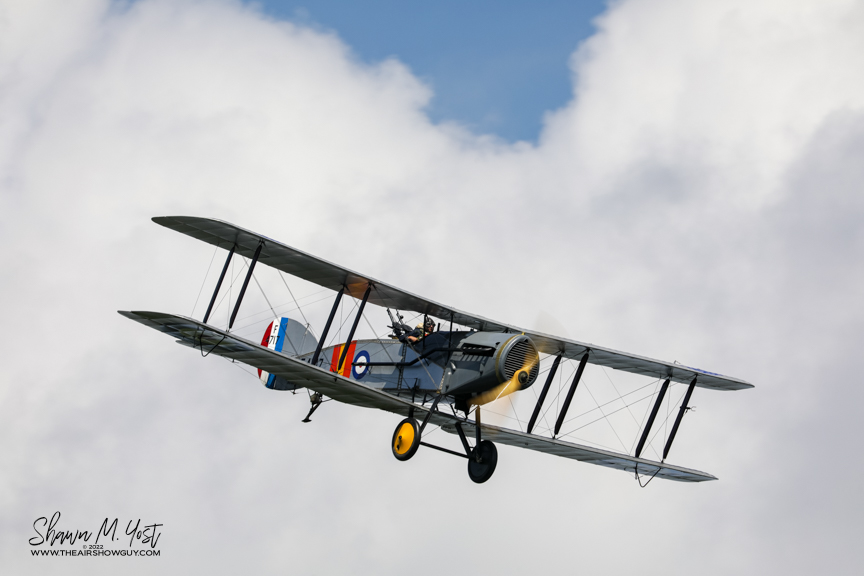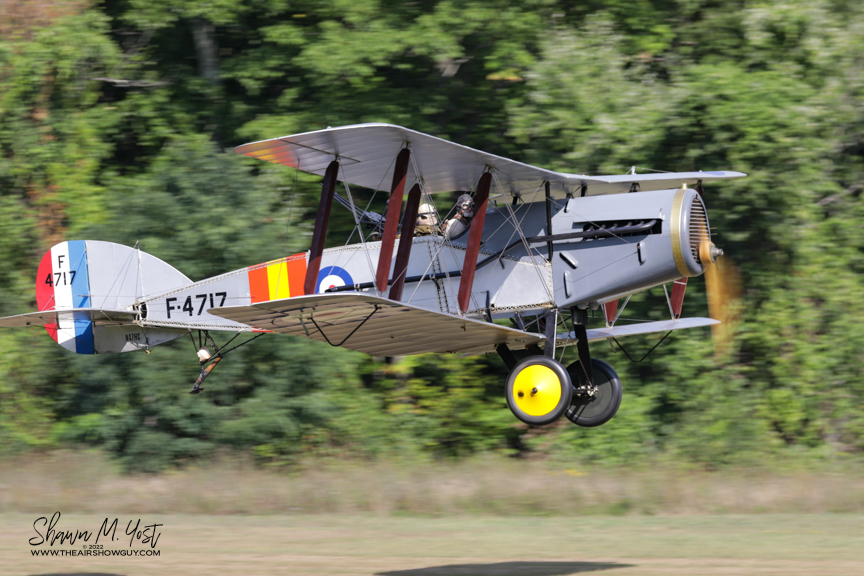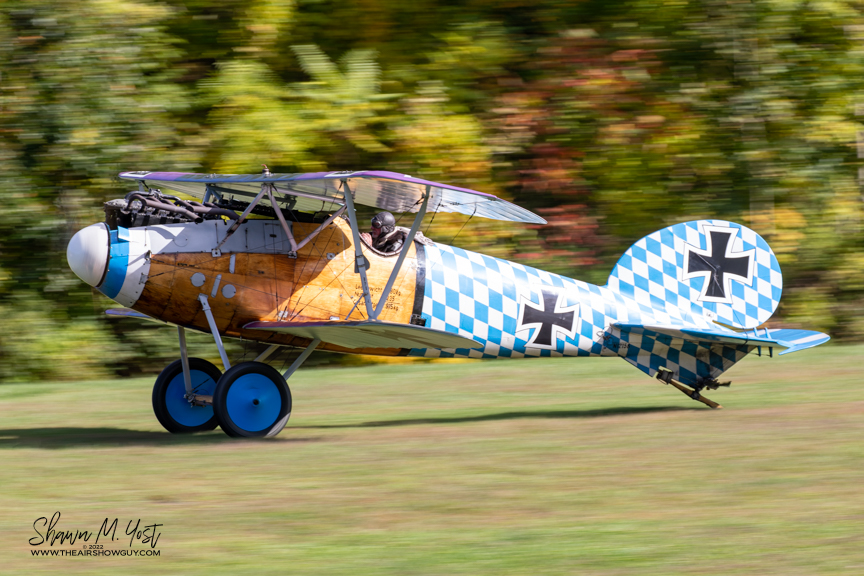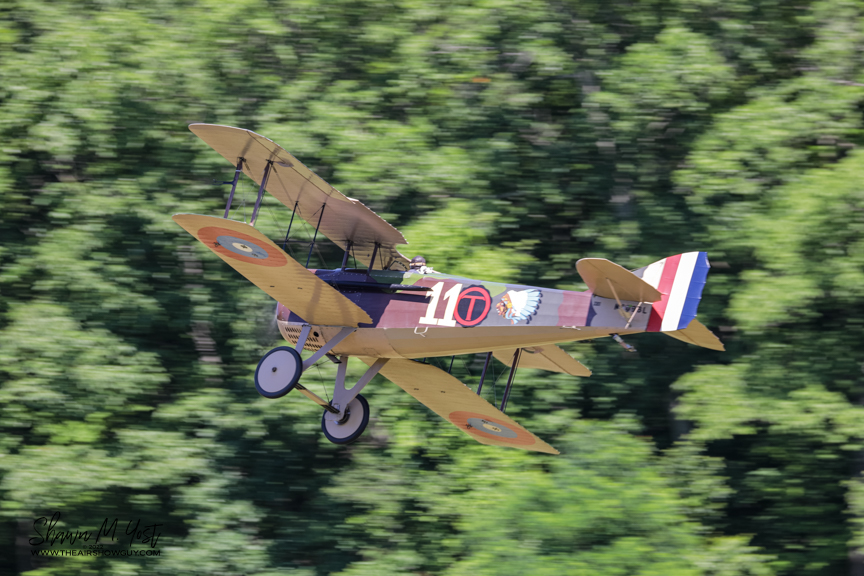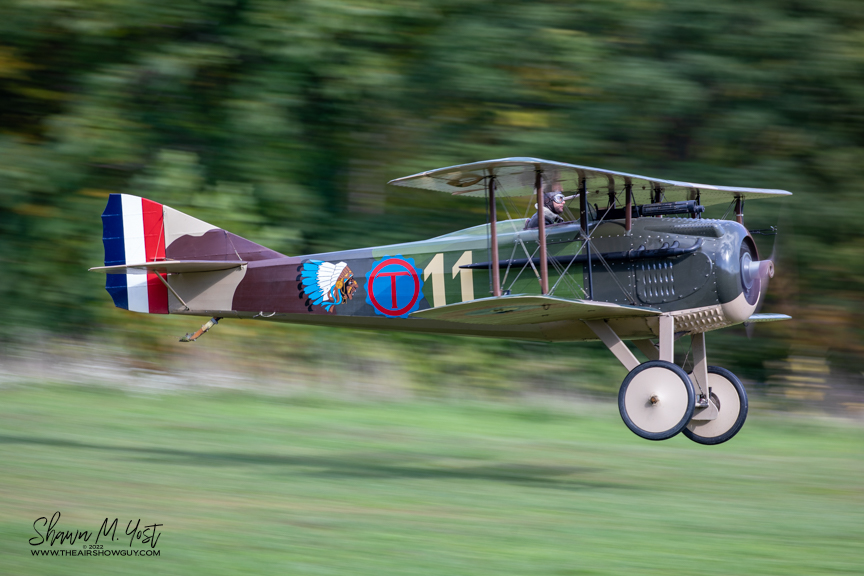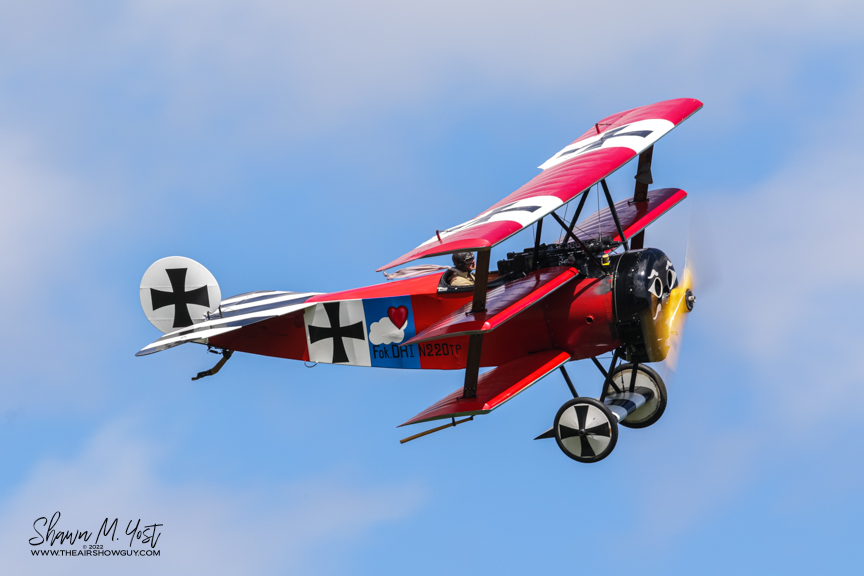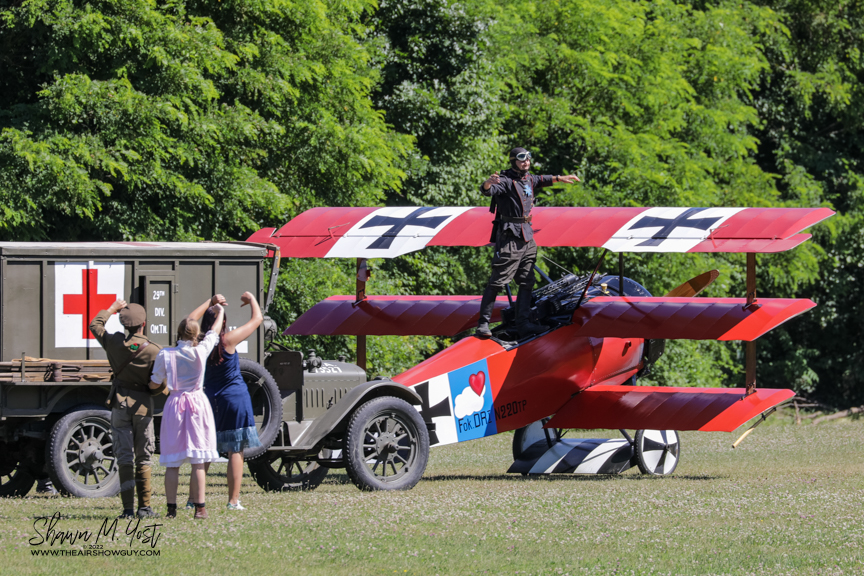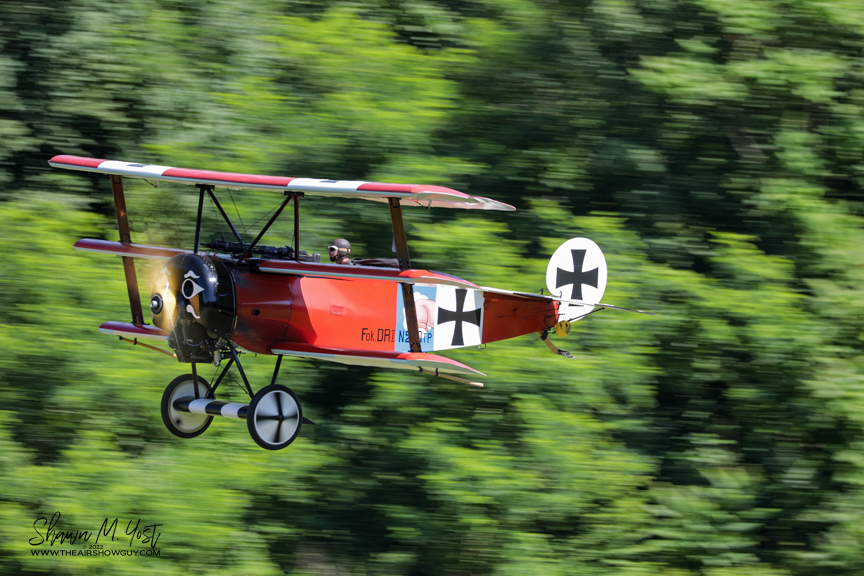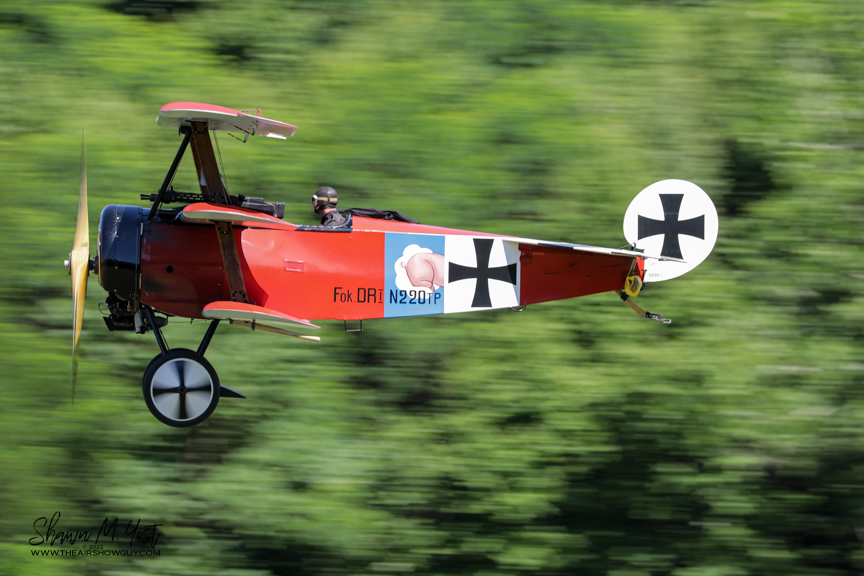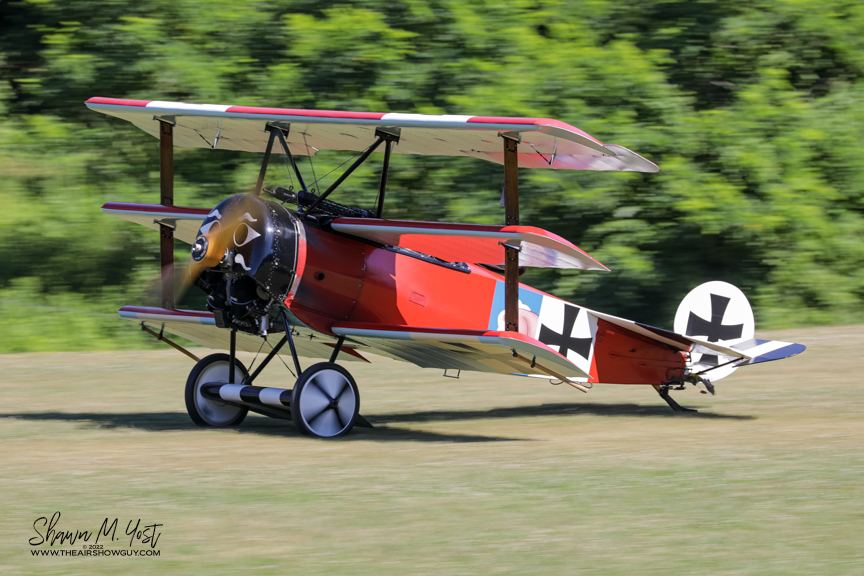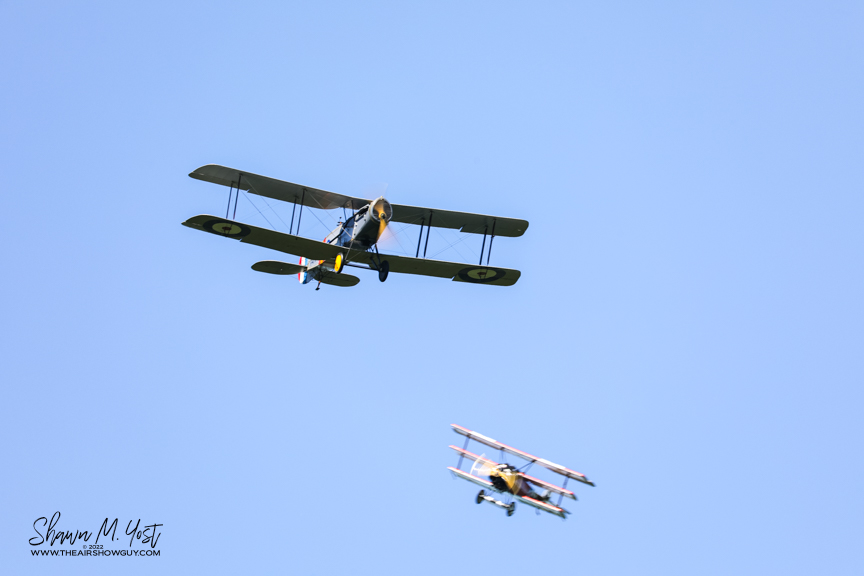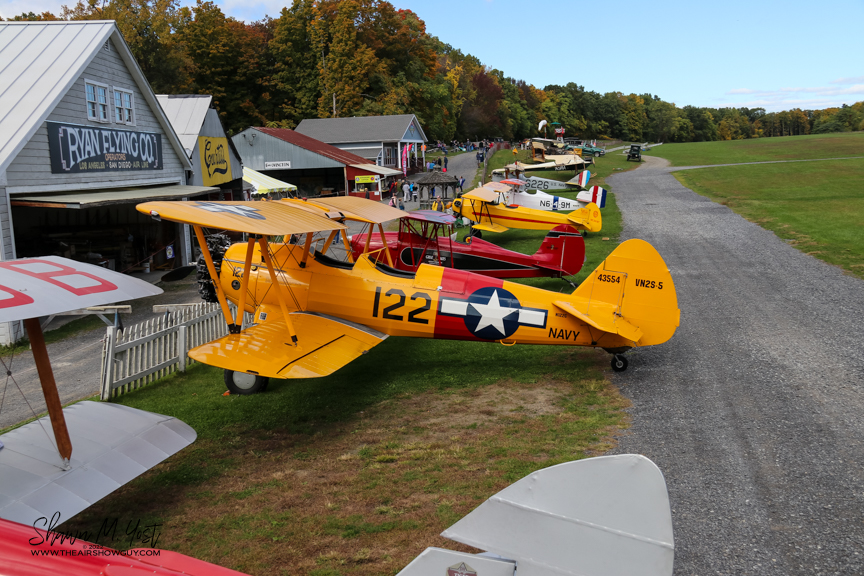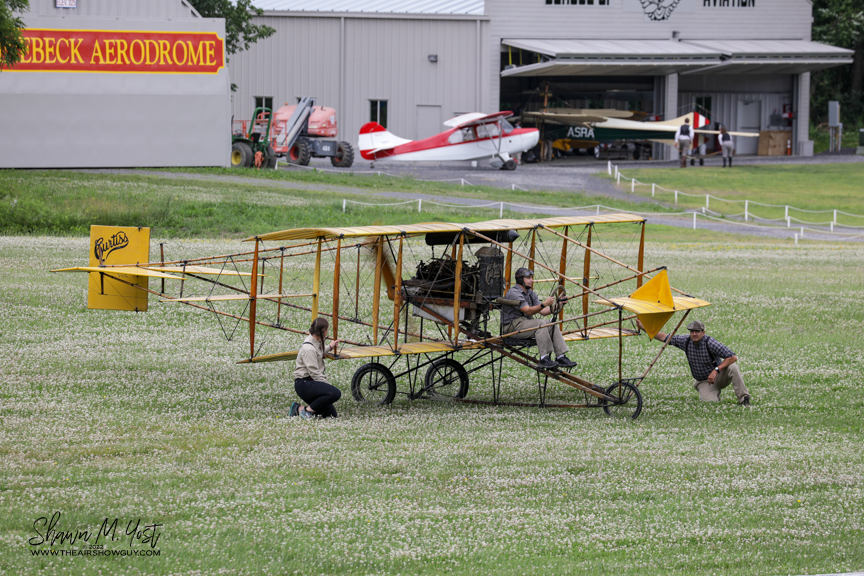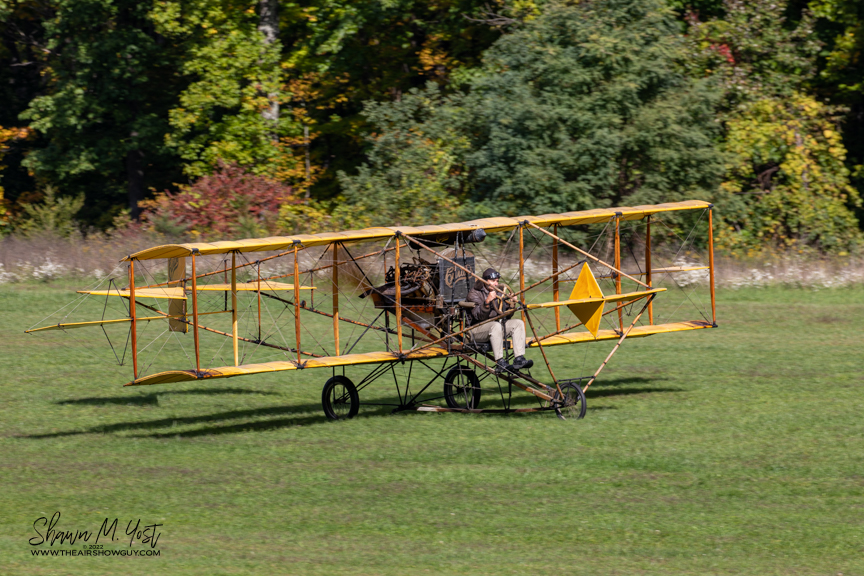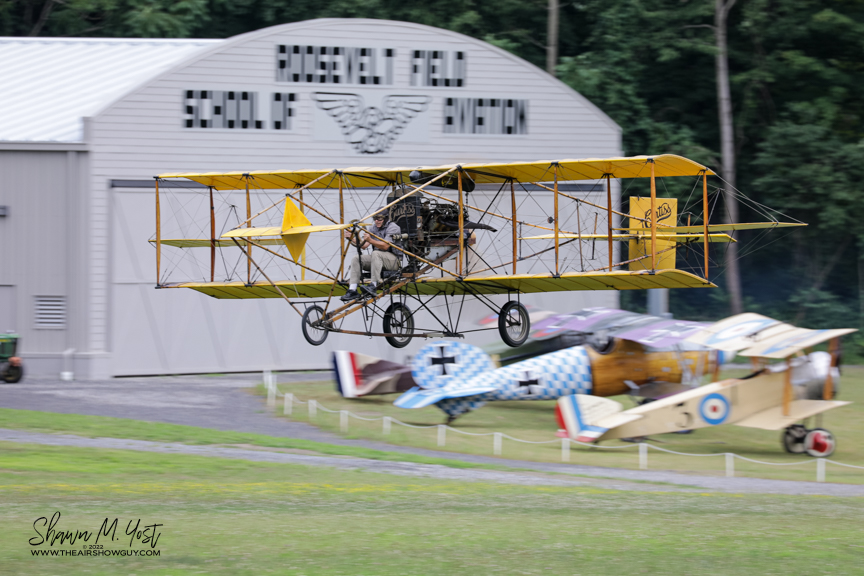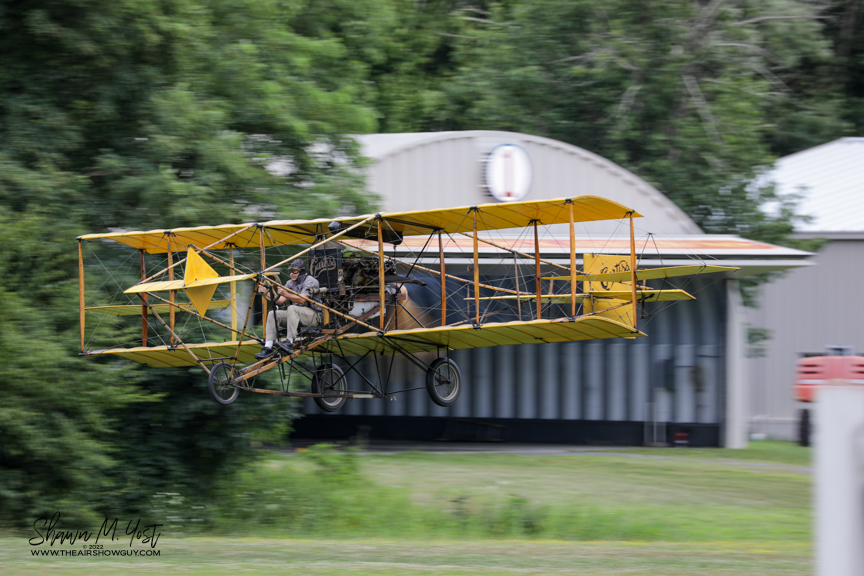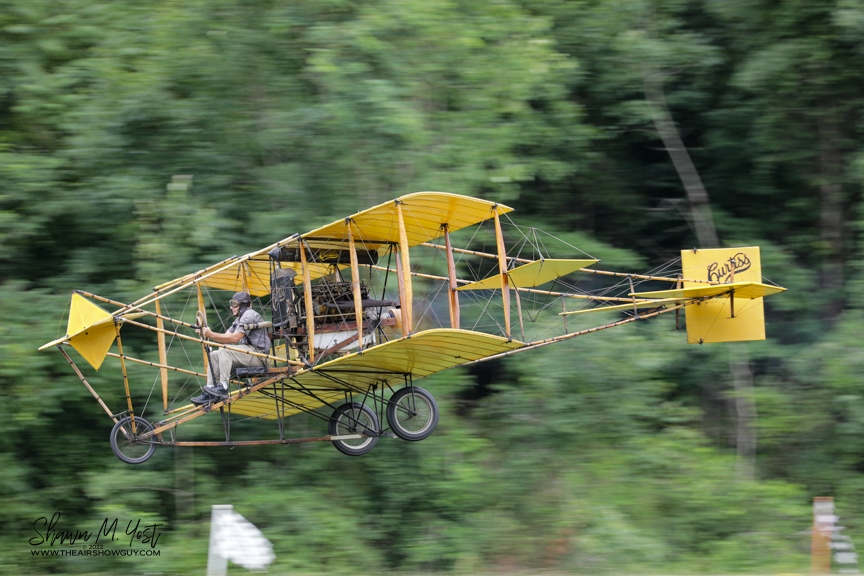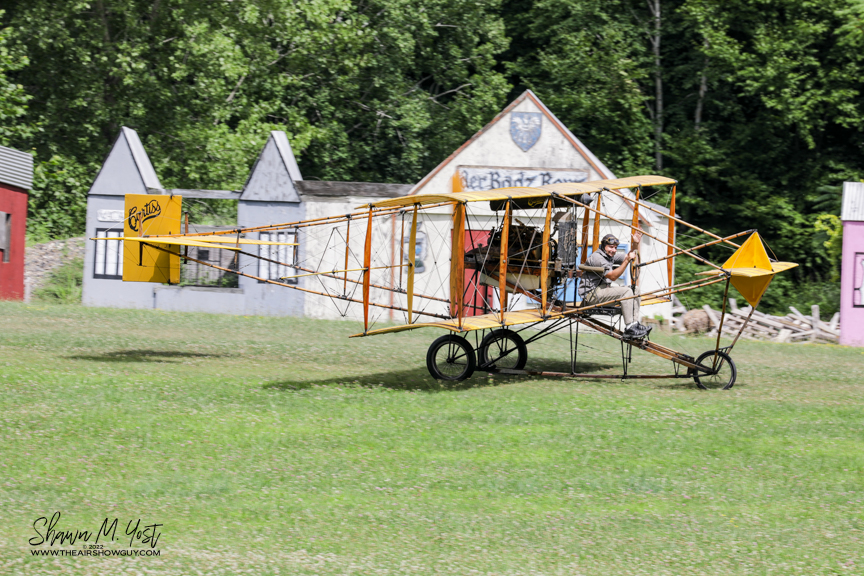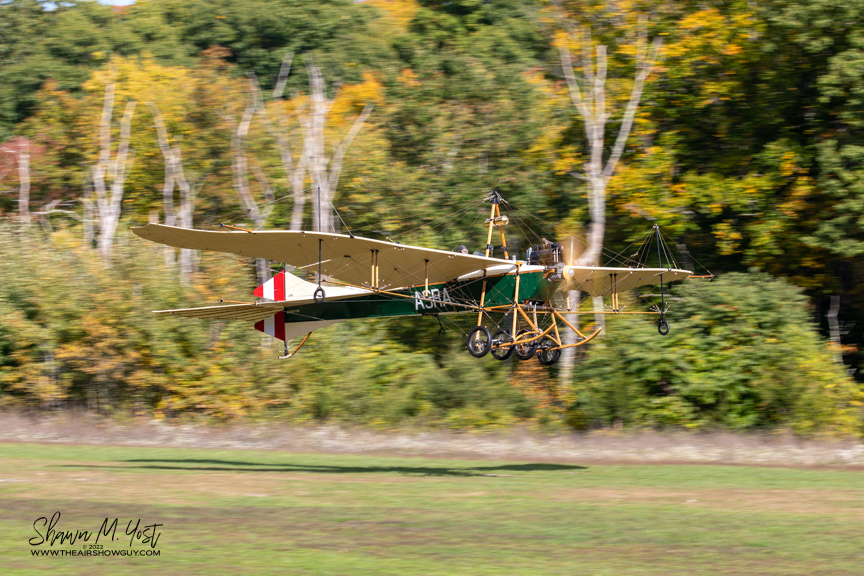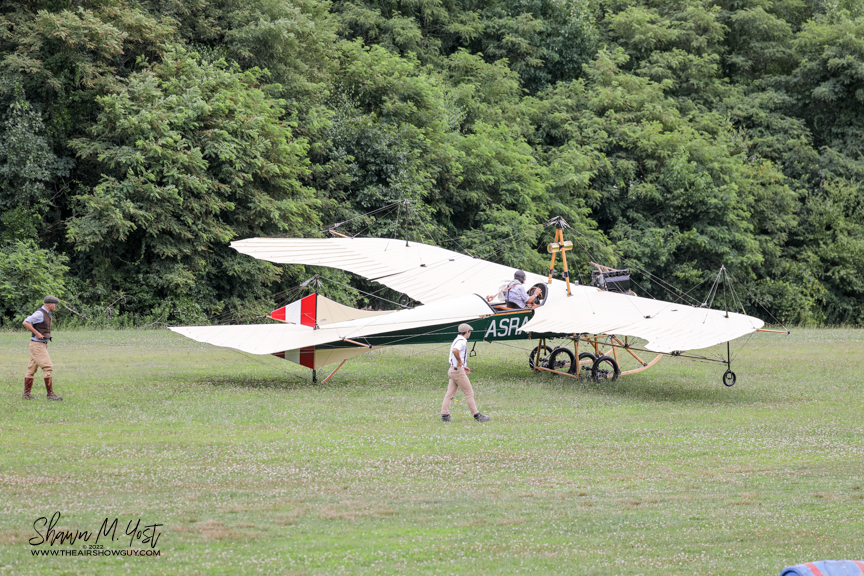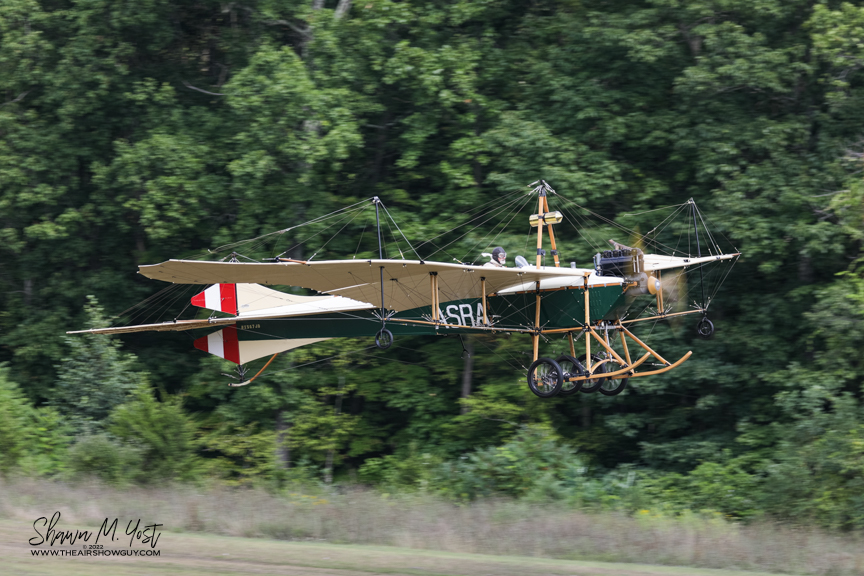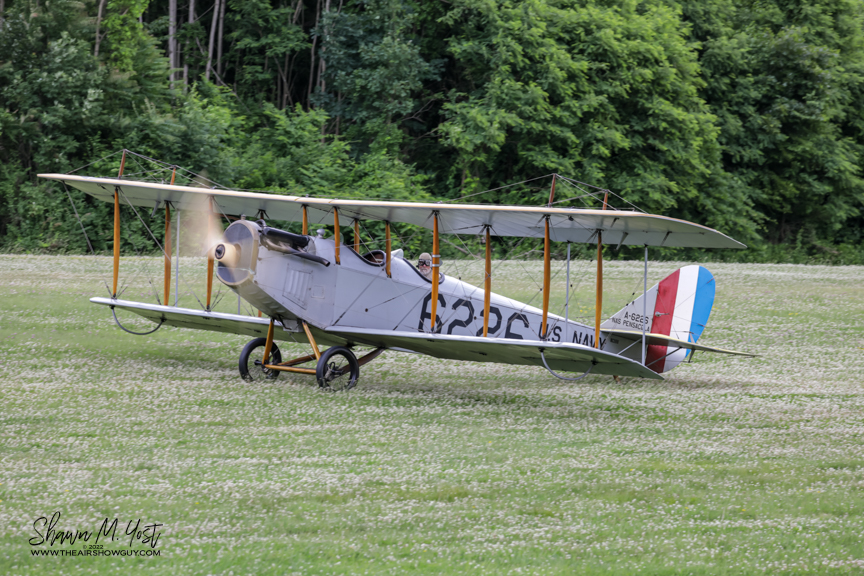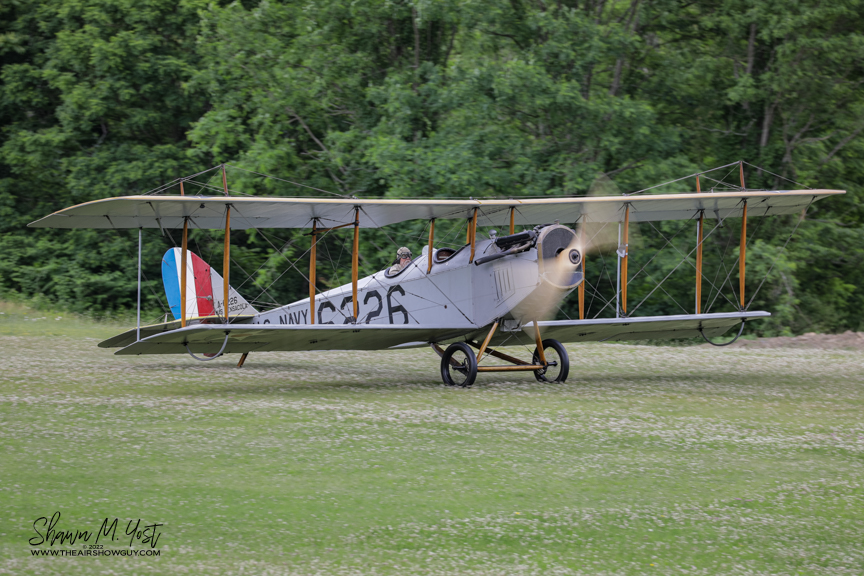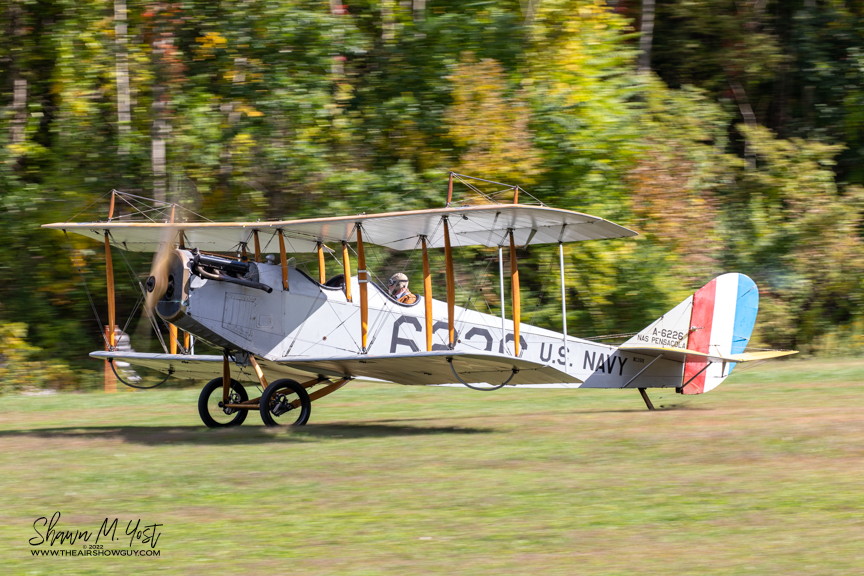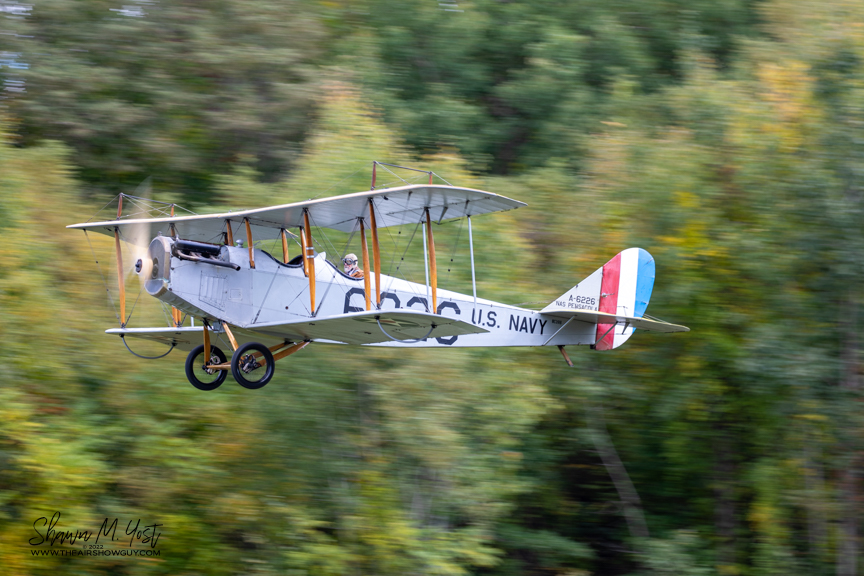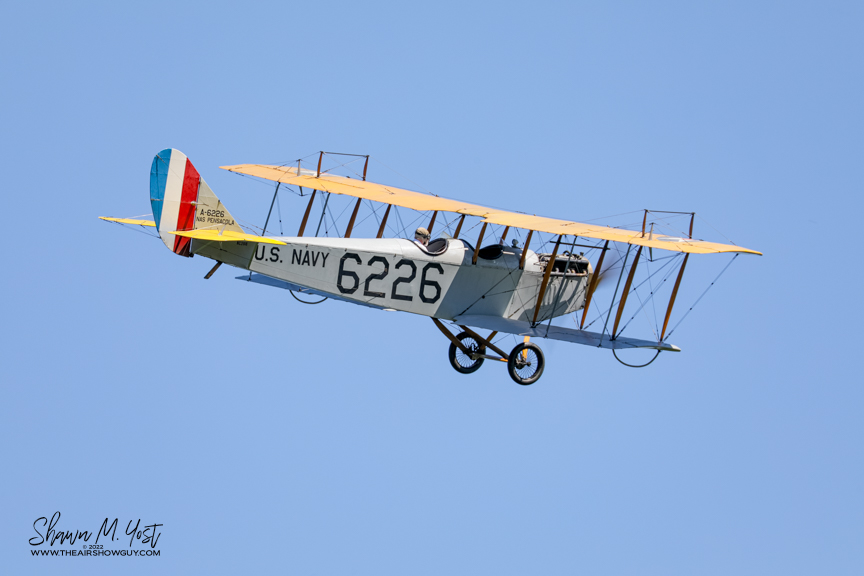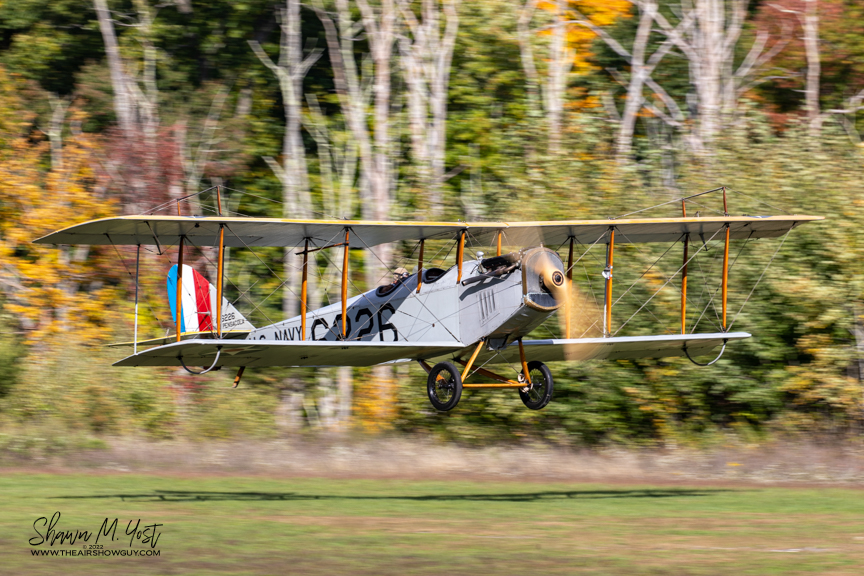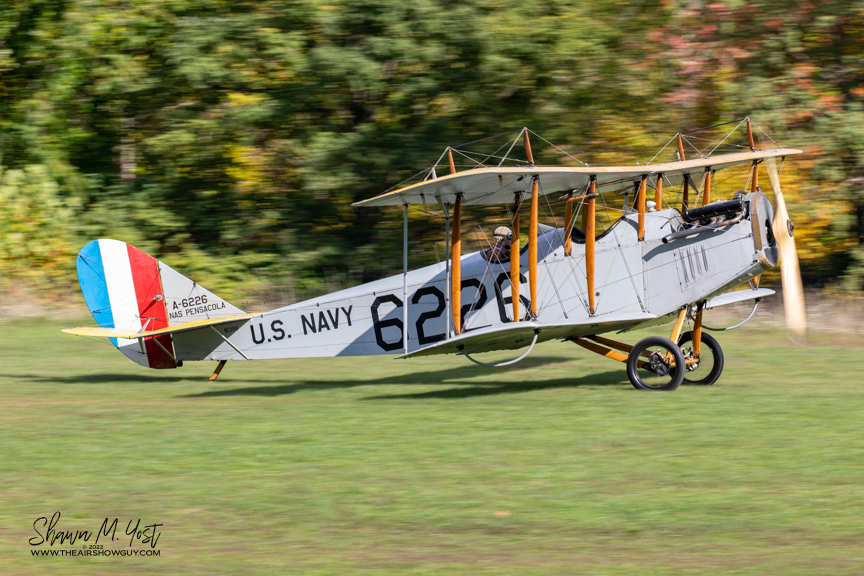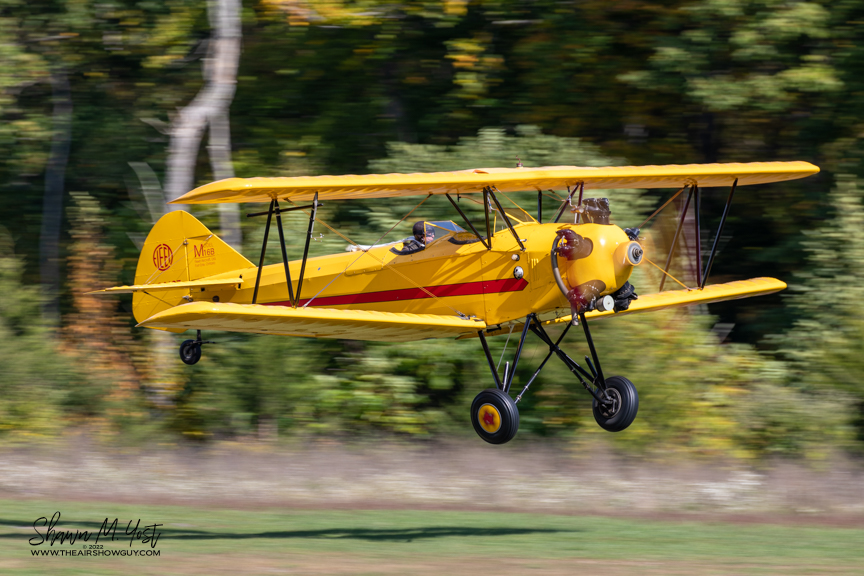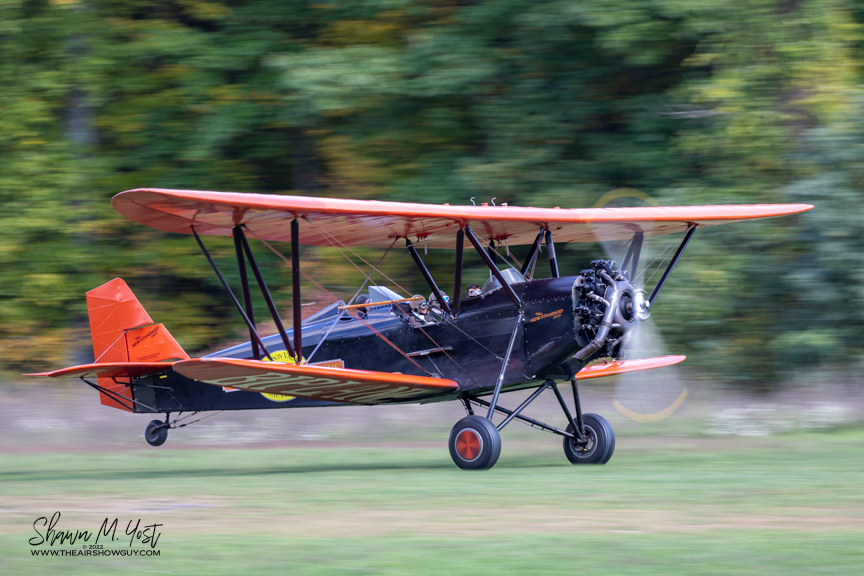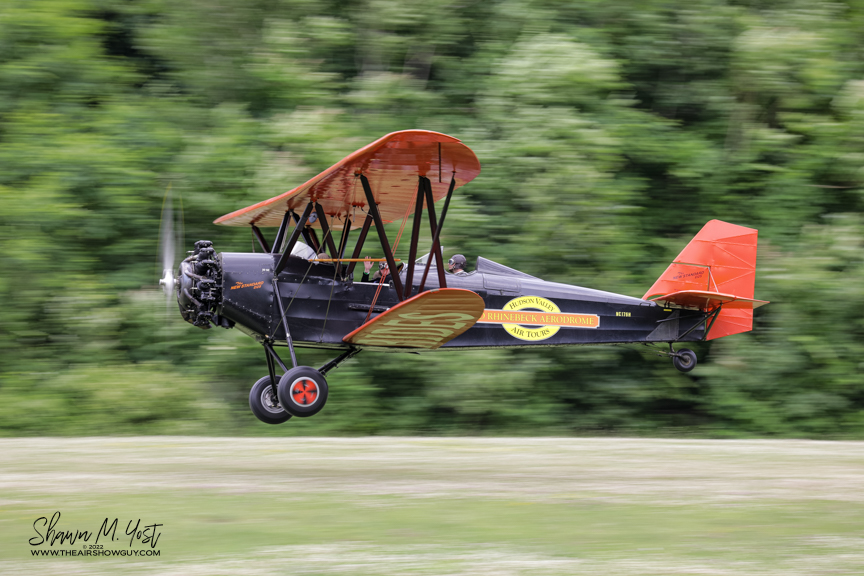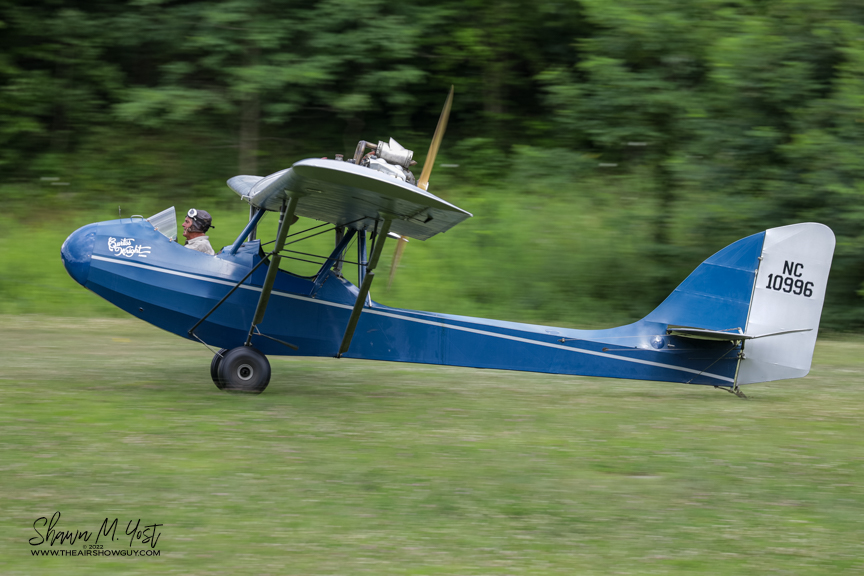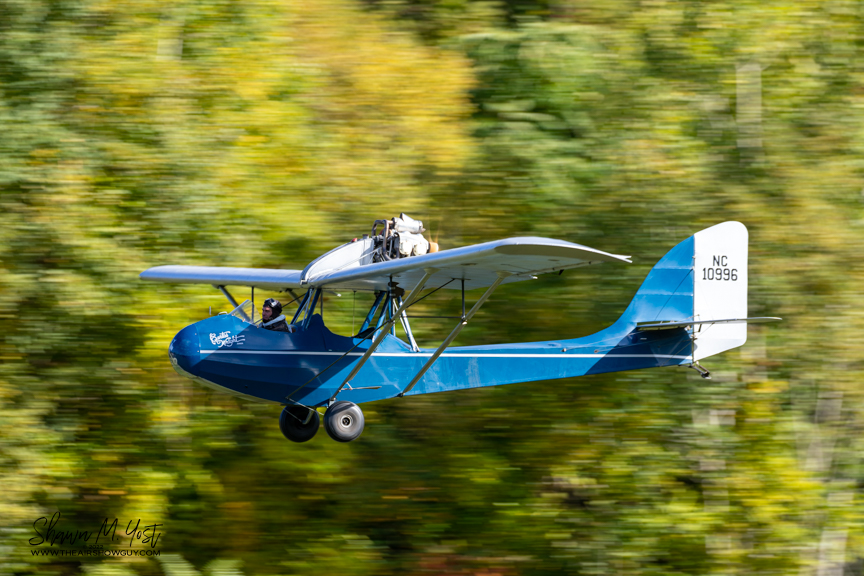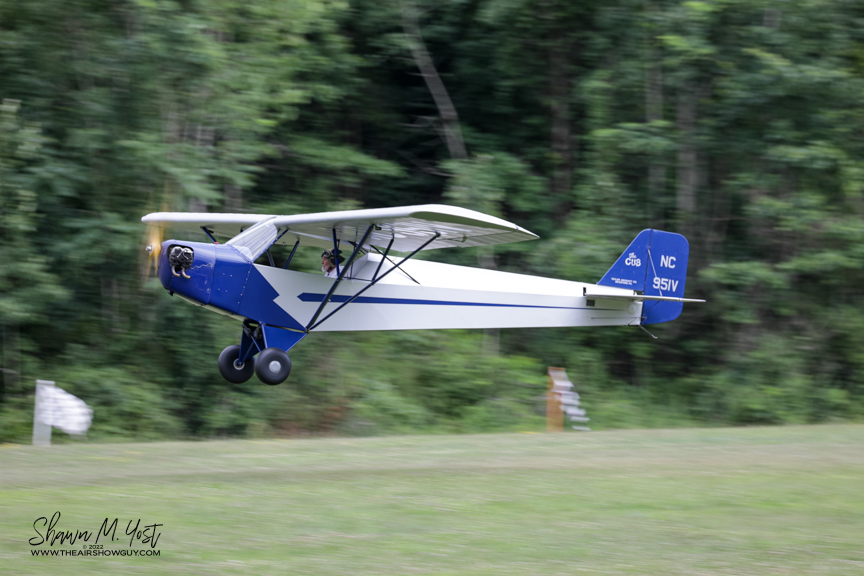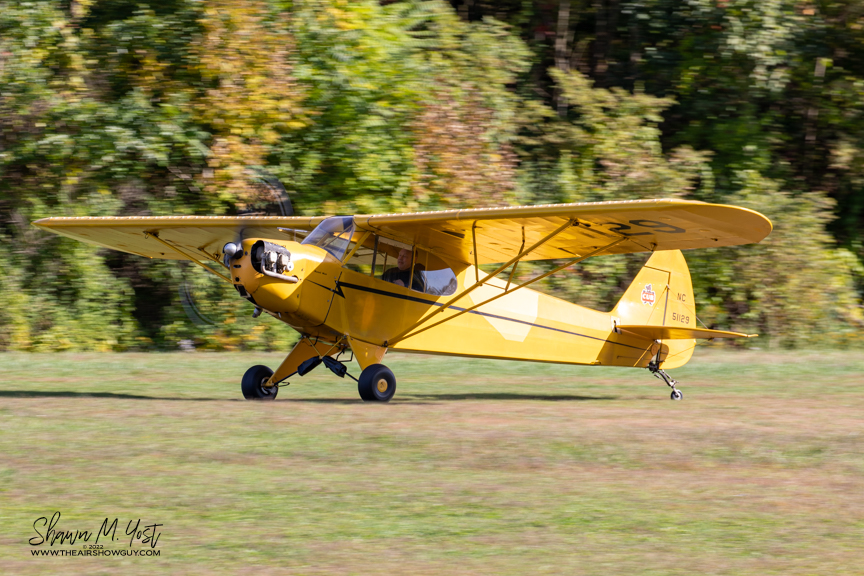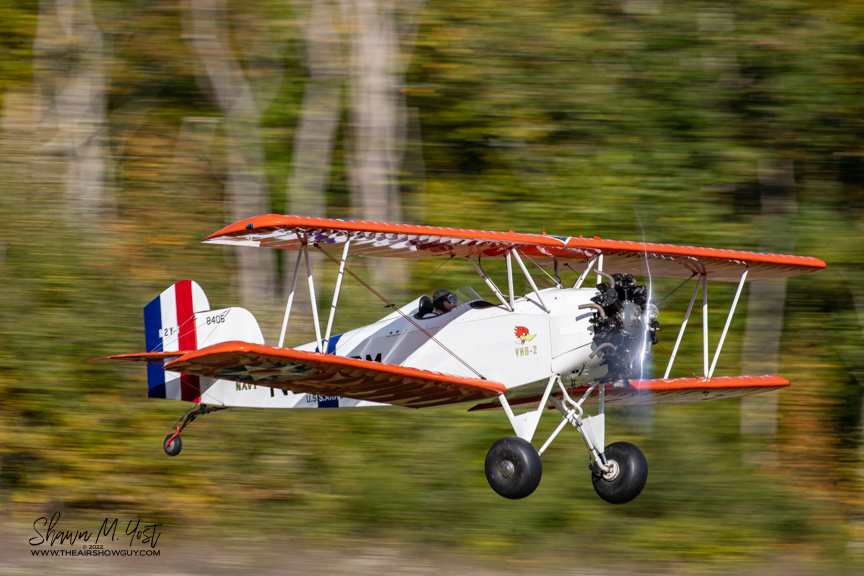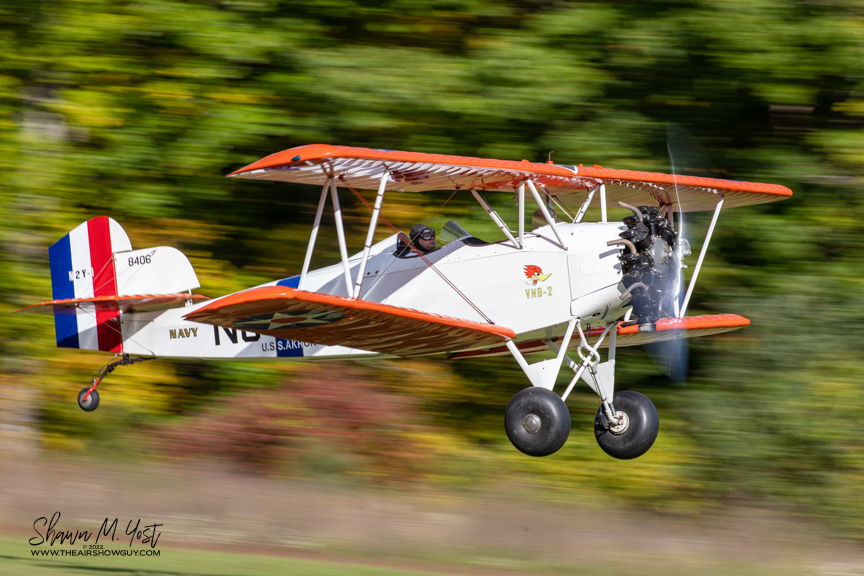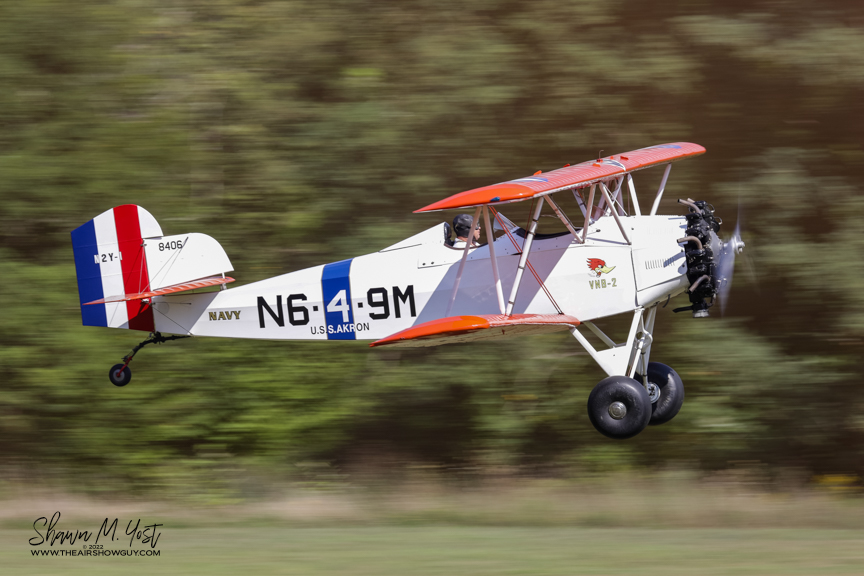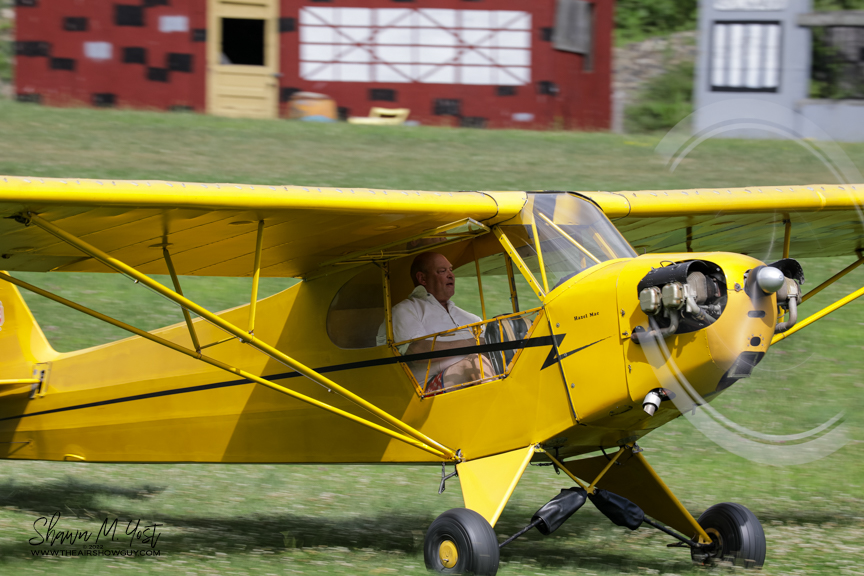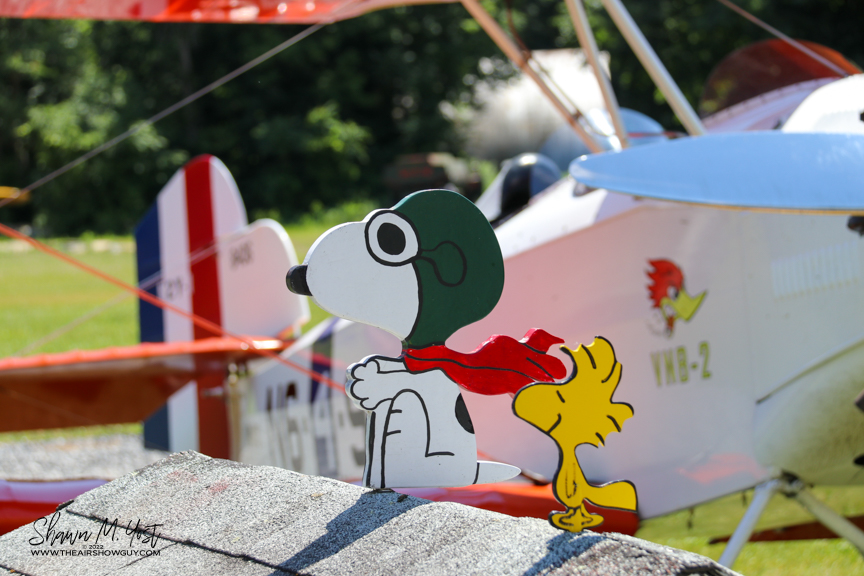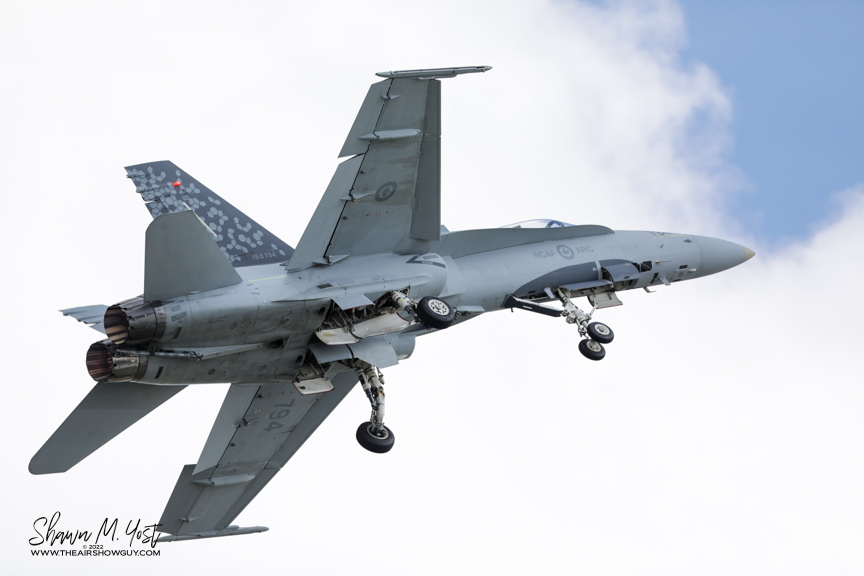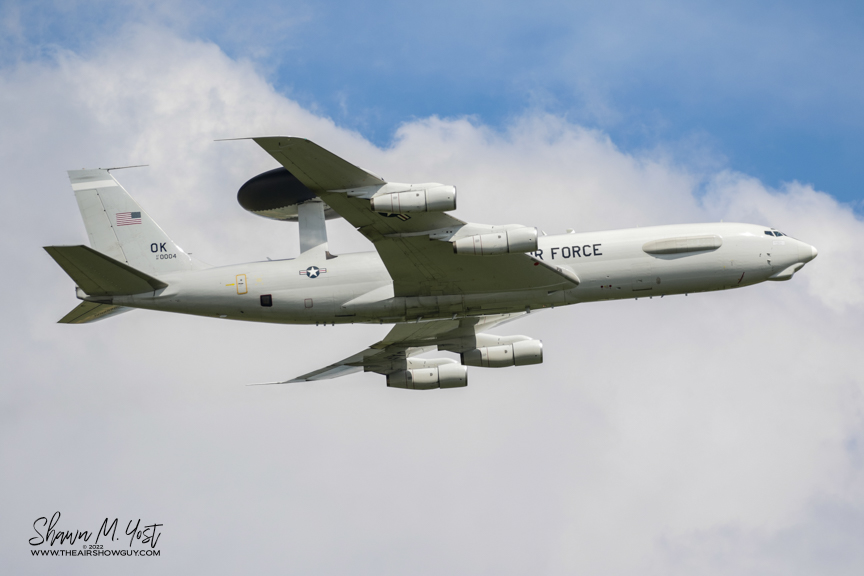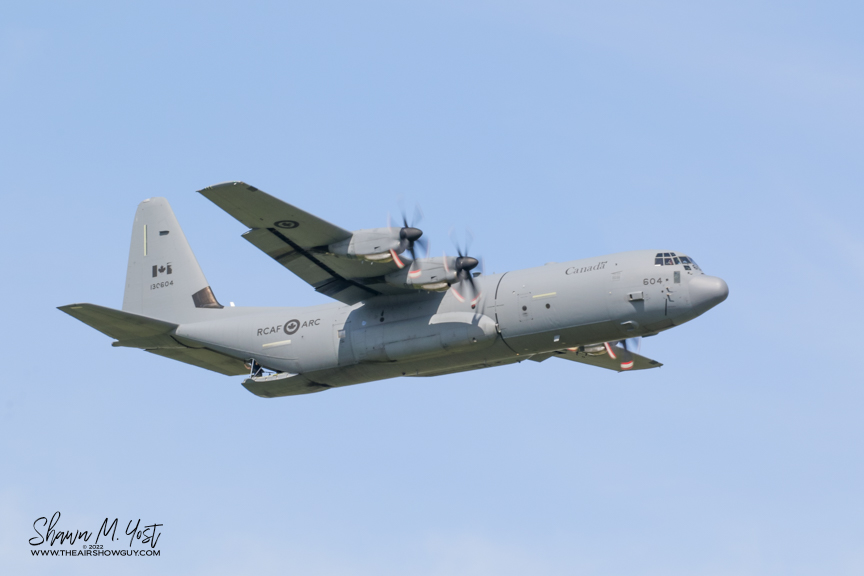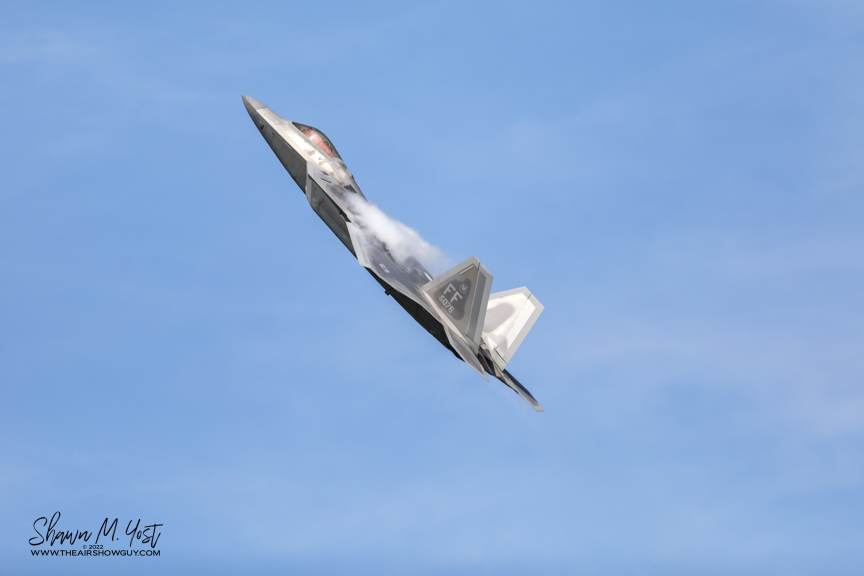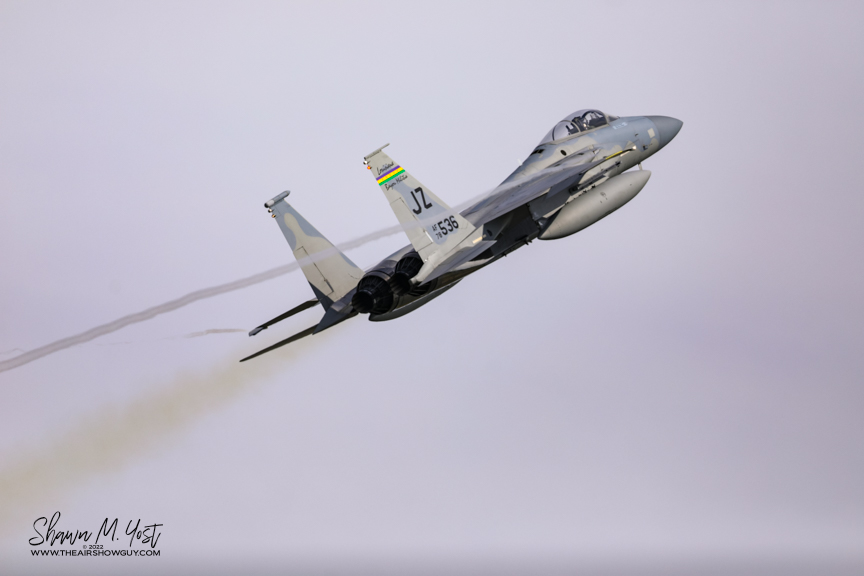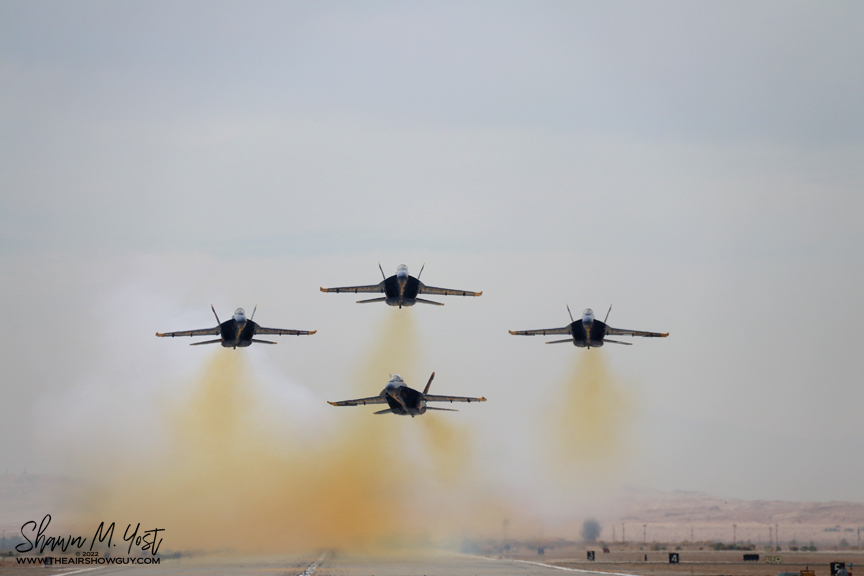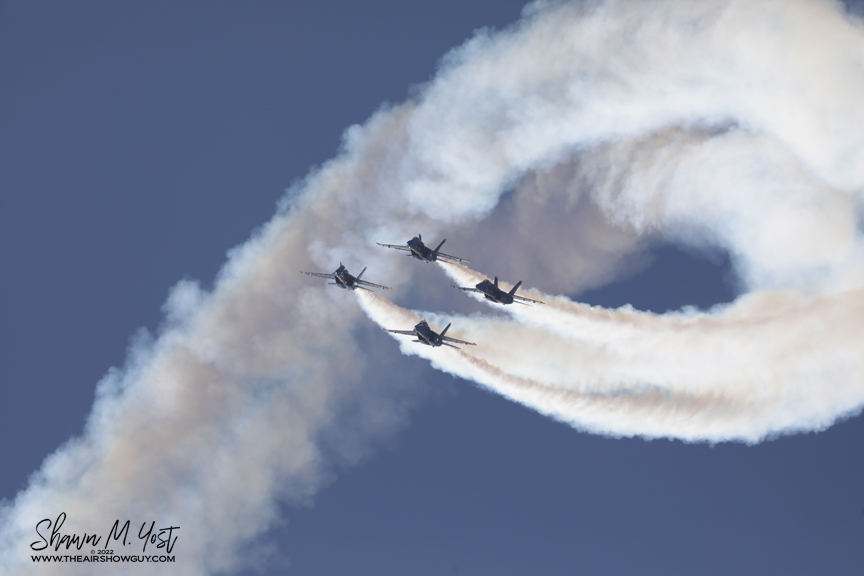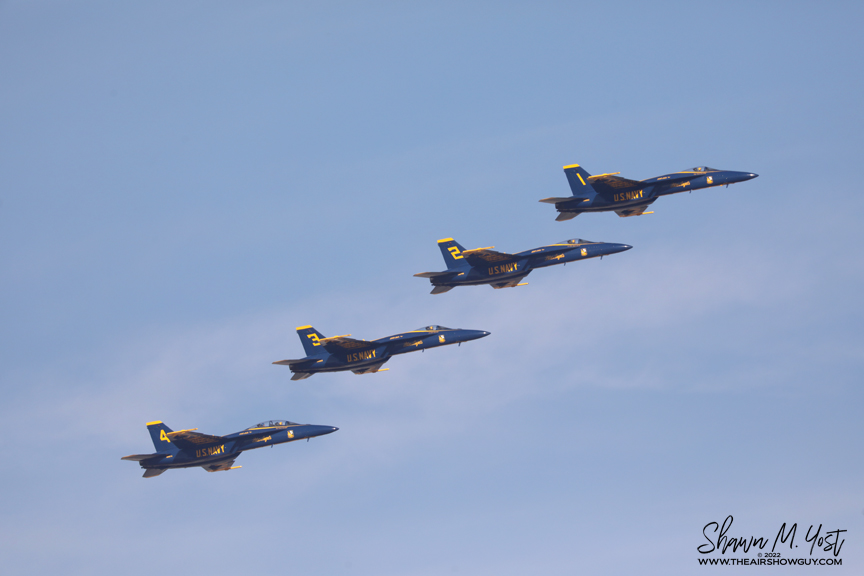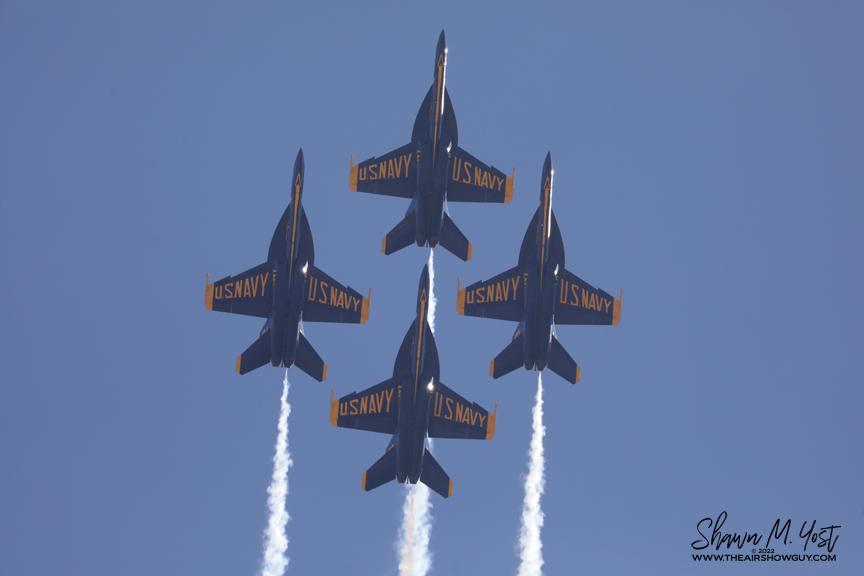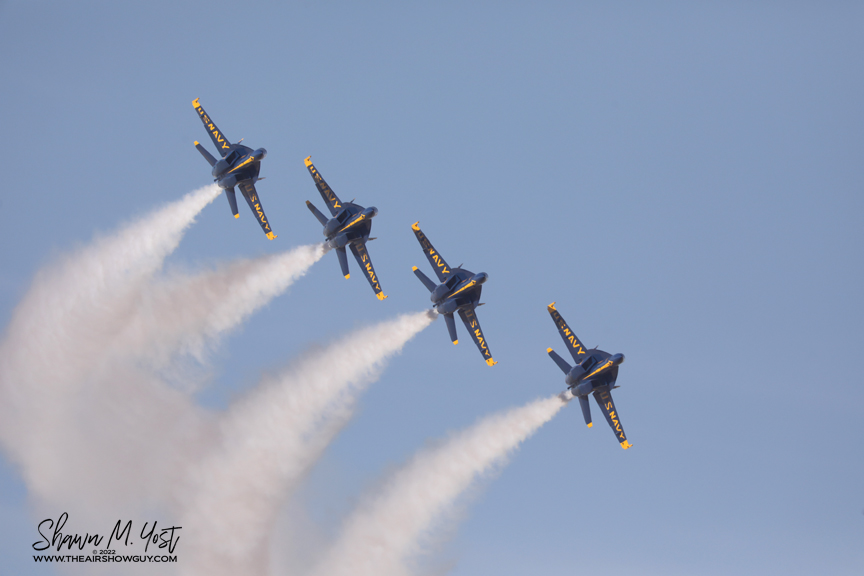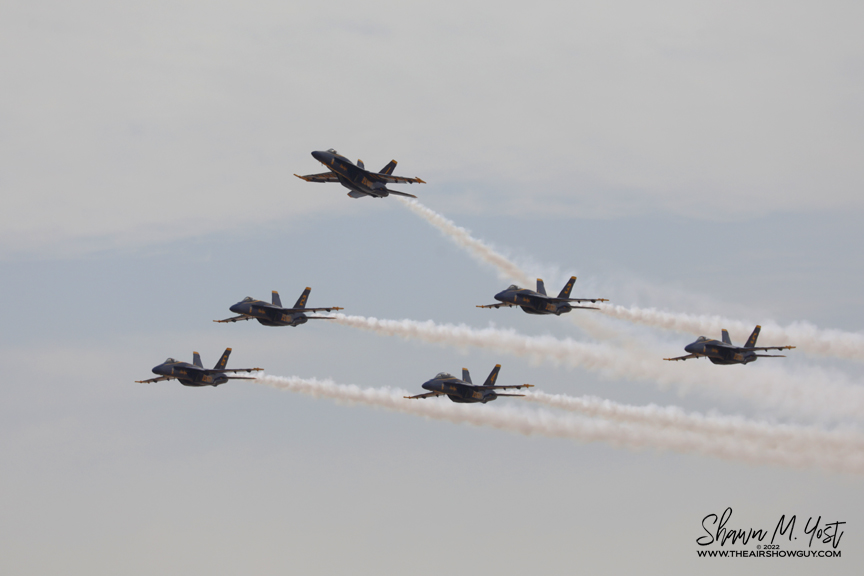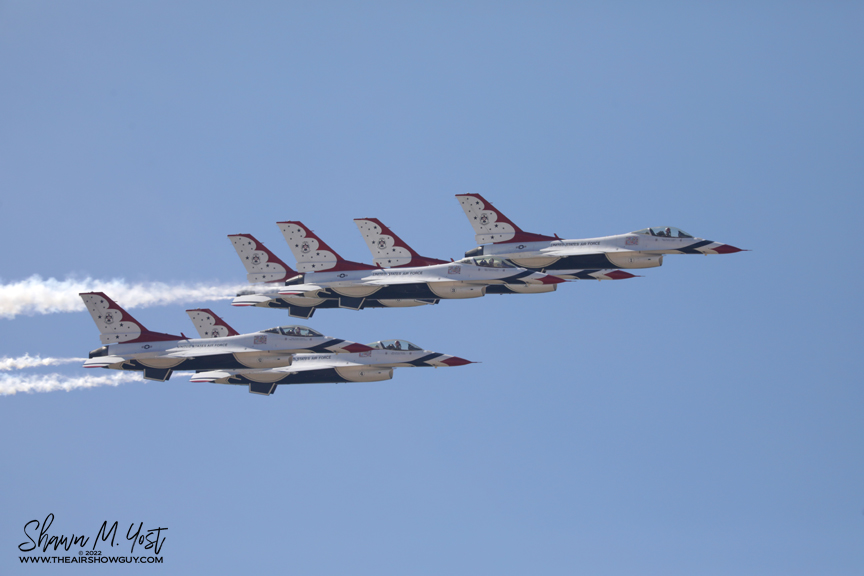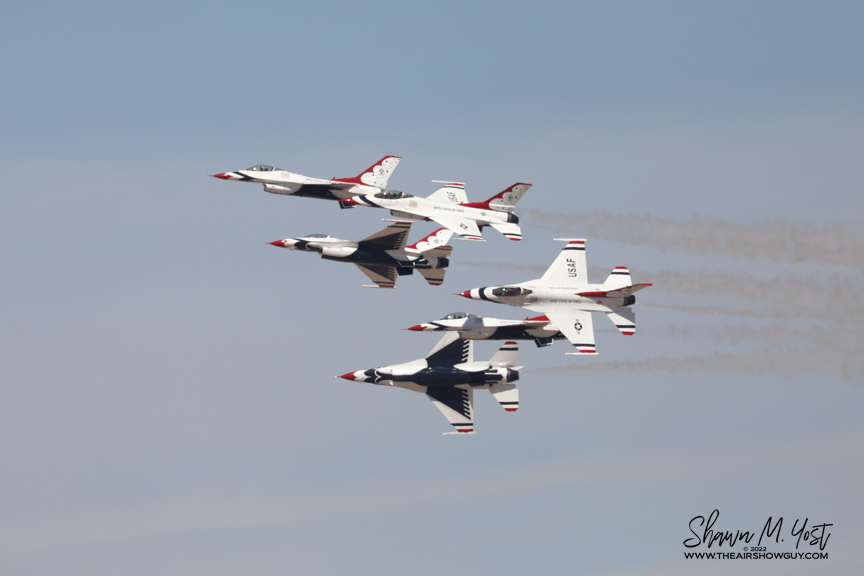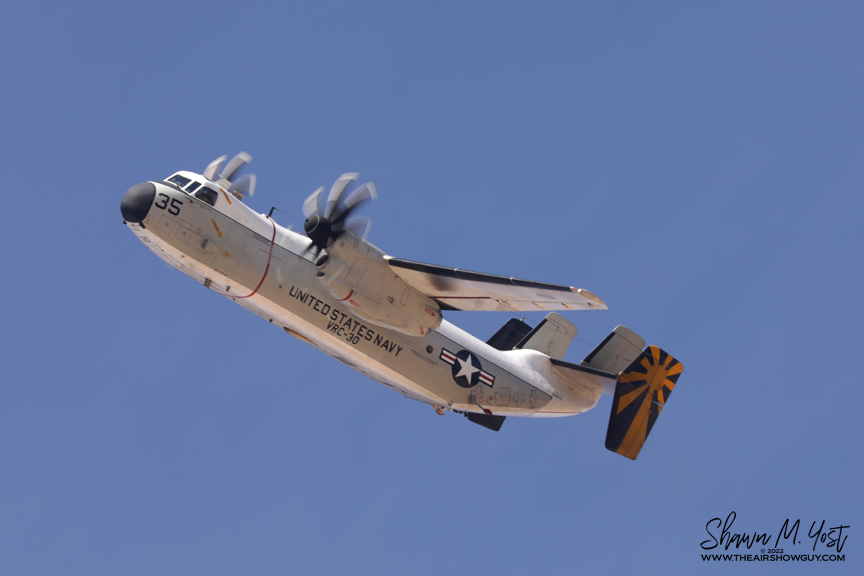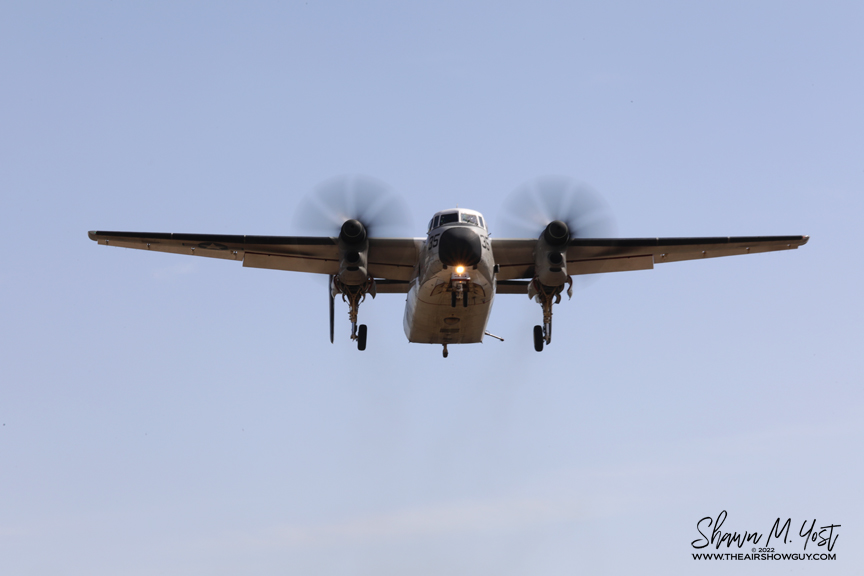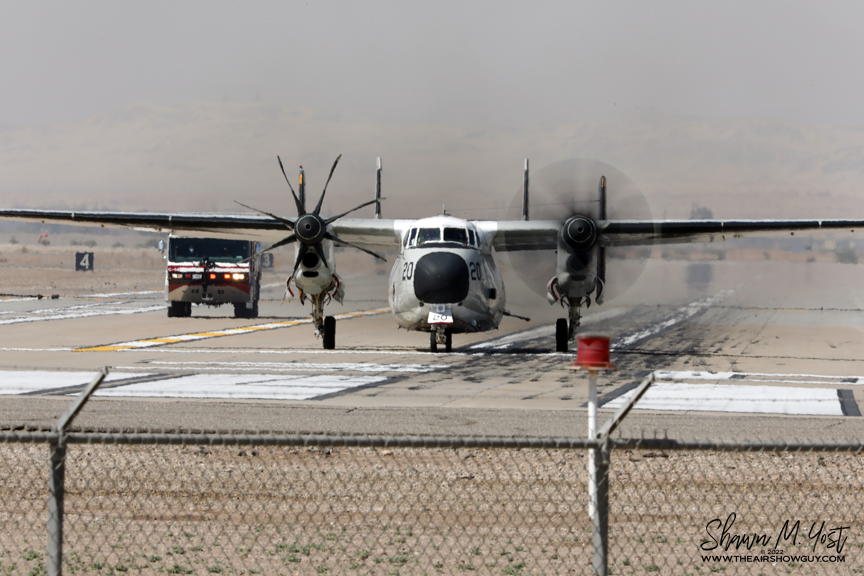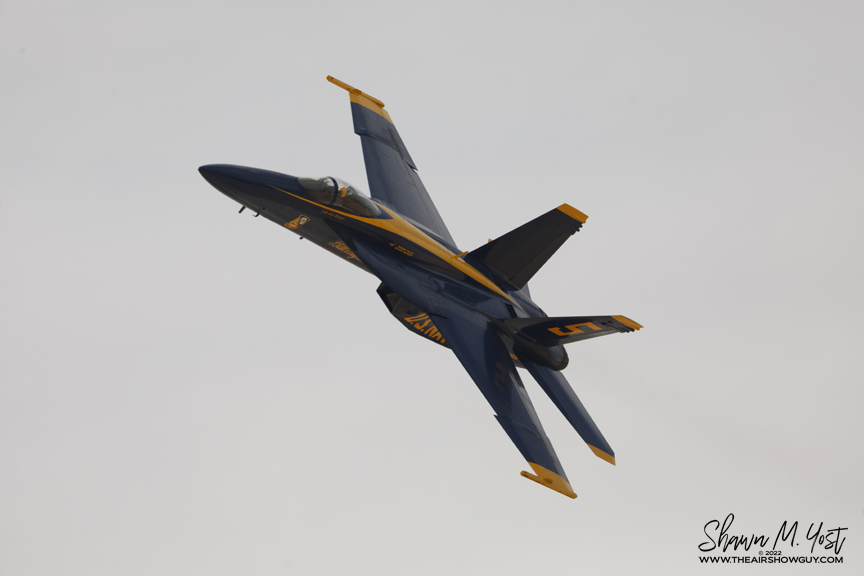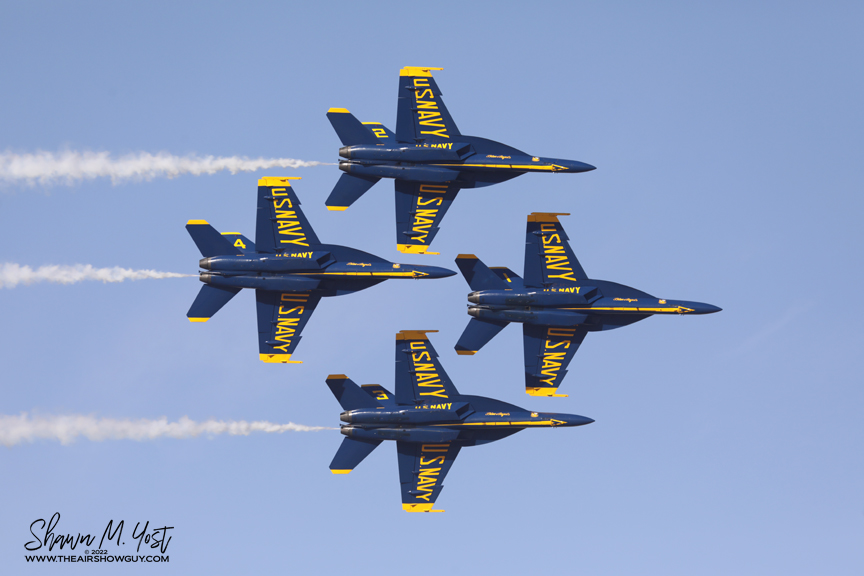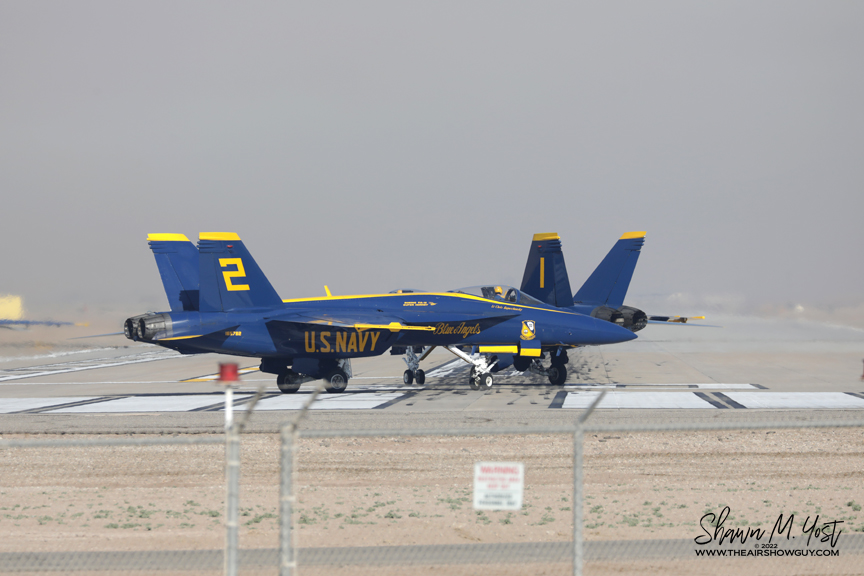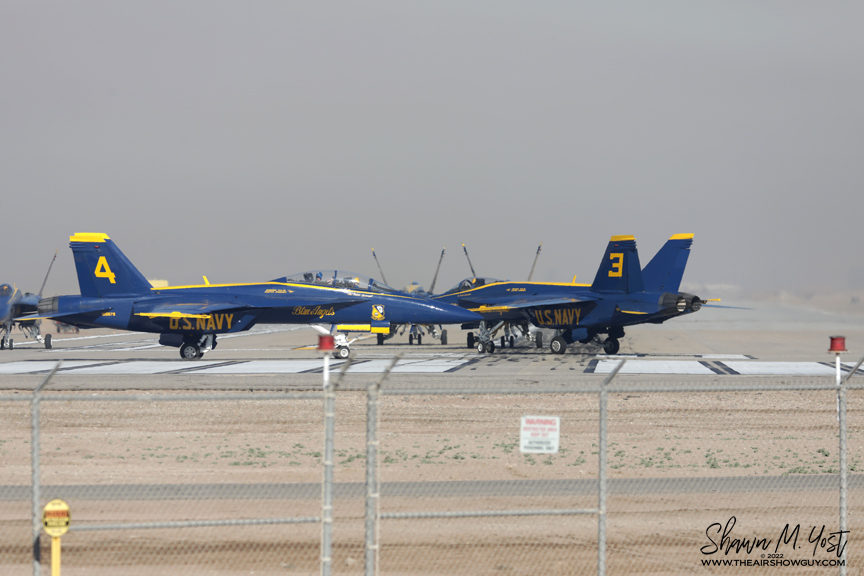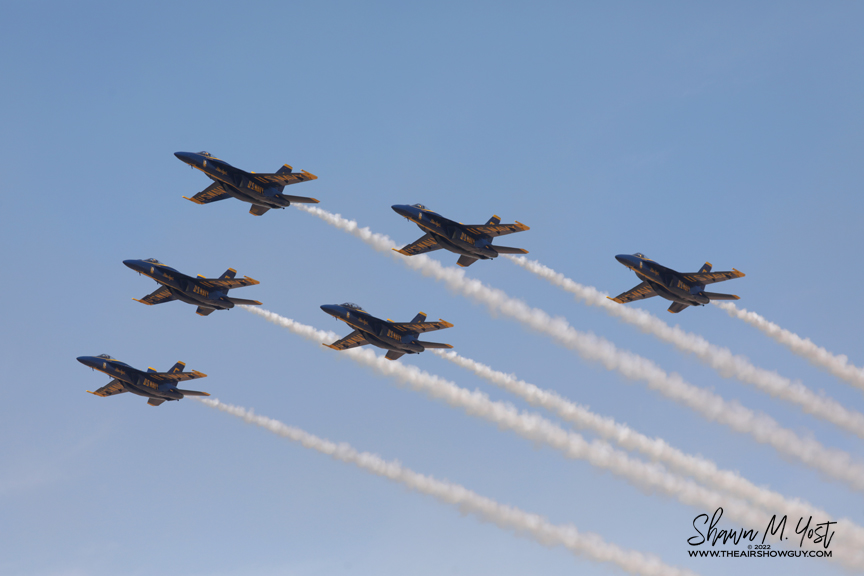The Central Coast Airfest was held on October 14-15 at the Santa Maria, California airport. This year’s event was the first year of formal sponsorship and organization by the Planes of Fame museum. Over the weekend, the show attracted an estimated 20,000 spectators. Planes of Fame elected to use Santa Maria as the location for their annual airshow, which was traditionally held previously at their facility at the Chino, California airport.
Planes of Fame is a museum consisting of mostly flying condition warbird aircraft from pre-World War II through the Korean War. Many of their aircraft were in attendance to perform, and was supplemented by warbirds owned by private owners/museums and several military demos.
Team Altus Aerial Refueling Demo
Team Altus sent the KC-135 and C-17 to demonstrate aerial refueling tactics. Both aircraft belong to the 97th Air Mobility Wing, which is responsible for training pilots and aircrew for the respective aircraft and missions. The C-17 also put on a brief display of agility, showcasing the tight handling characteristics of the large aircraft, and simulated a tactical short field landing to conclude the demo.
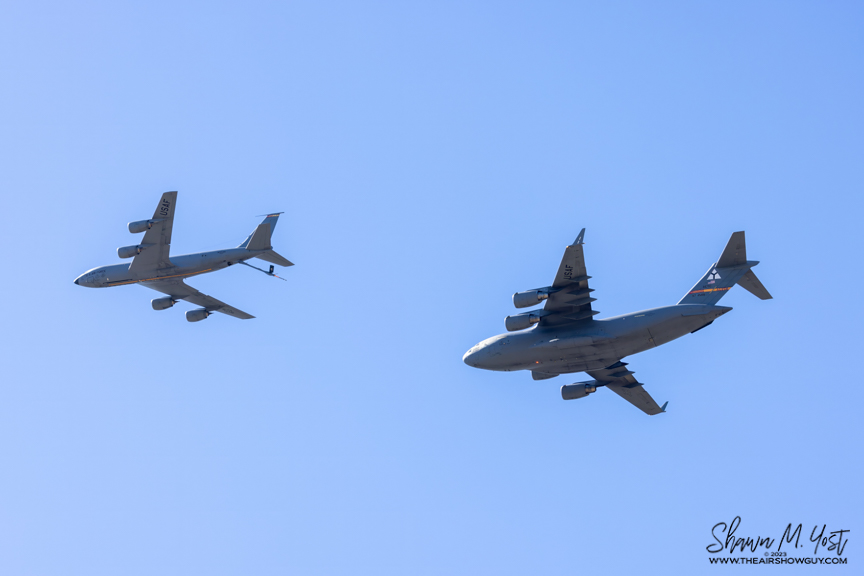

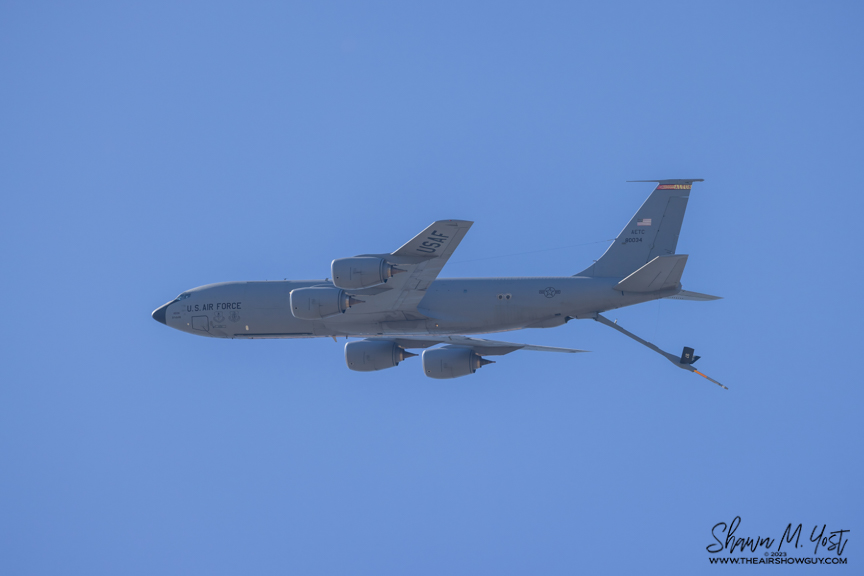





Mosquito Aerobatics
Steve Hinton piloted the DH.98 Mosquito FB Mk. VI owned by Charles Somers. The airframe was restored in 2014 by New Zealand-based Avspecs, Ltd. The Merlin engines were restored in America. The airframe was built in 1945 and was used for RAF training before serving with 75 Squadron in New Zealand as NZ2384. It was used in the 1950s for various tasks before being abandoned in New Zealand. Avspecs is now considered the Mosquito restoration experts and are returning several more airframes to flyable status.


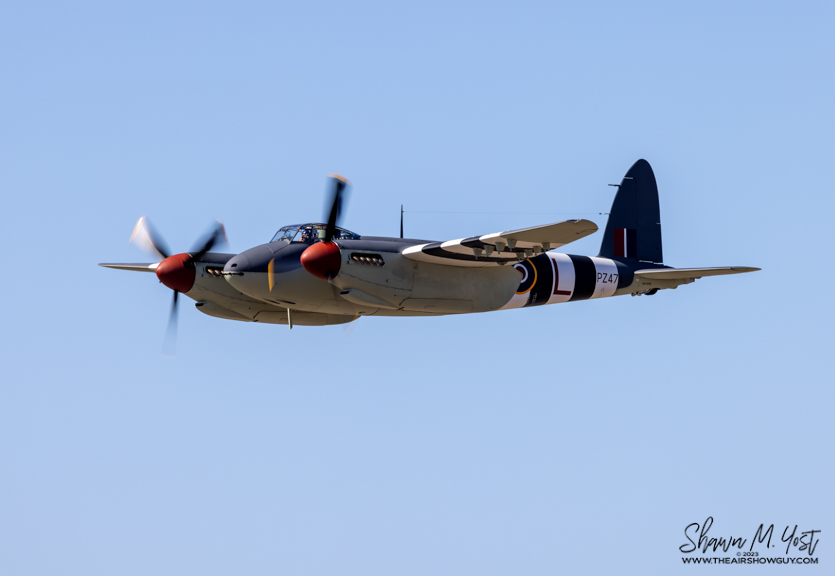


High Alpha Airshows MIG-17
Jason Somes flew an incredible jet aerobatics routine in his MIG-17. It was a treat to see Jason, as he primarily performs on the West Coast. His display included several nice burner passes and also several in close photo passes.




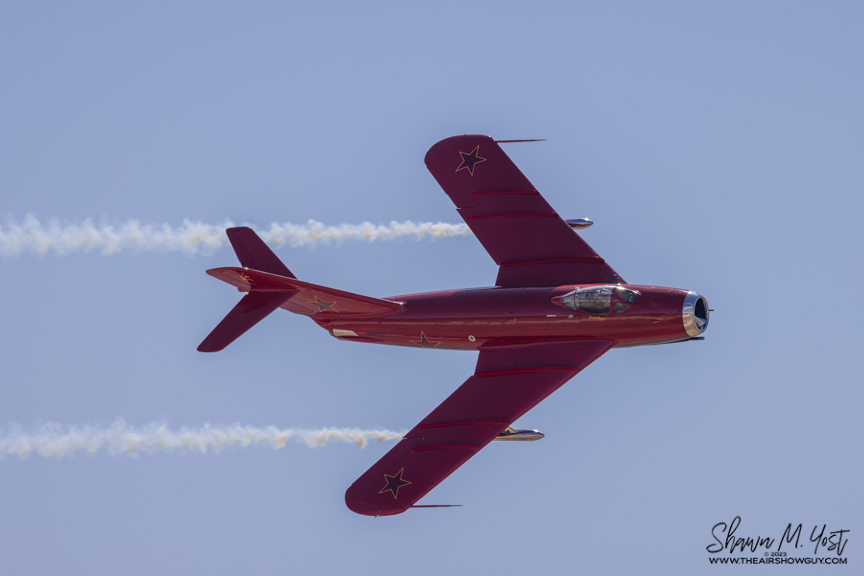
Lockheed Formation Flight
The surprise formation flight included a Howard 500 and a P-38 Lightning, piloted by Chris Fahey. The Howard was a new design business aircraft, that has strong roots in the original Lockheed Lodestar and Ventura designs of the WWII era. It was the first time seeing a Howard, and it is a real beauty of an aircraft.






Eric Tucker
Justin Ramsier drives a 1990 ambulance while Eric Tucker pilots his J-3 Cub from a platform attached to the ambulance roof. Eric does not consider this flying style as “stunt flying” but instead sees it as formation flying. In order to land on a moving truck, one has to position oneself properly before moving into a landing position. It is a remarkable feat, especially when the winds are higher. Eric is another performer that primarily works on the West Coast, so it was a treat to his his performance.


Vicky Benzing Stearman Aerobatics
The big red biplane is a Stearman built in 1940. The airframe served during WWII and then began its life as a crop duster. A larger engine was put on but the bulk of the aircraft is stock. Vicky purchase the aircraft in 1998 and has since been performing in the aircraft on the West Coast. The aircraft is mostly stock, so it takes both hands to make the plane perform so smoothly. It also lacks an inverted fuel system, so it is flown with positive G forces, similar to the WWII aviators.




USMC MV-22 Osprey Demo
Santa Maria was one of only a handful of demo locations for the USMC MV-22 Osprey. The Osprey is the Marines’ medium lift helo, and is used for amphibious assault transport of troops, transport of equipment and supplies from assault ships and land bases.

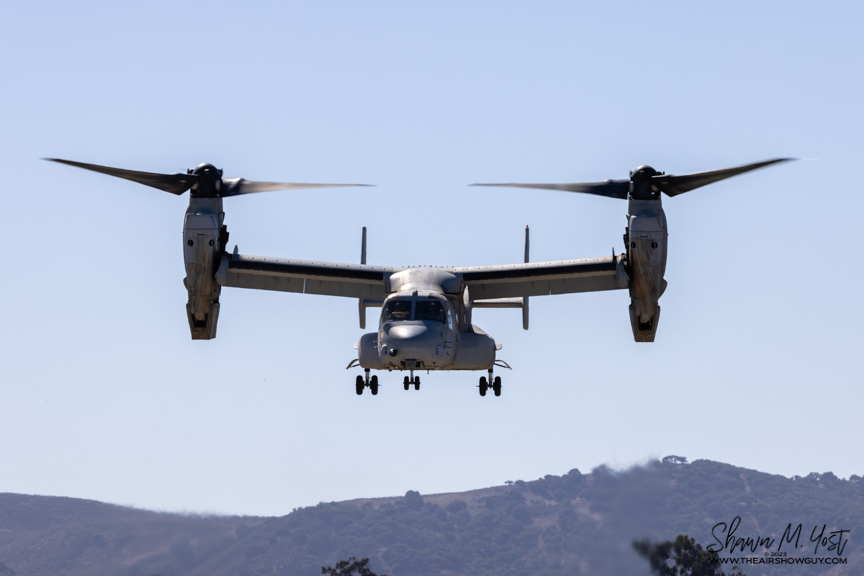








P-47 Thunderbolt “Bonnie” Aerobatics
Bonnie is the 2023 Grand Champion award winner at Oshkosh. Bernie Vasquez brought the plane out to Santa Maria and put her through a fantastic aerobatic routine, which included several nice photo passes. Bonnie is owned by the Dakota Territory Air Museum, and is currently the only Republic Aviation built “D” model flying. She is a beautiful aircraft, and a rarity being in PTO livery.

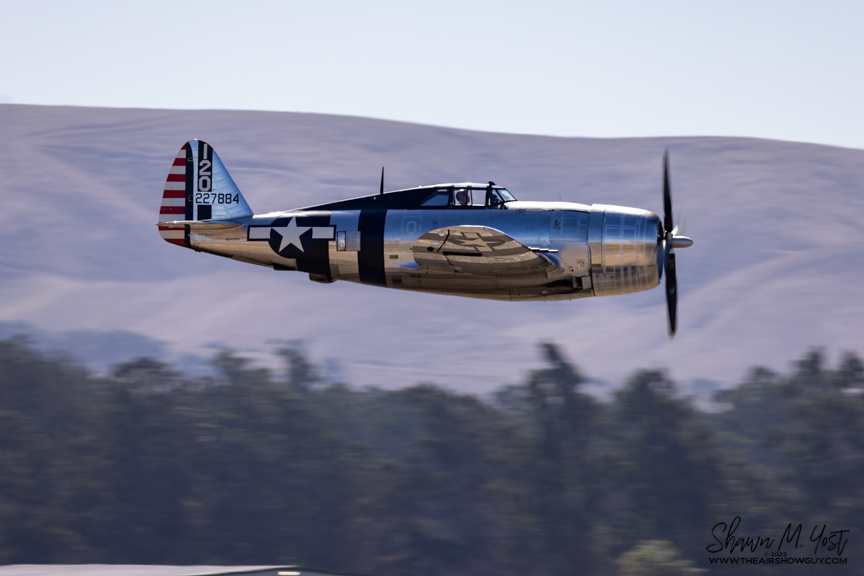



USAAF ETO Aircraft Parade
Certainly one of the weekend highlights was the parade of WWII aircraft. The ETO parade included the Planes of Fame P-40, and their P-51A Mustang “Miss Virginia” and P-51D Mustang “Spam Can/Dolly”. Warhawk Air Museum brought their P-51C Mustang “Boise Bee”, and the three Mustangs flew several nice formation passes. Lost Coast Warbirds flew their recently restored B-25 Mitchell “Sweet Dreams”. P-51D Mustang “Sweet and Lovely” also flew in the parade and formed up with the B-25.









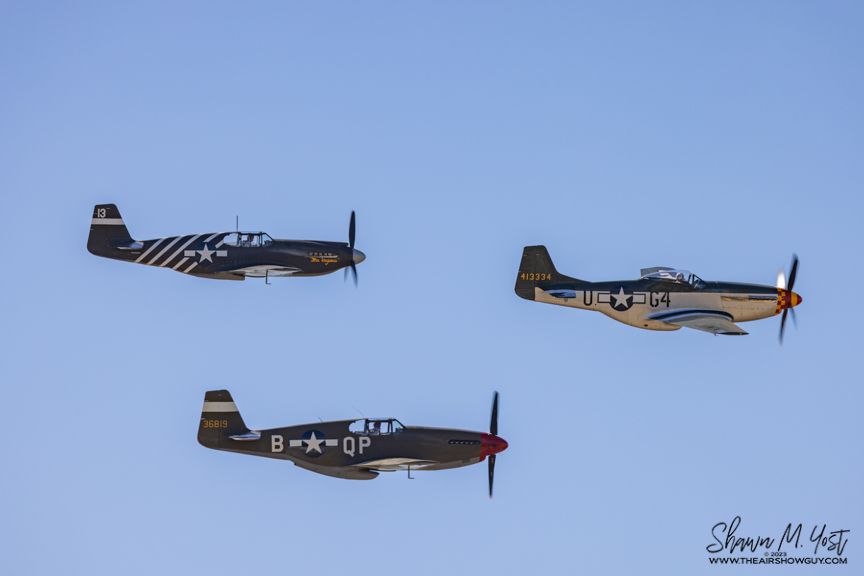


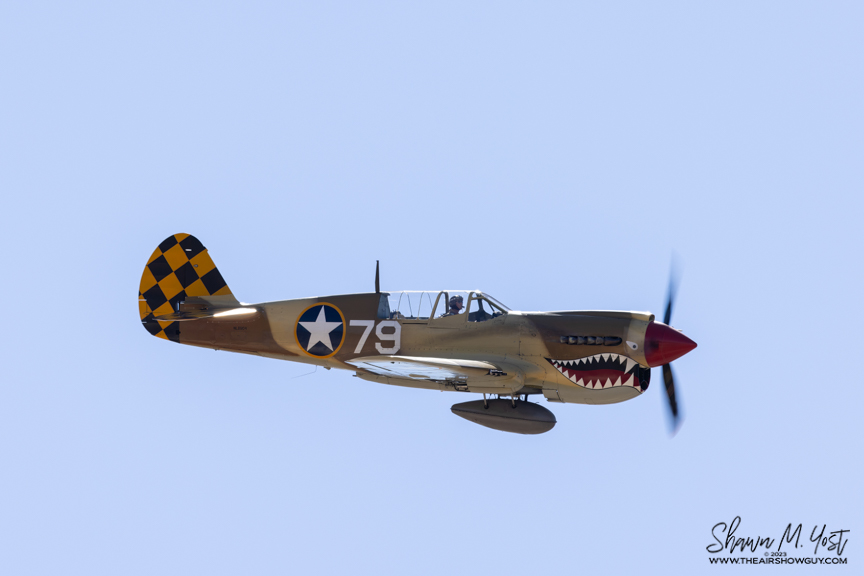

Sanders Aeronautics Sea Fury Aerobatics
Dennis Sanders put the Sea Fury through a visually appealing demo that showcased the power and grace of the Sea Fury. The smoke system is unique and designed by the owners, which provides some smoke rings at times due to the wake turbulence.

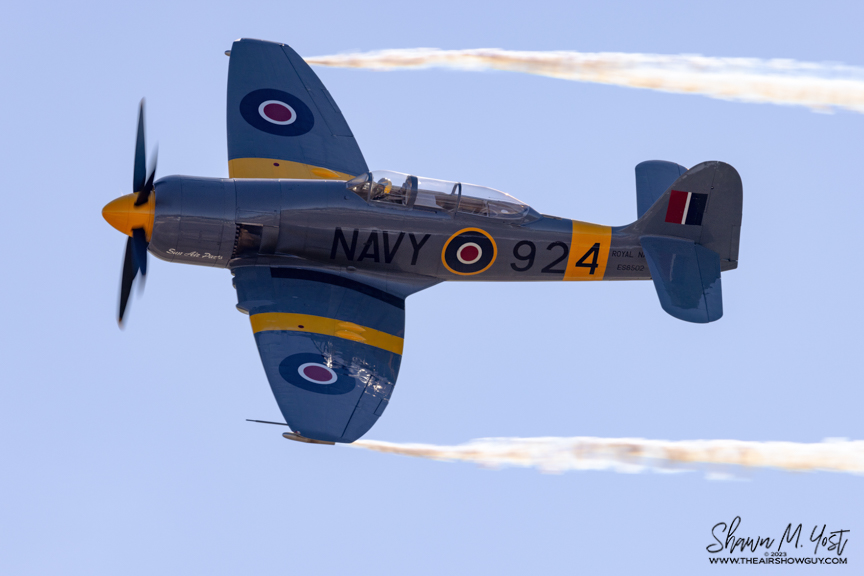

F/A-18 Rhino Demo Team (West Coast) and Legacy Flight
The West Coast F/A-18F Super Hornet “Rhino” Demo Team was onboard to provide some Naval Aviation to the show. The Rhino Demo team comes from VFA-122 “Flying Eagles” based at NAS Lemoore. With the airfield being close to the coast, the atmosphere was perfect for some vapor.



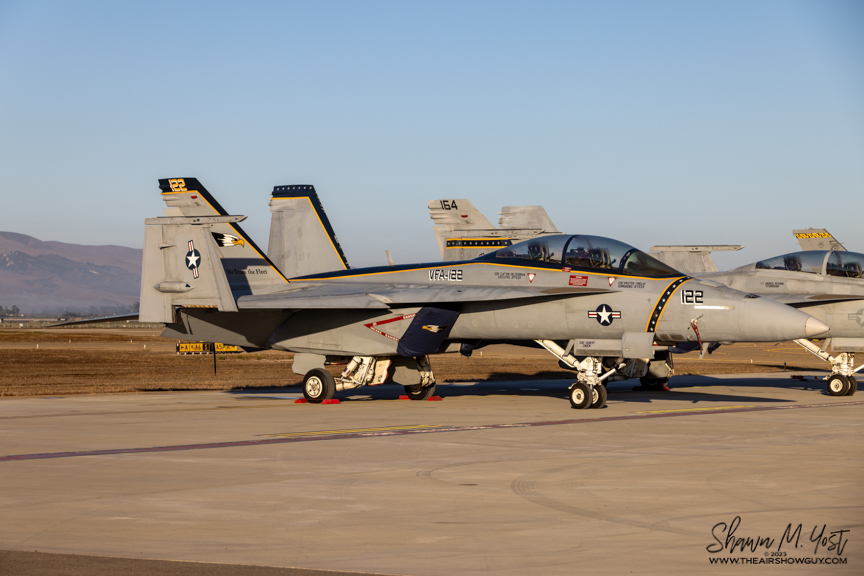
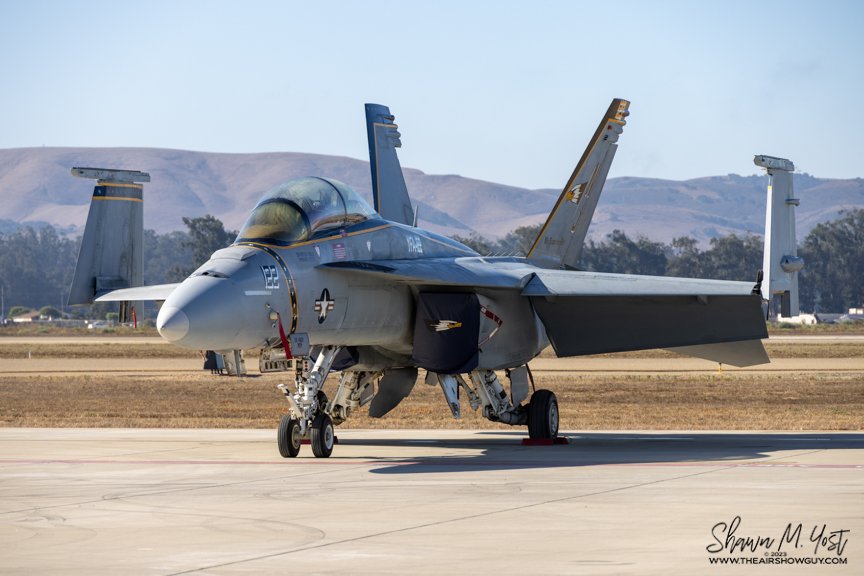
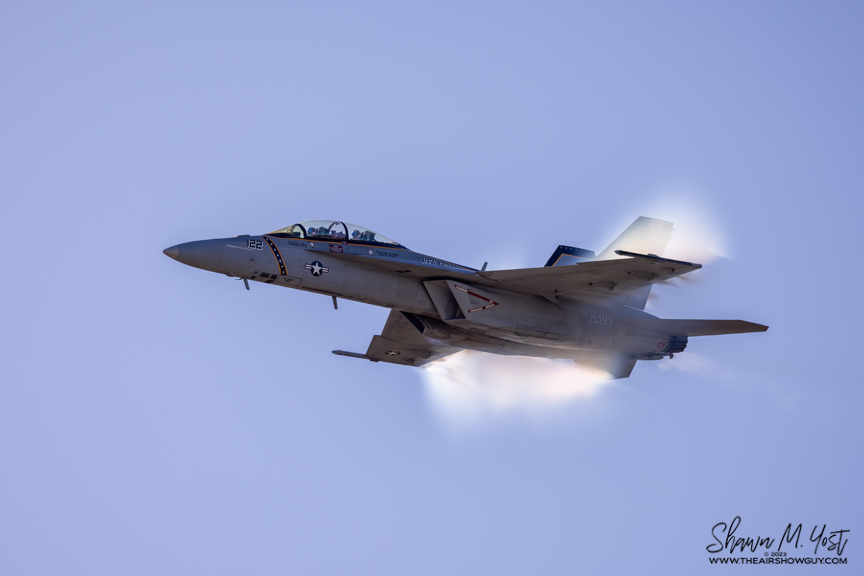
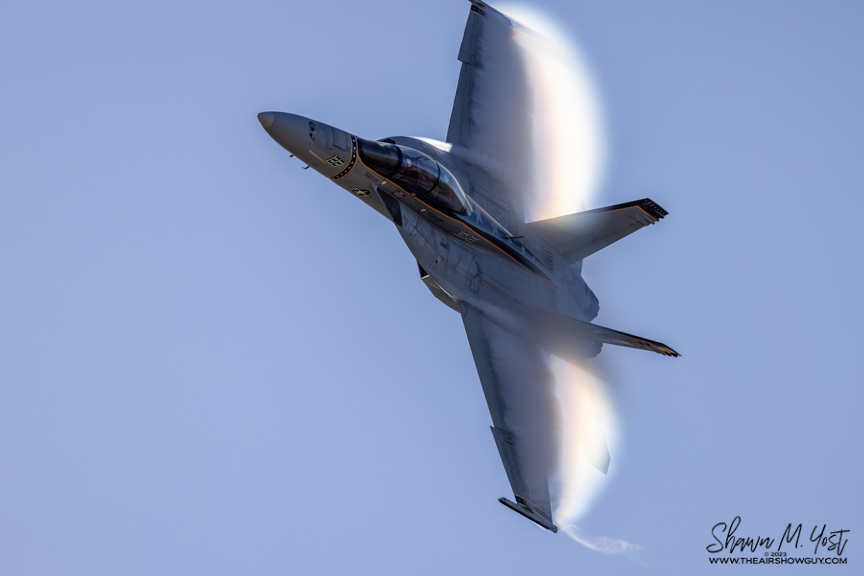

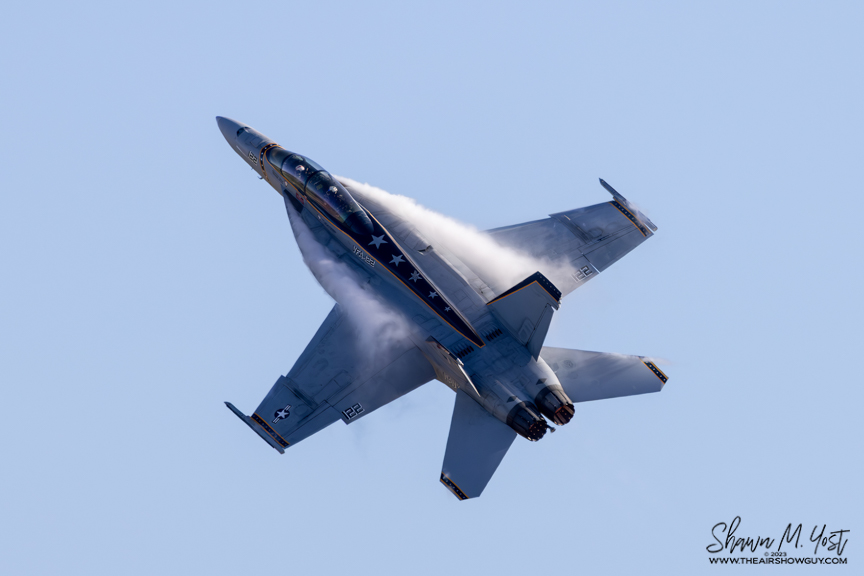




The Legacy Flight included the Planes of Fame F8F-2 Bearcat piloted by John Hinton




US Navy PTO WWII Aircraft Parade
The PTO aircraft parade included several aircraft from the Planes of Fame collection, including the SBD Dauntless, TBM Avenger and F8F-2 Bearcat.
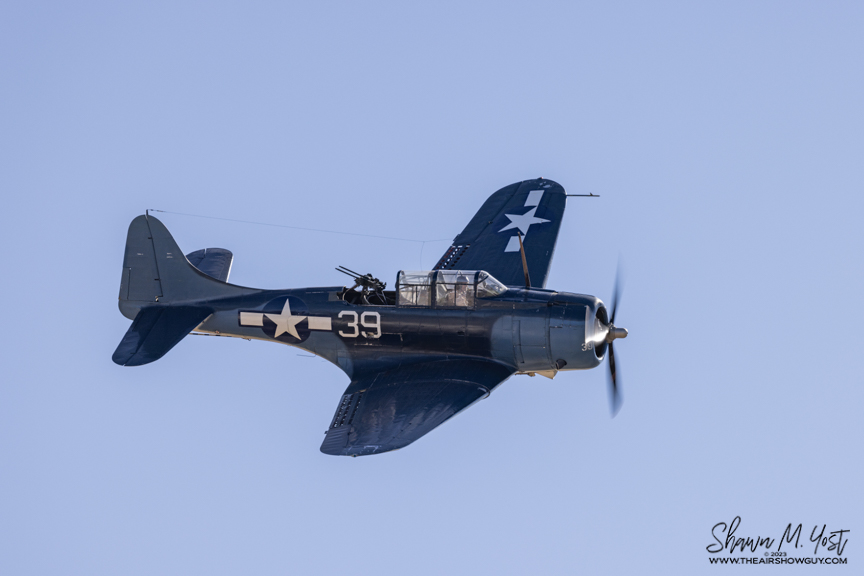


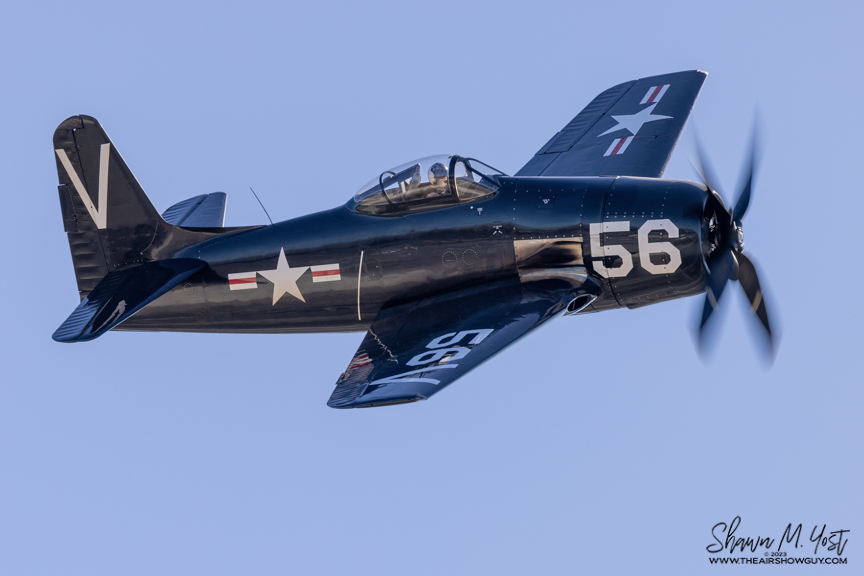


Korean War Dog Fight
The Korean War was also covered, with a simulated dog fight between the two titans fighter planes of the time. The MIG-15 was piloted by Chris Fahey and the F-86 was piloted by Steve Hinton. Both aircraft belong to the Planes of Fame museum. Both aircraft had strengths and weaknesses, so the advantage went to the respective pilots.
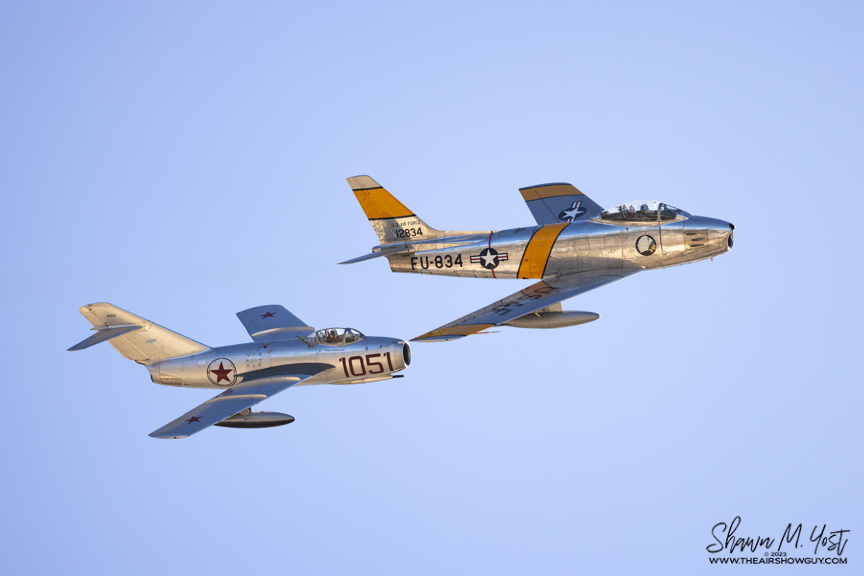

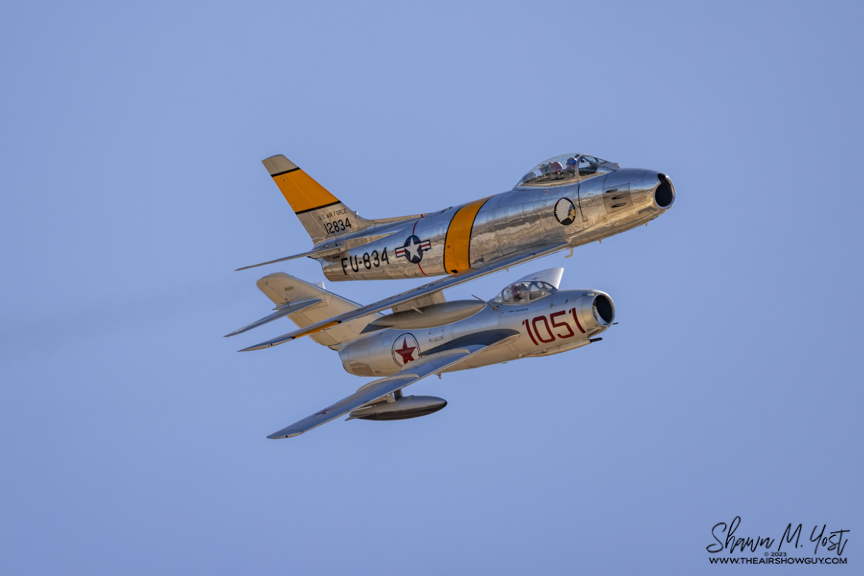

Greg Colyer T-33 Shooting Star Aerobatics
Greg Colyer flew the “Ace Maker” T-33 Shooting Star. Greg is very well known in the airshow industry and puts on a graceful display in the 1950s era T-33. The airframe is actually a Canadair built Shooting Star for the Royal Canadian Air Force. She wears the scheme of the USAF and the T-33 was the advanced trainer for the USAF and many allied nations for a number of years. It looks like a very fun and smooth aircraft to pilot.

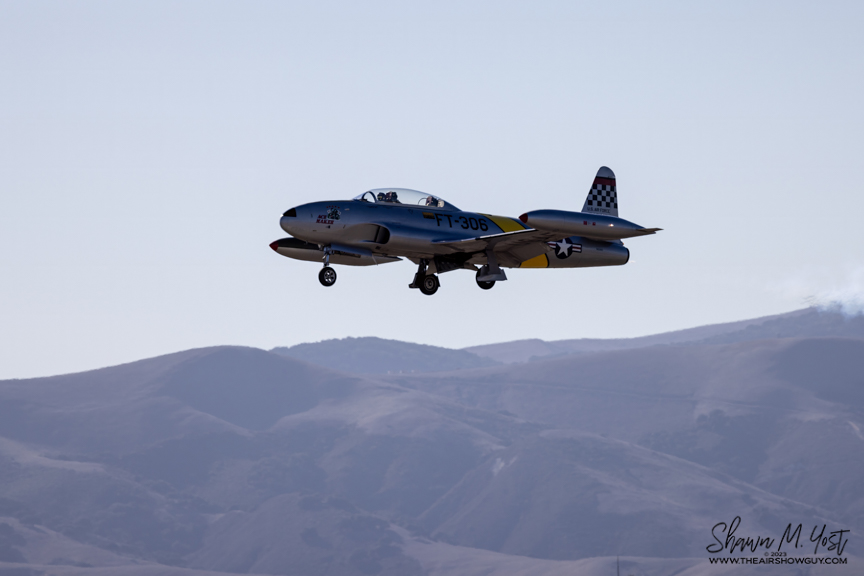


USAF F-16 Viper Demo and Heritage Flight
Capt. Aimee Fiedler piloted the F-16 Viper. This was one of her last shows as Viper Demo Pilot and one of the last in the current scheme of “Venom”. It was difficult to get worthy photos as the sun was directly before us by the time the demo went up.





The Heritage Flight portion included the P-51A Mustang, piloted by Steven “Steve-O” Hinton Jr.

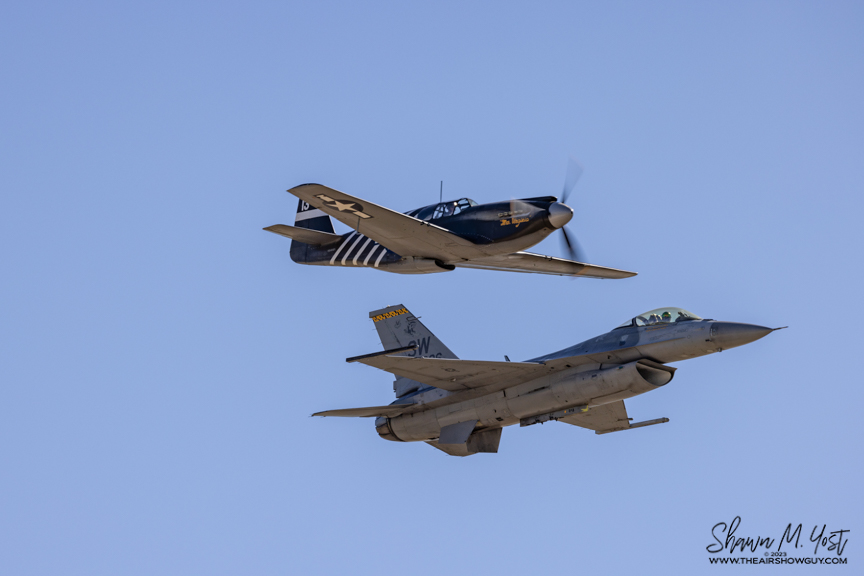

Around the Field…
It was fantastic being on the West Coast again surrounded by many of the Planes of Fame and other museum’s aircraft. Saturday’s weather was prohibitive of taking many worthy photos in the morning due to the heavy fog. Sunday was the complete opposite, with a fantastic blue sky and great mountain backdrop.



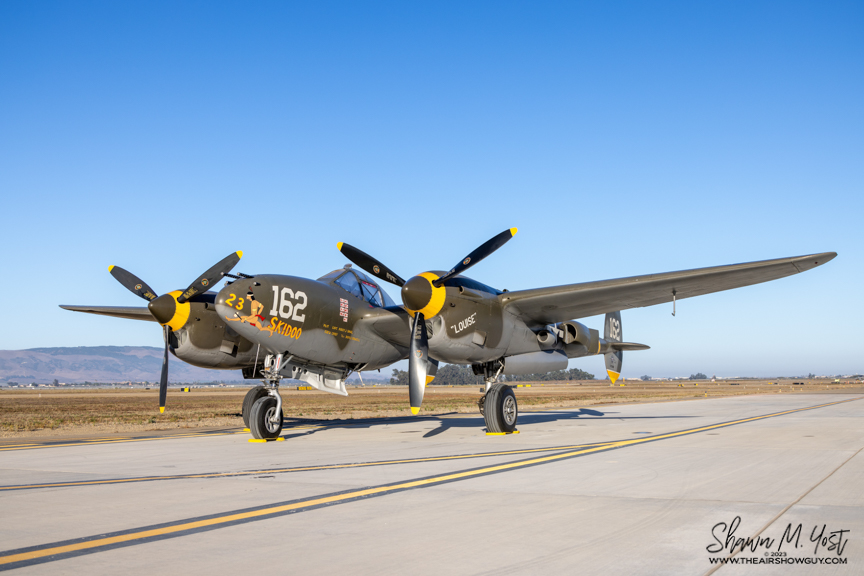




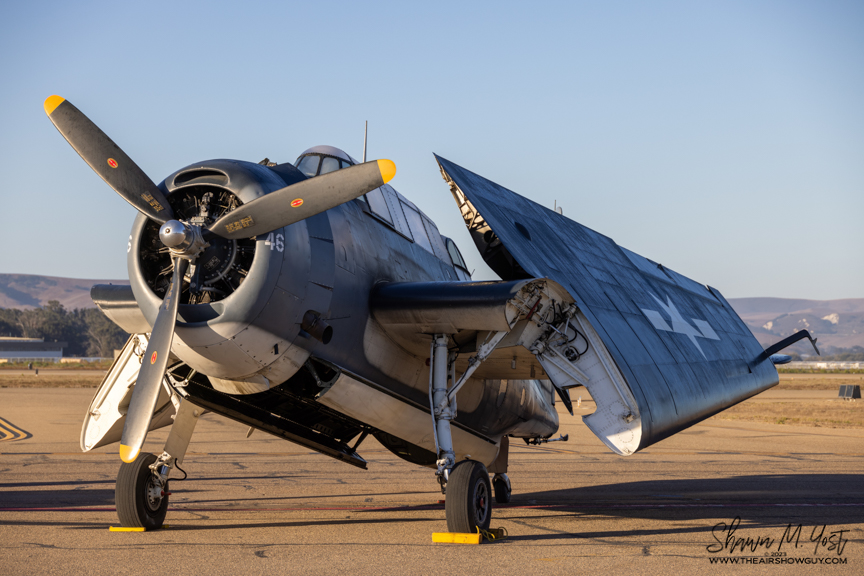

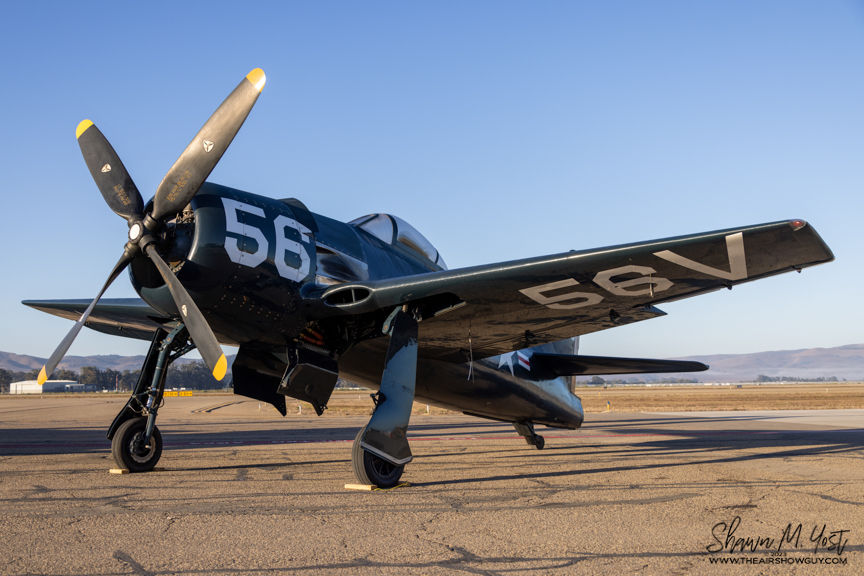

I had to dedicate an entire gallery just to the phenomenal P-47D Bonnie.
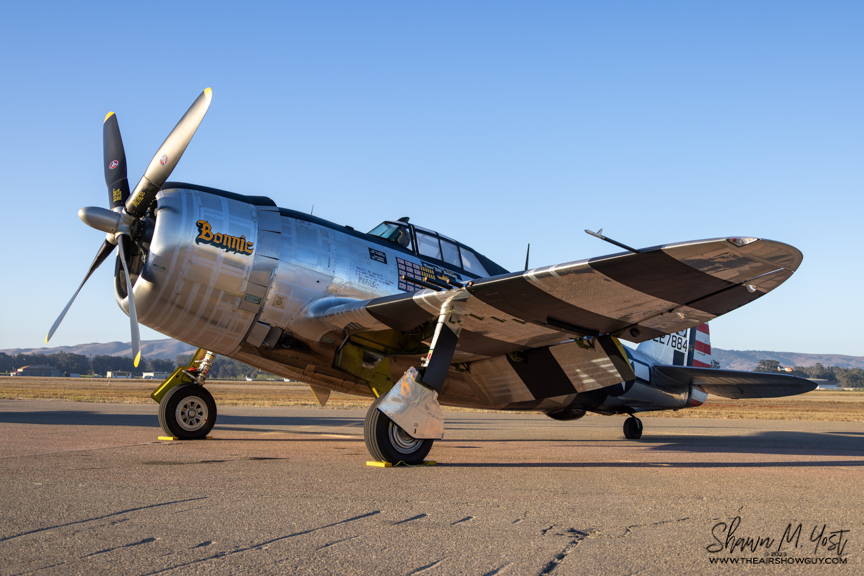
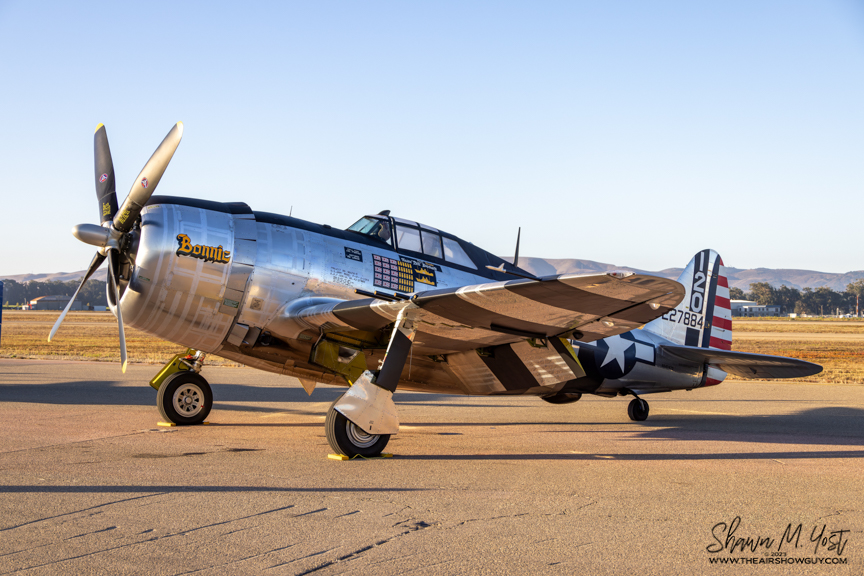
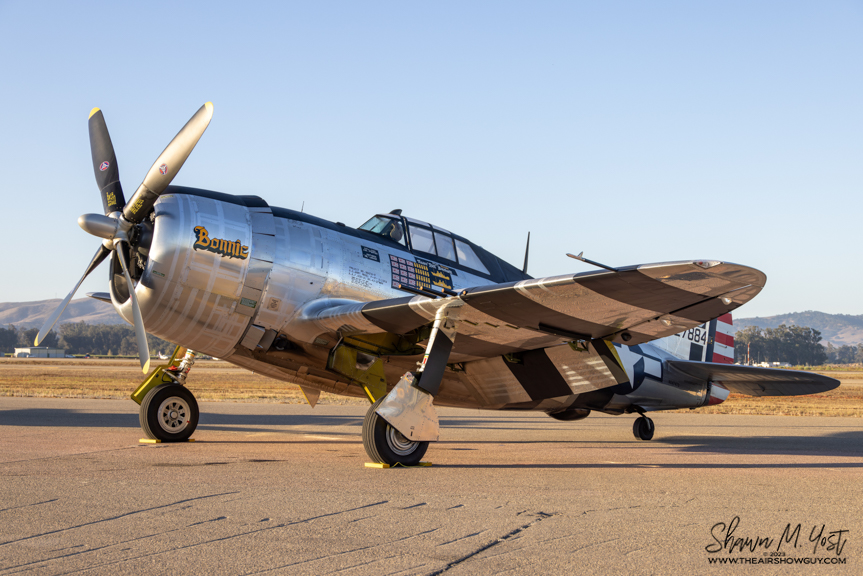

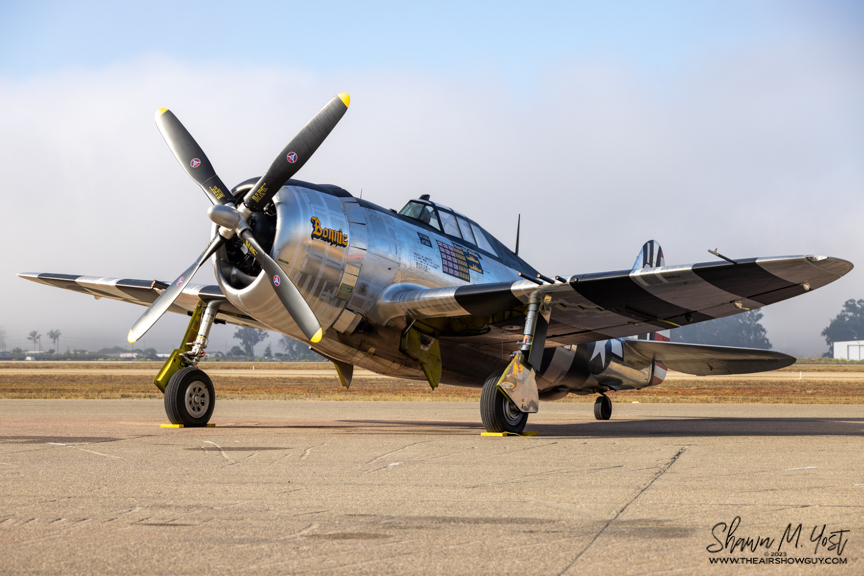

This was my first time out to Santa Maria, and I give the show high marks. It was well run and had a fantastic spread of aircraft, old and new. I enjoyed the blend of warbirds and modern day military aircraft. There was also few delays between acts, which was welcomed. Thank you to the Planes of Fame and Central Coast Air Fest crews for a fabulous weekend.


